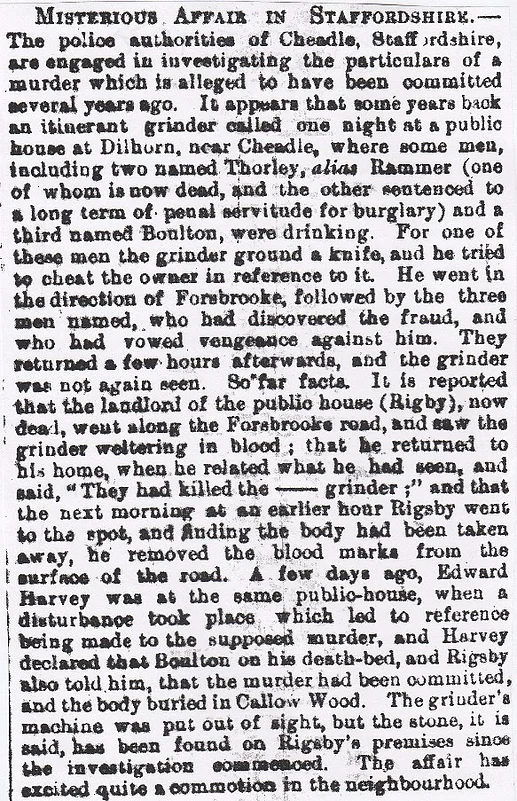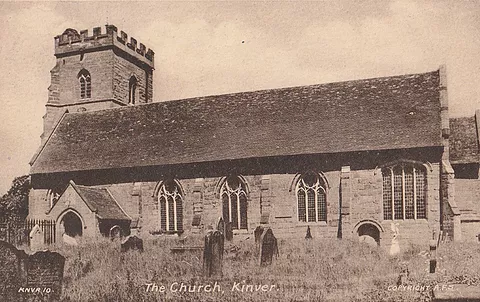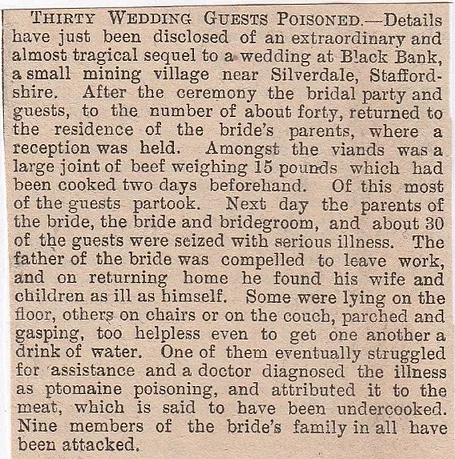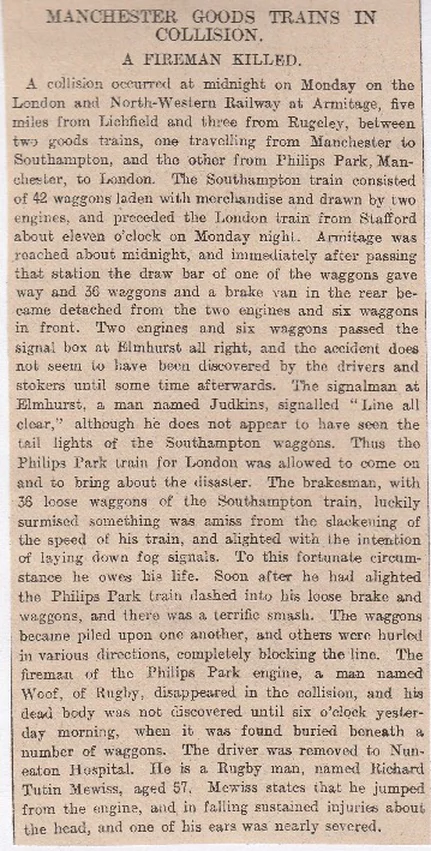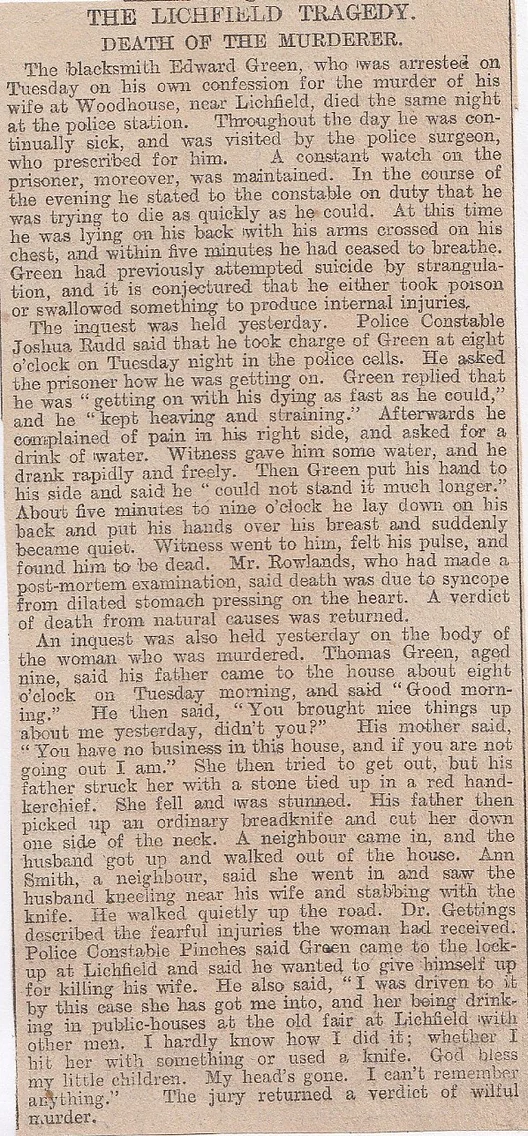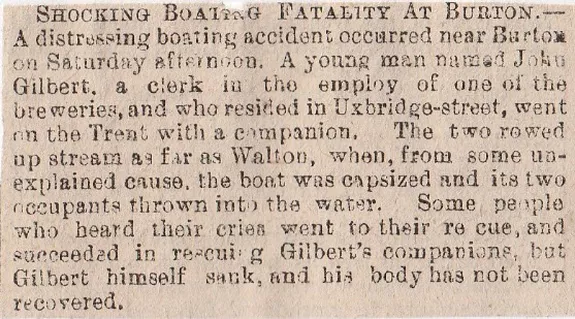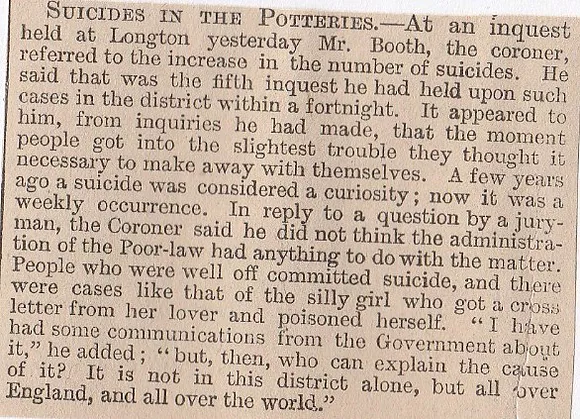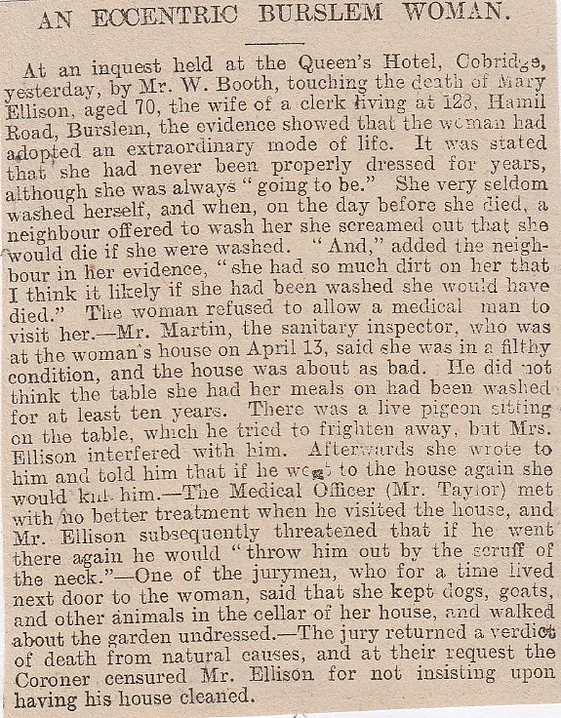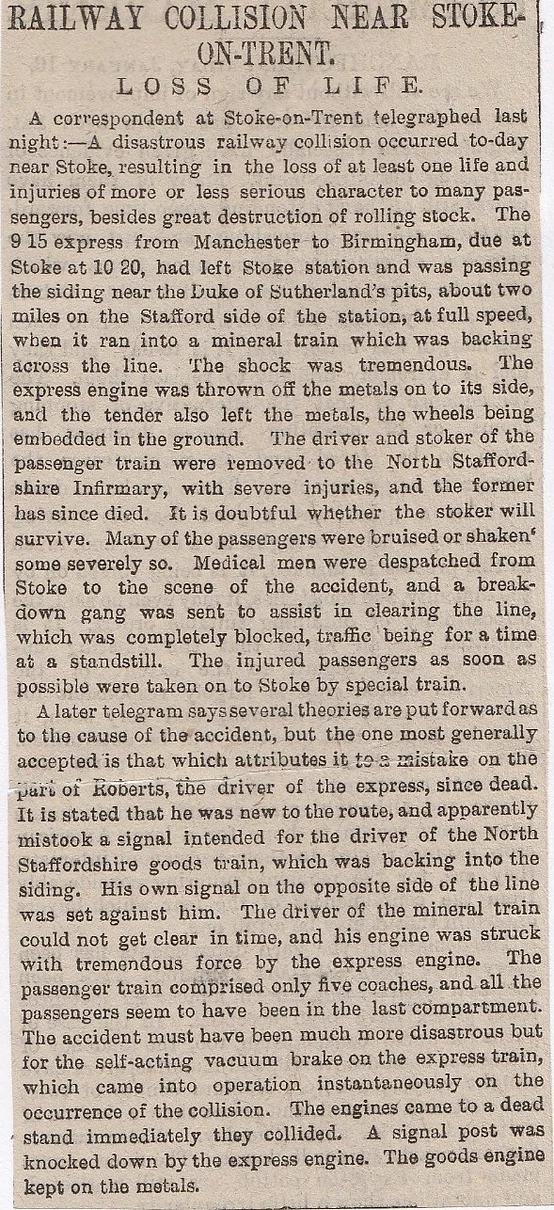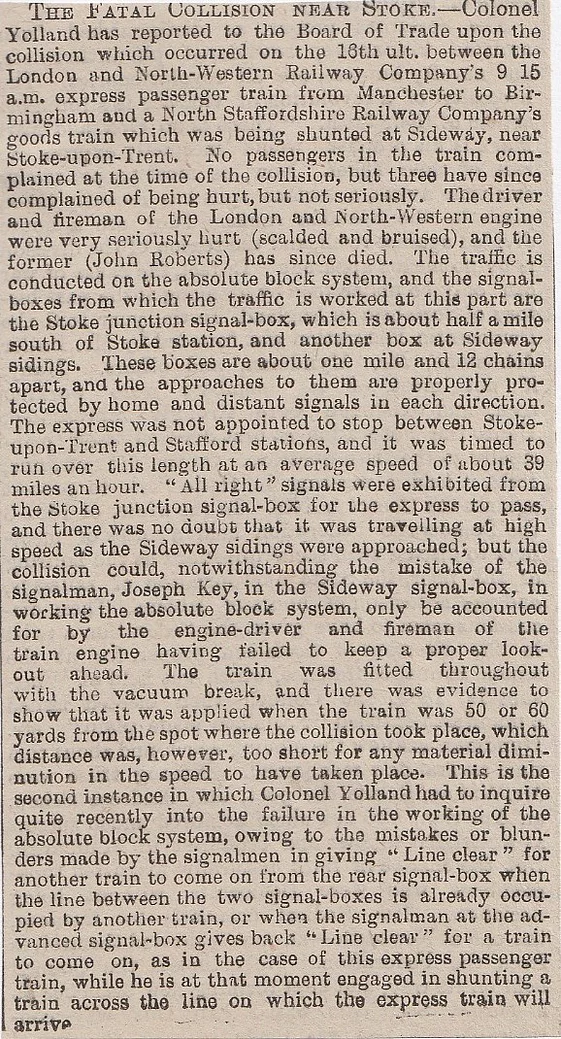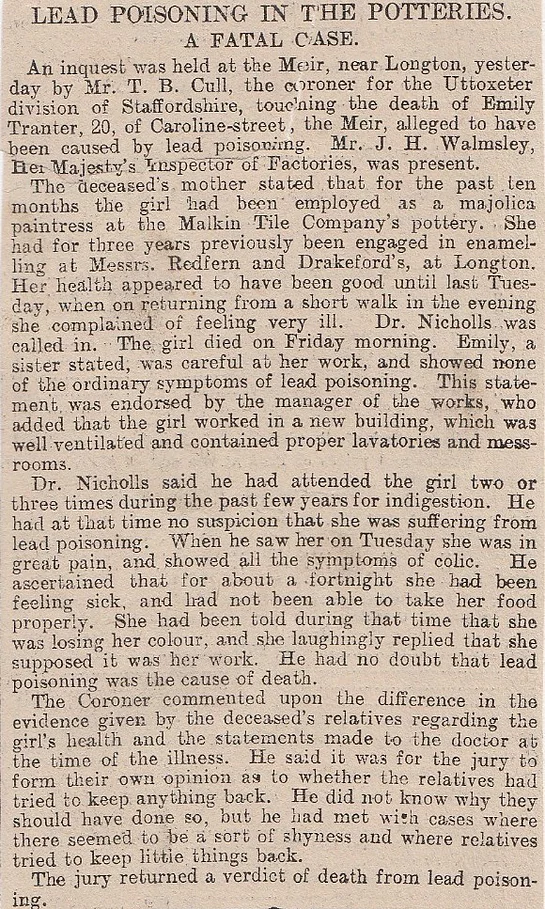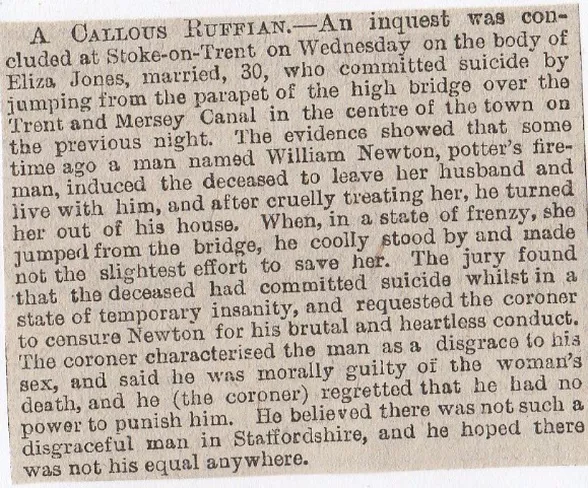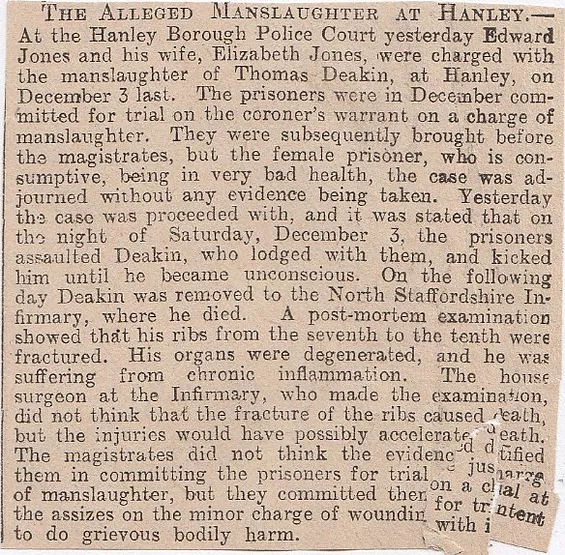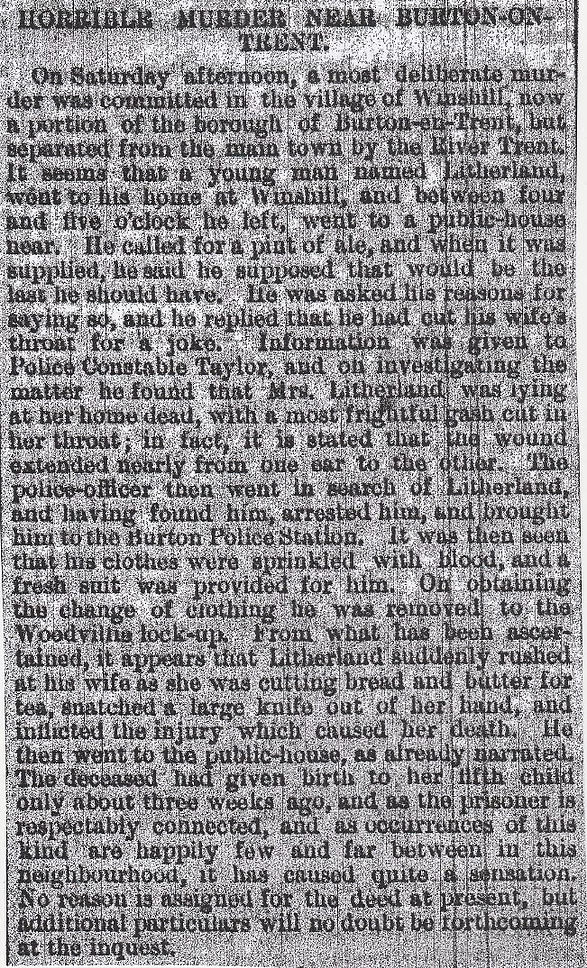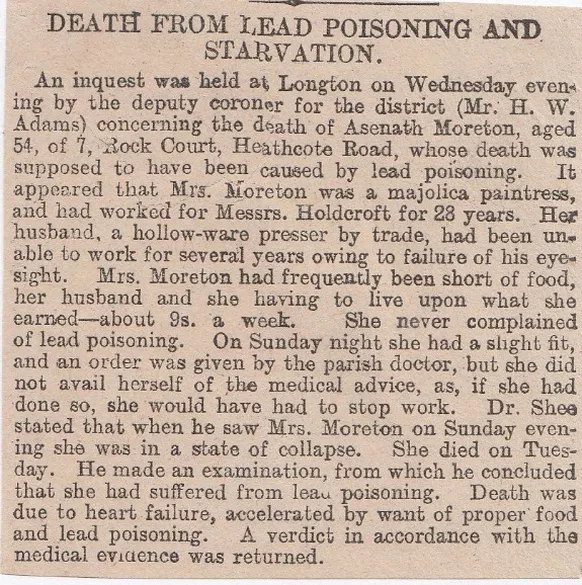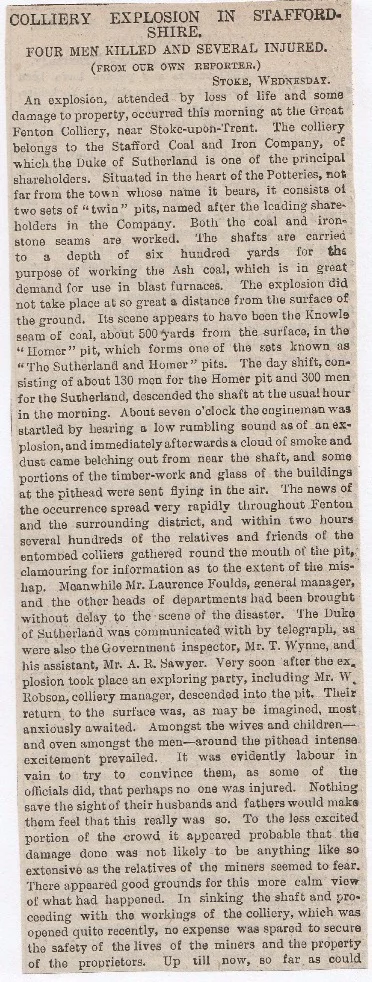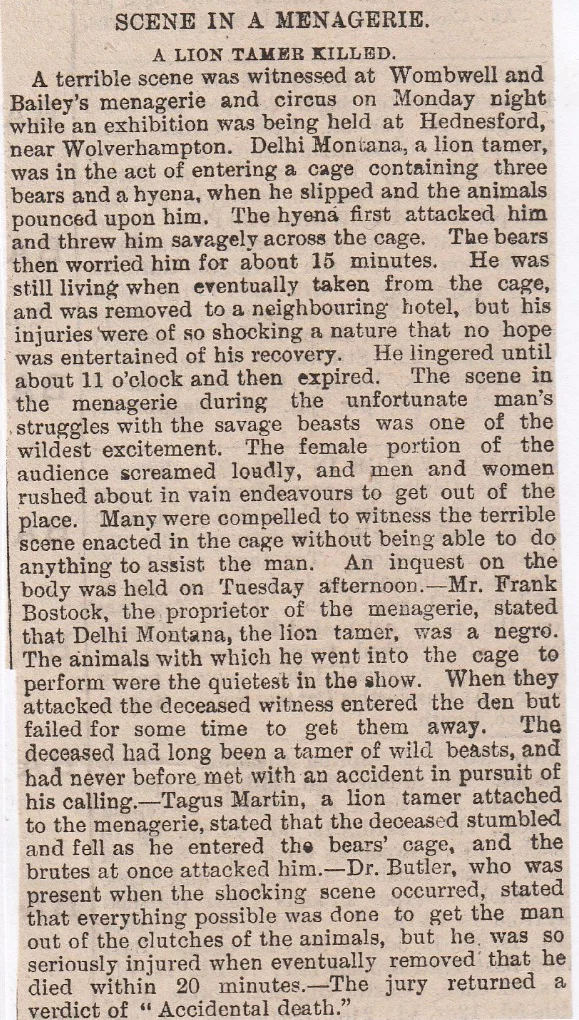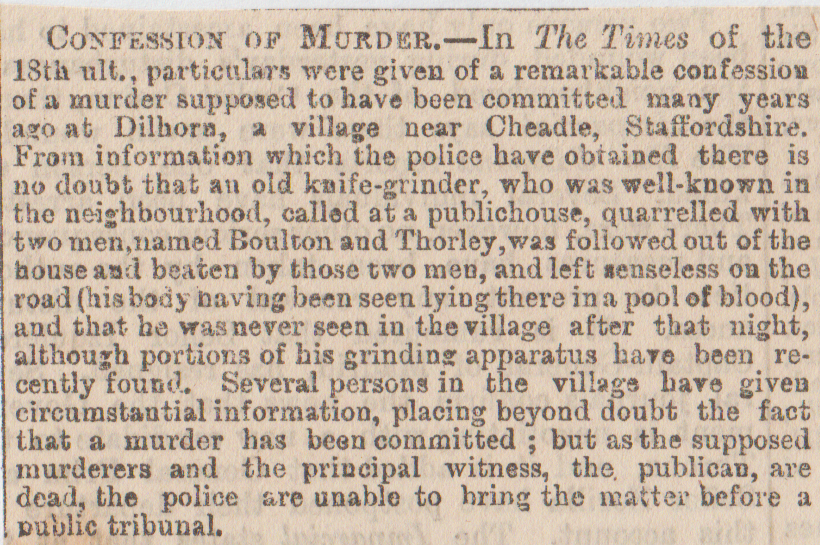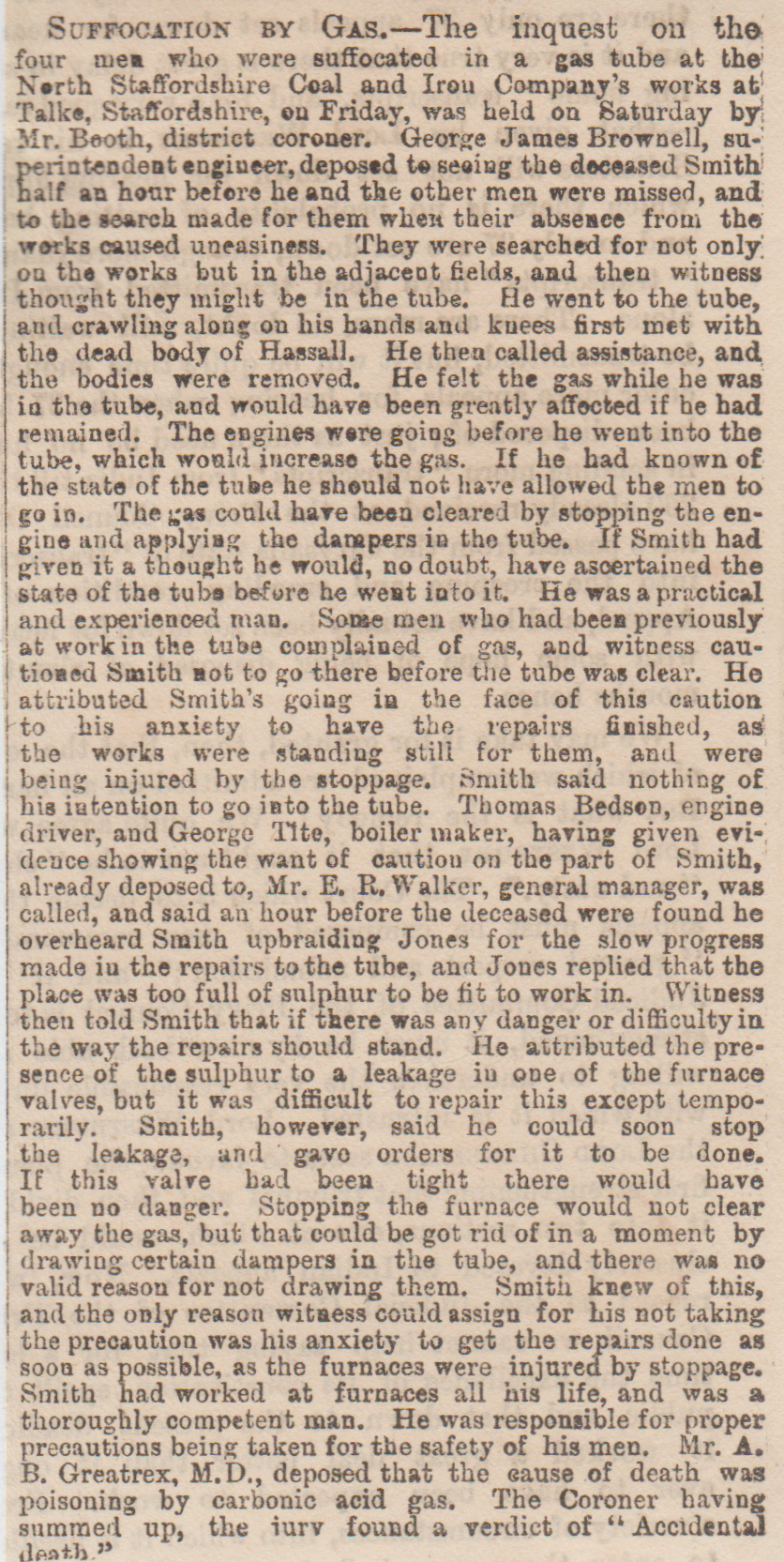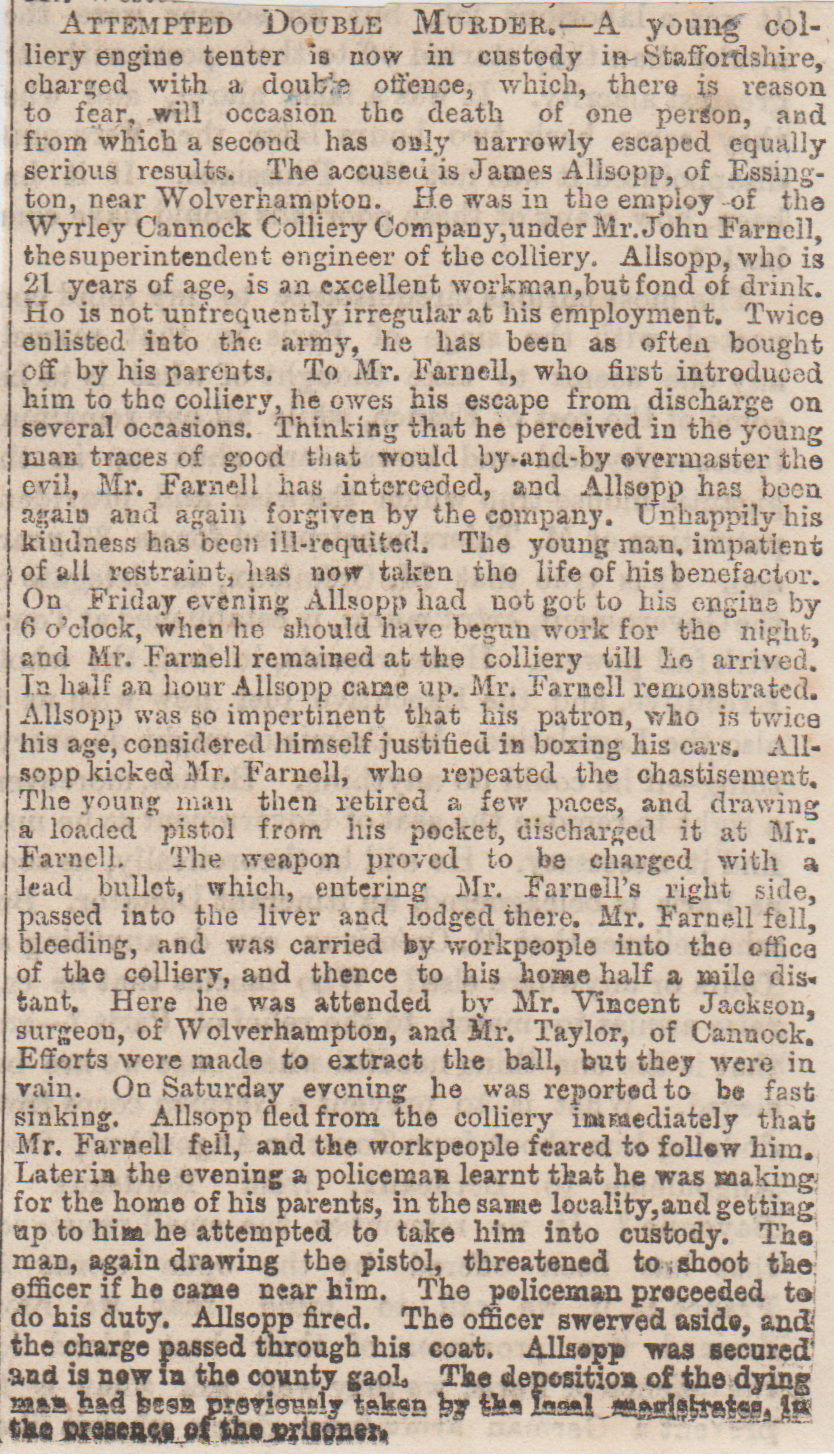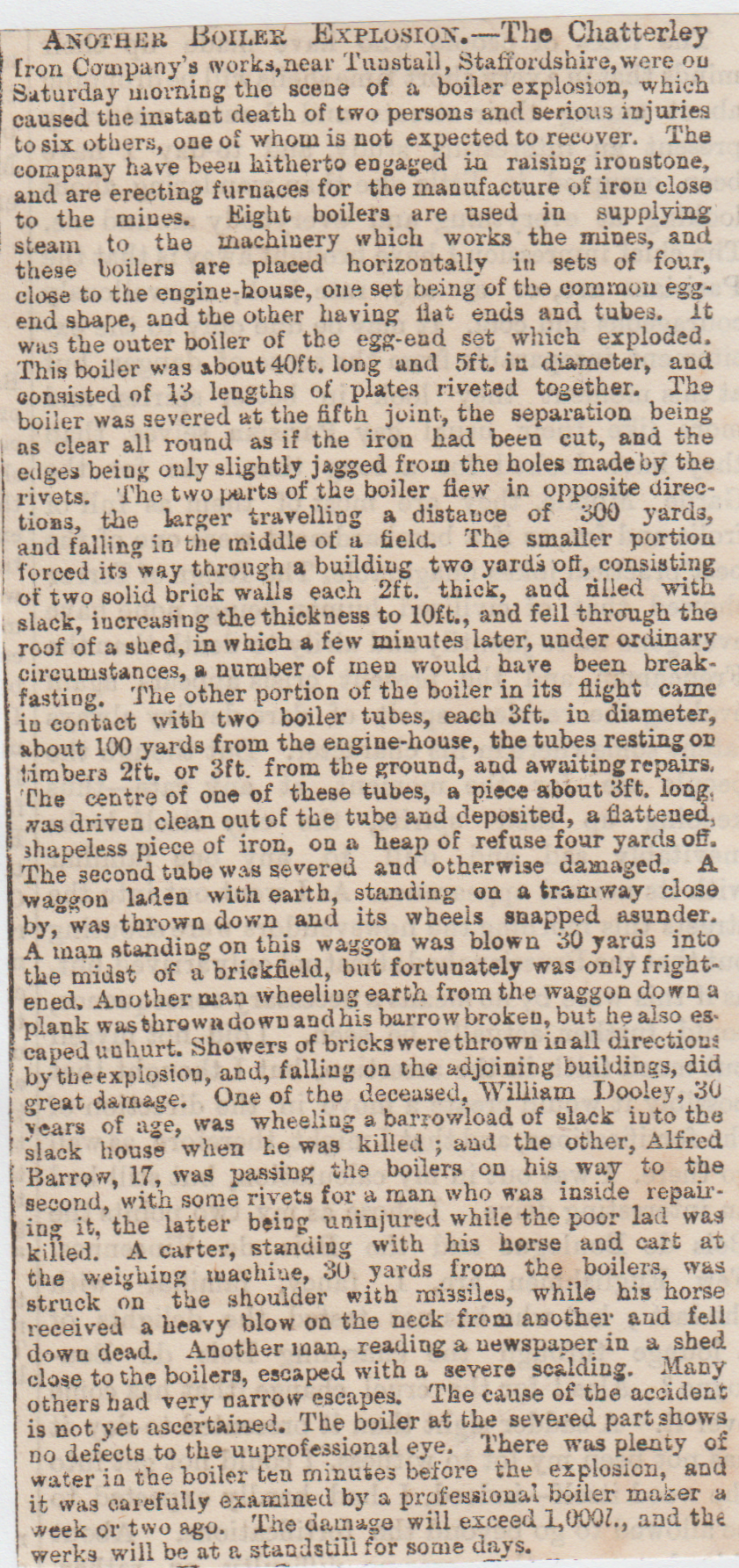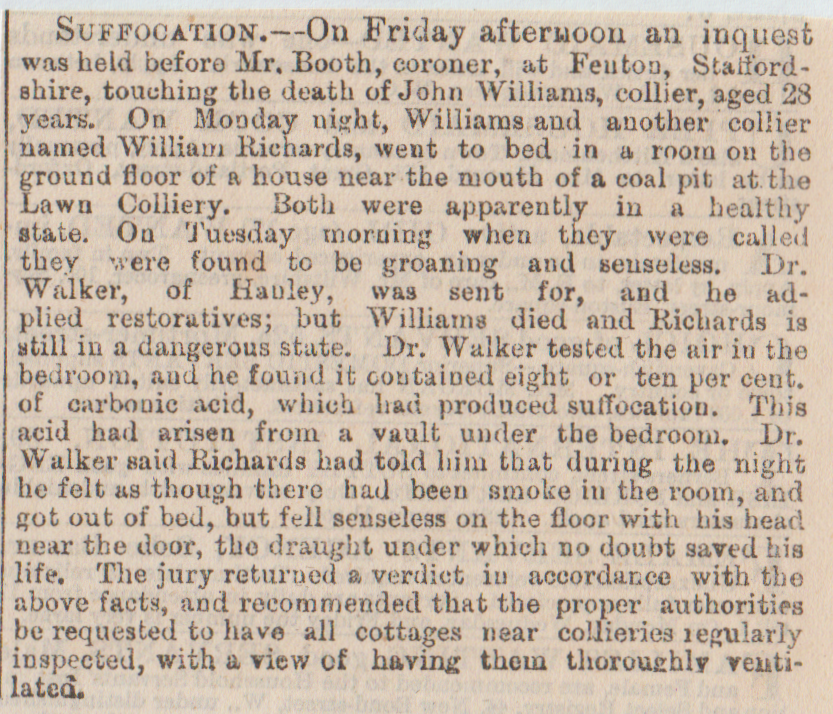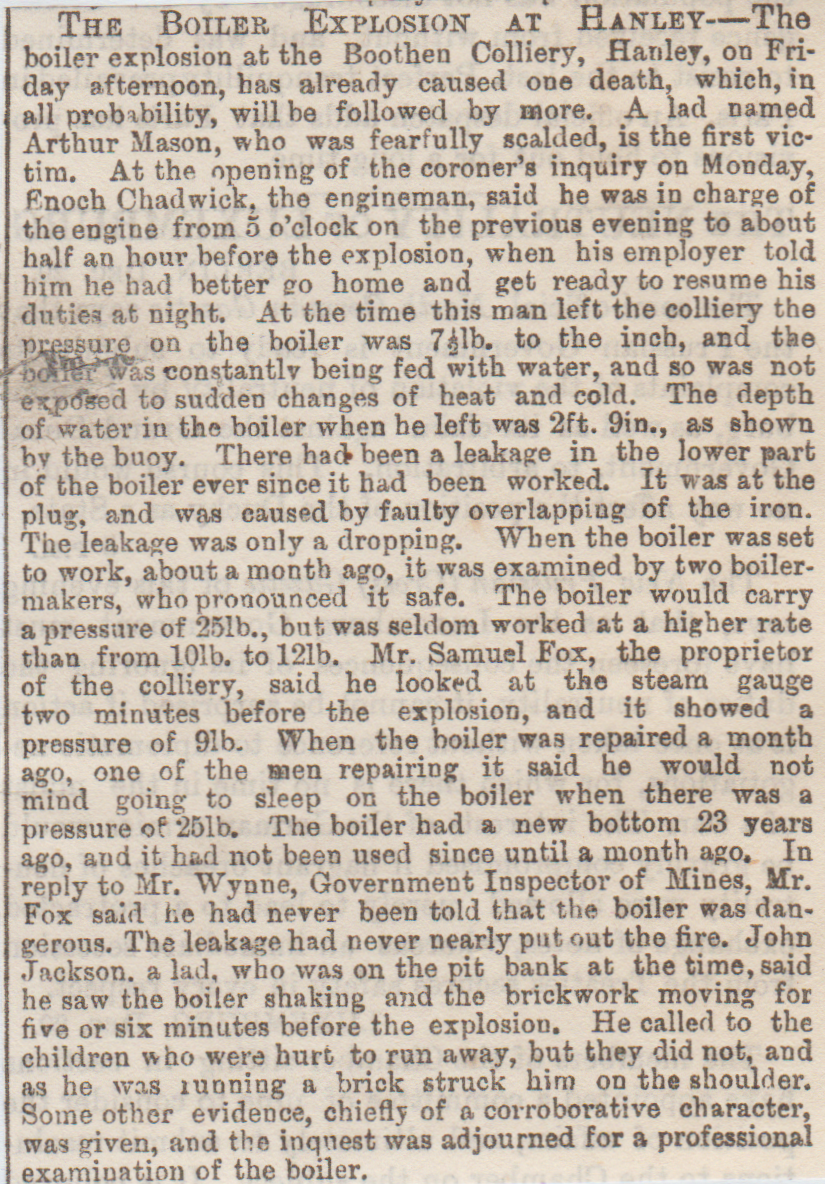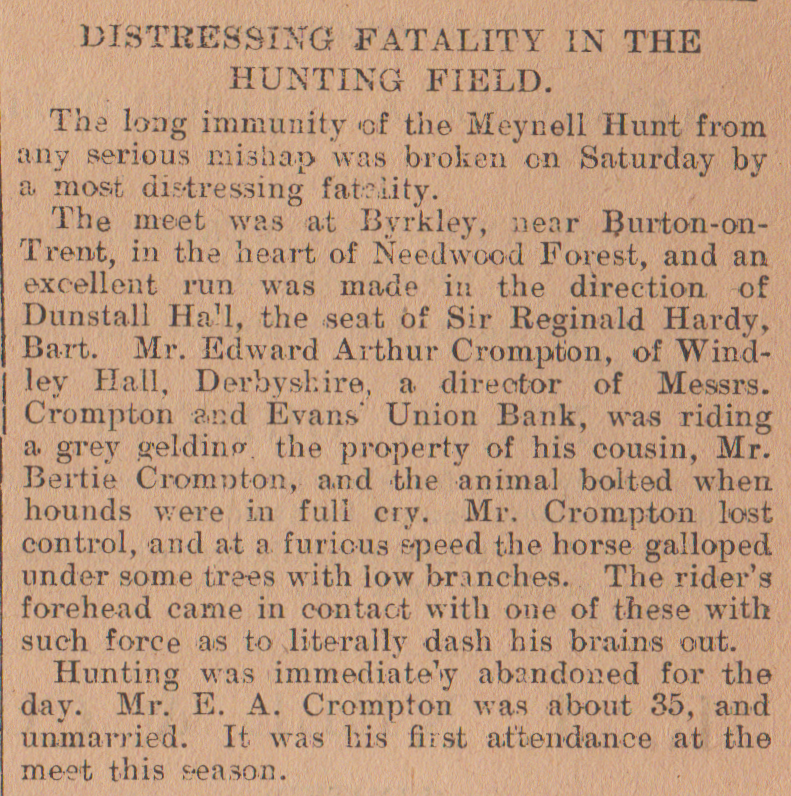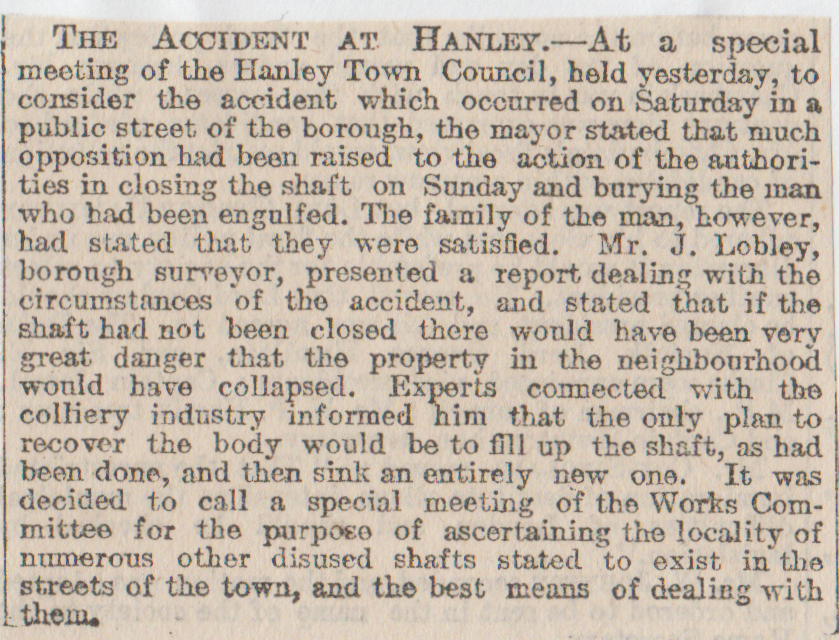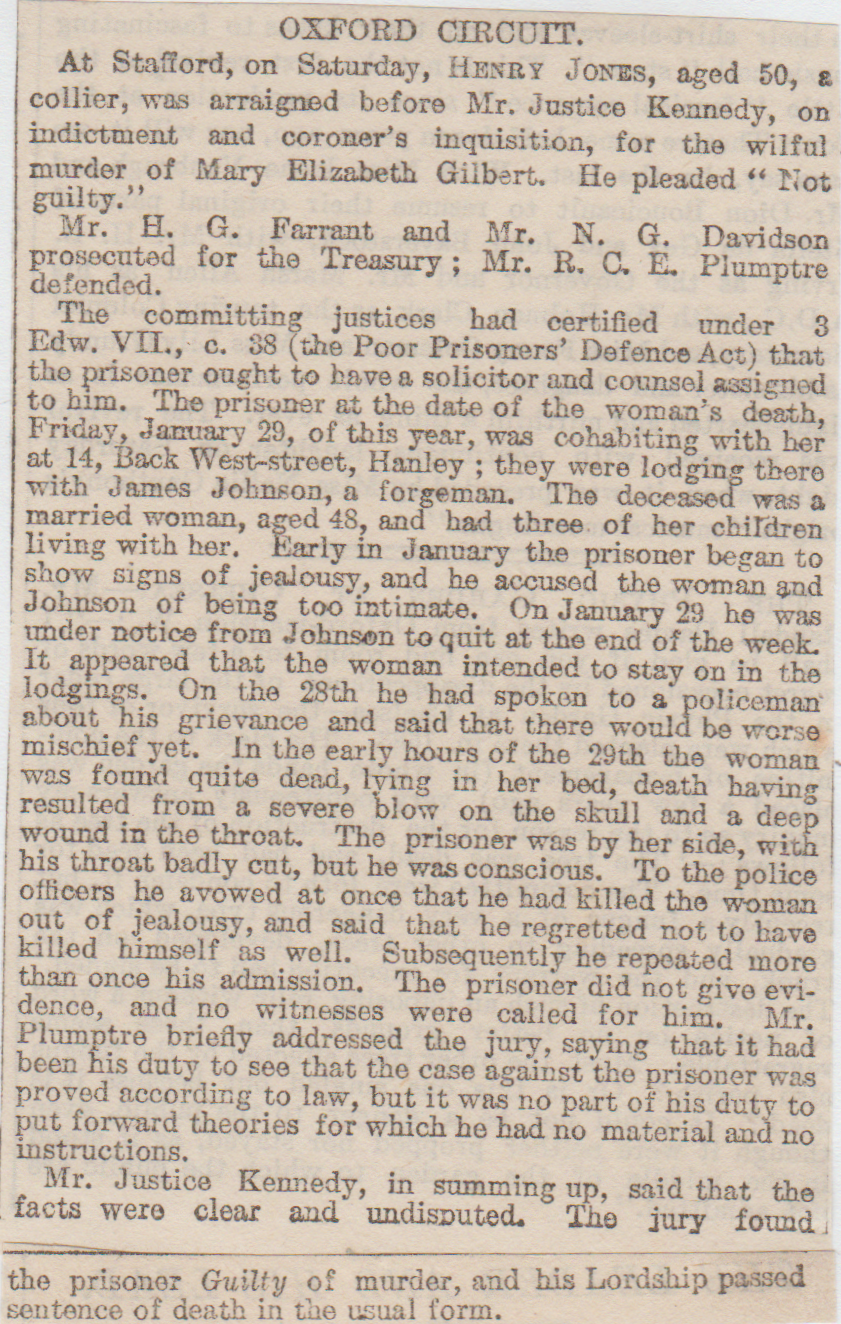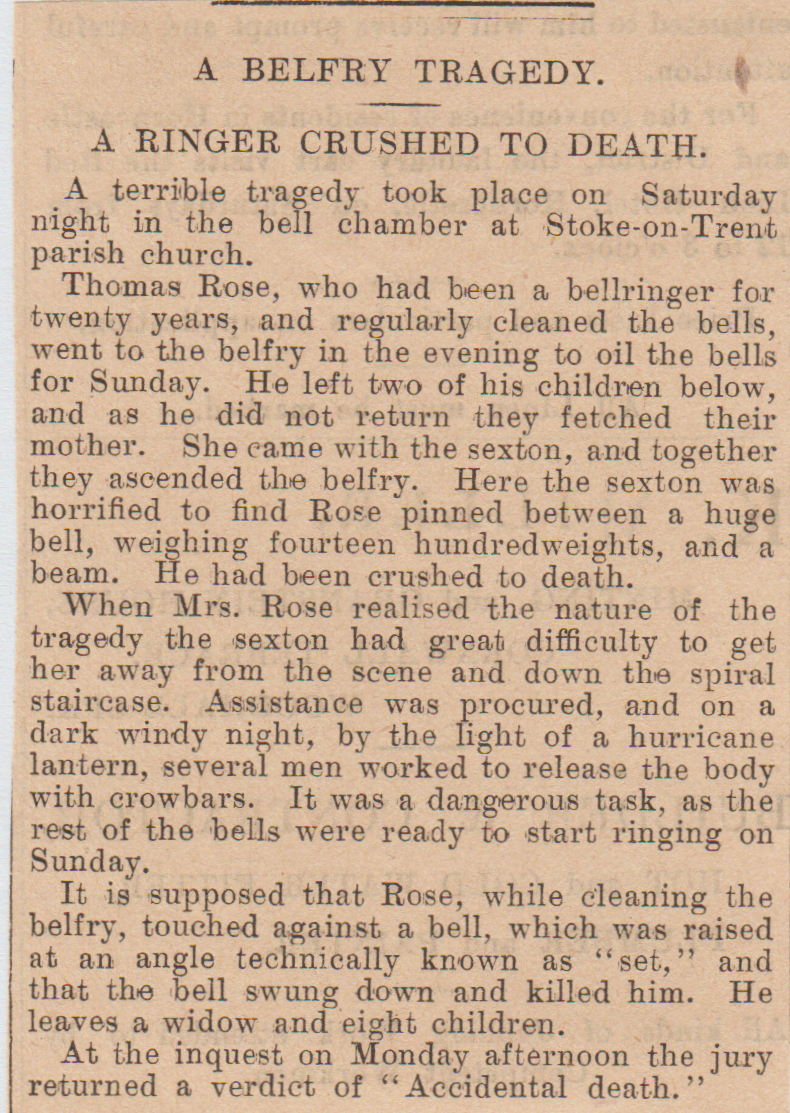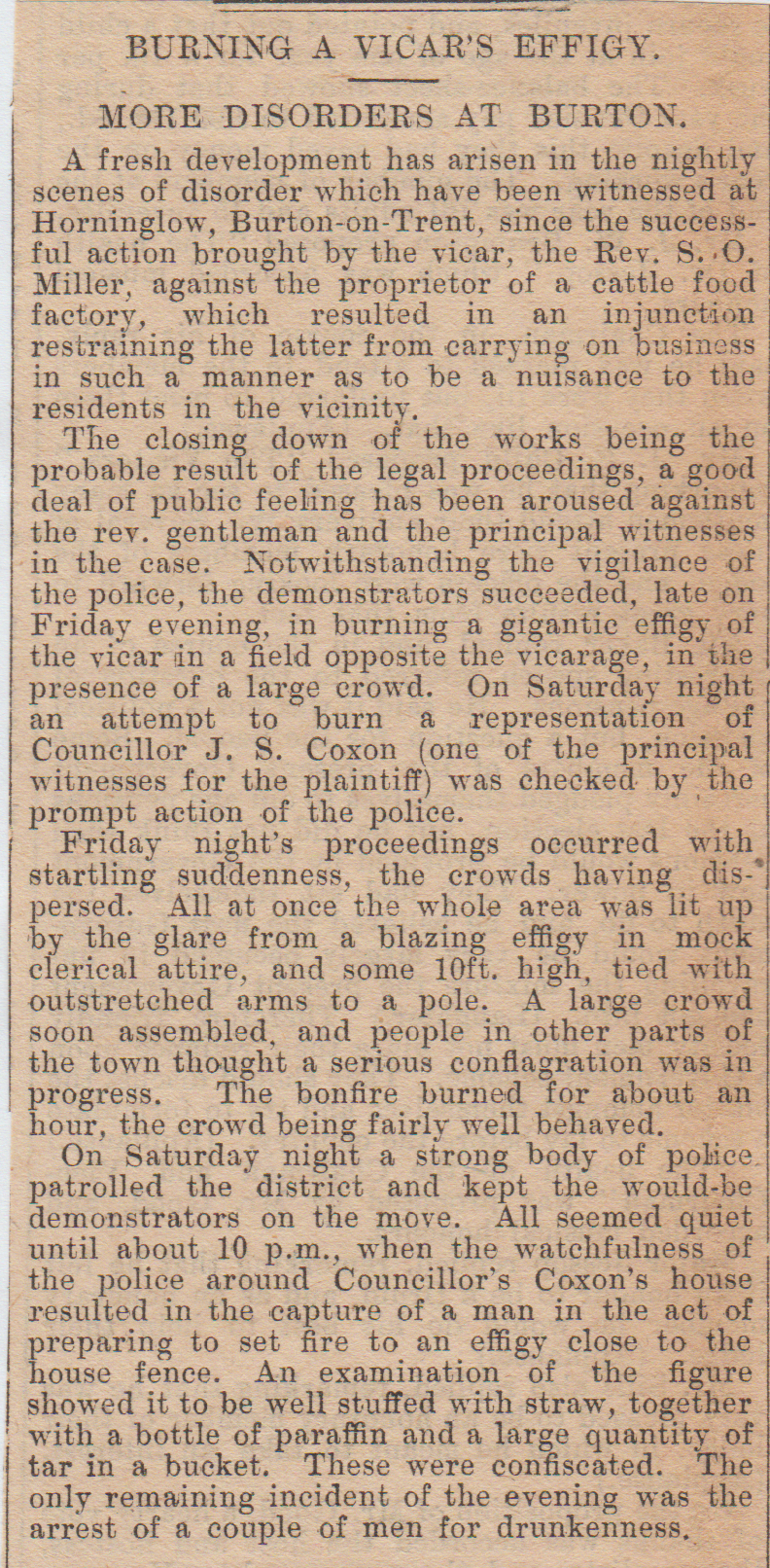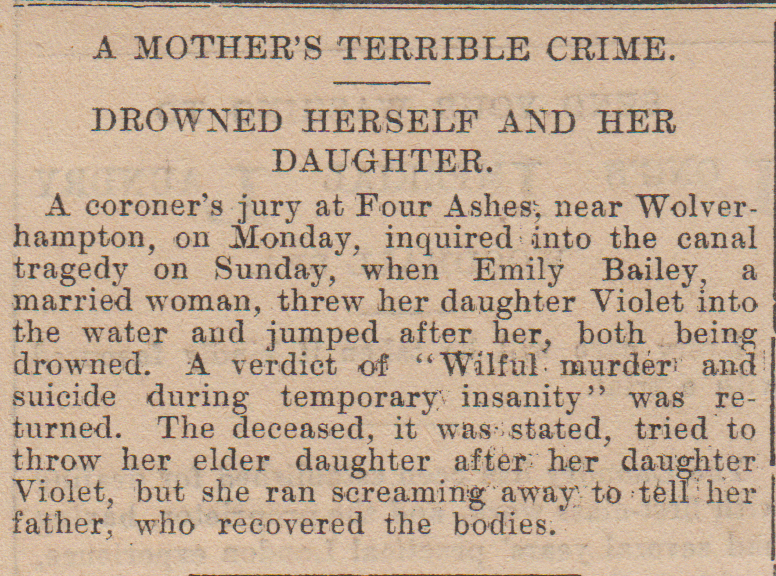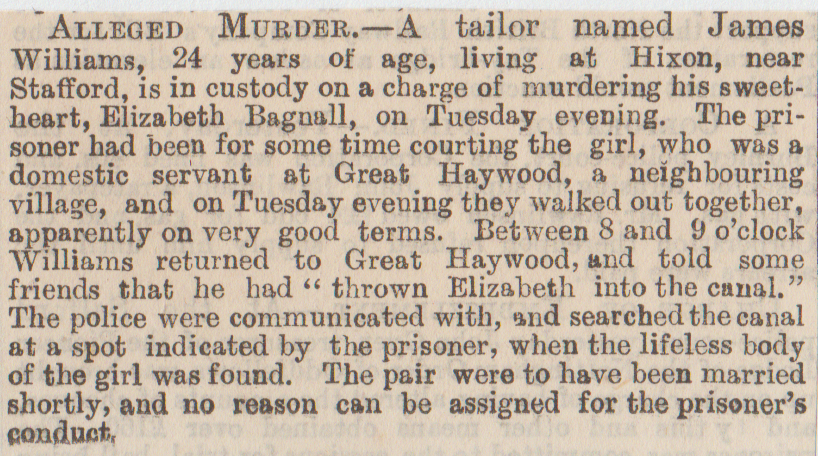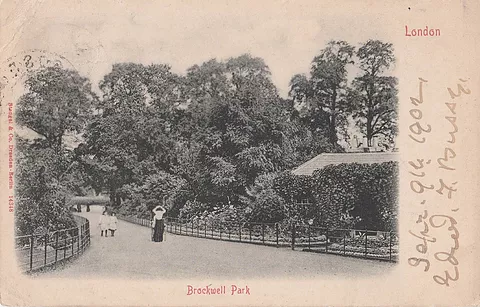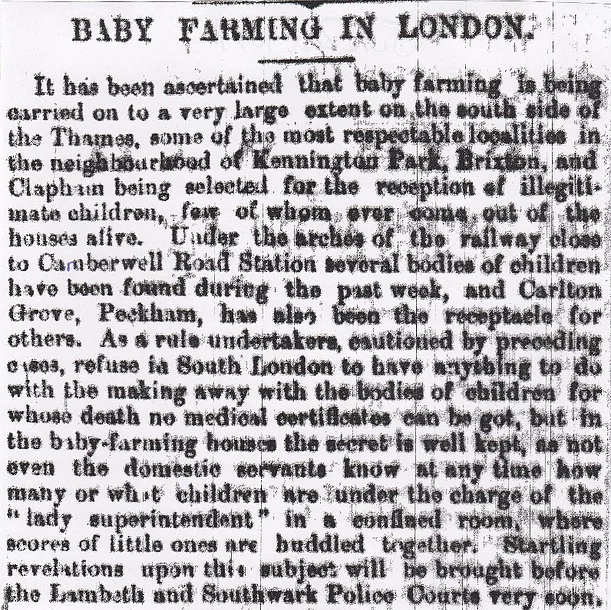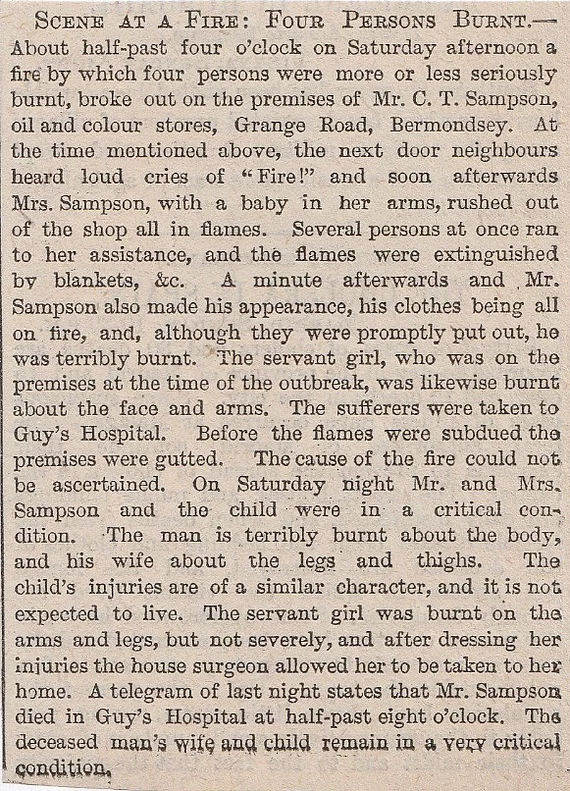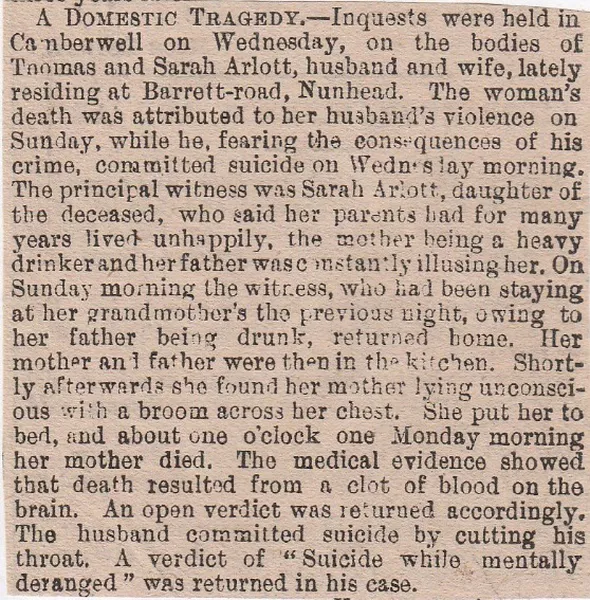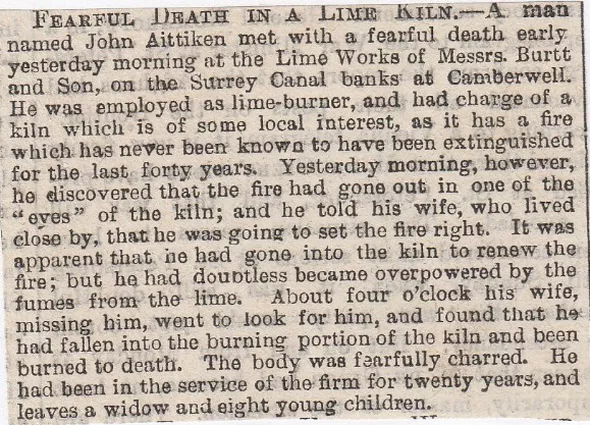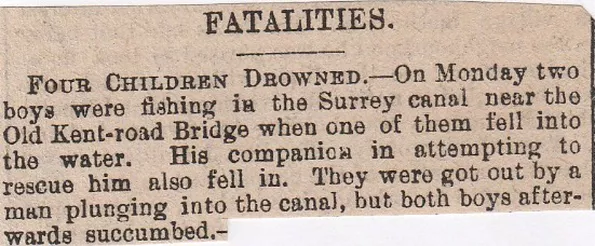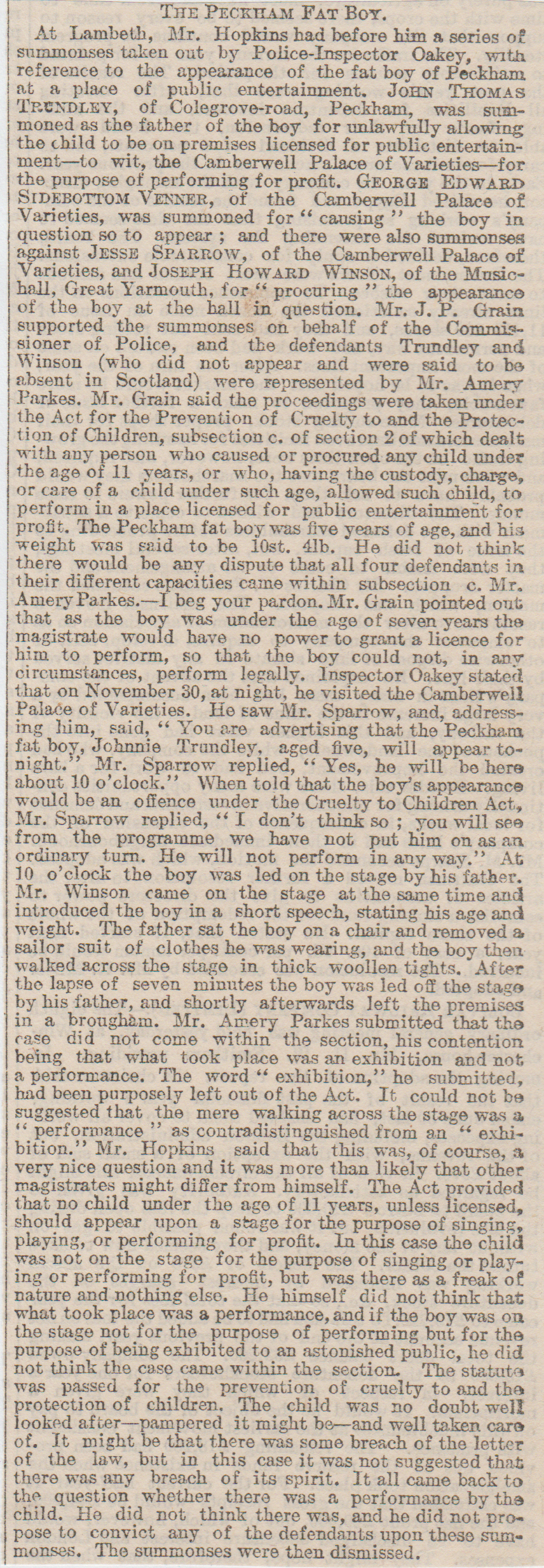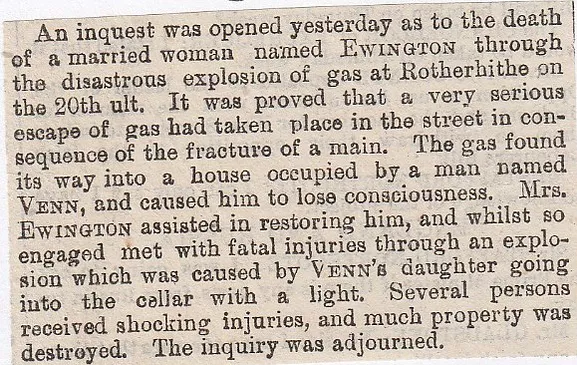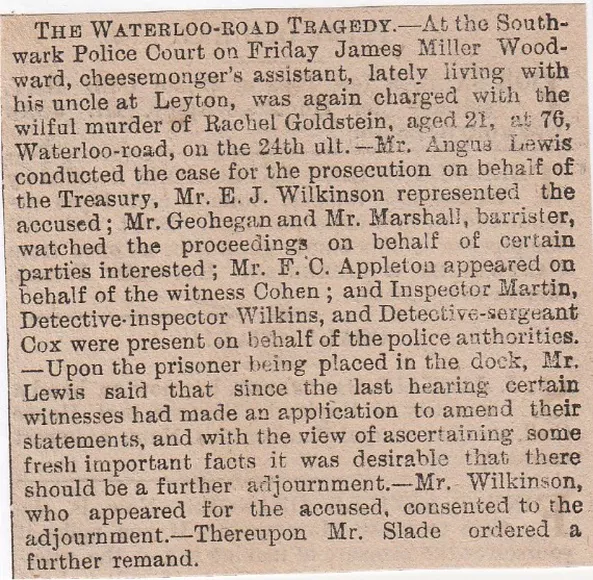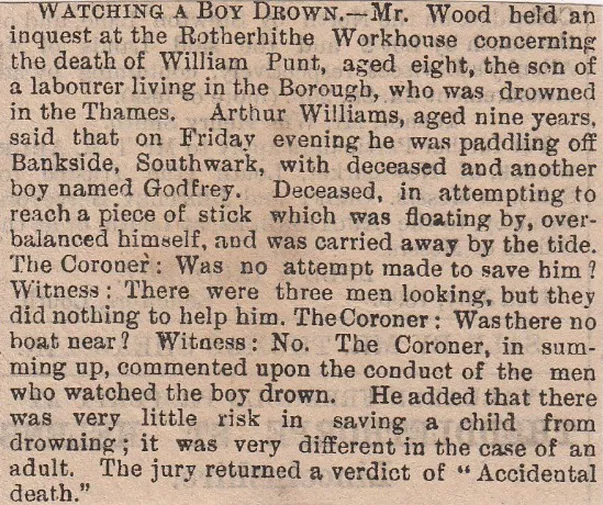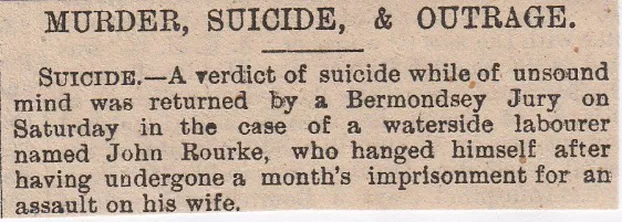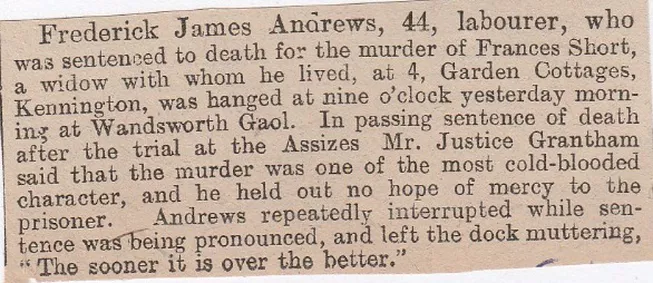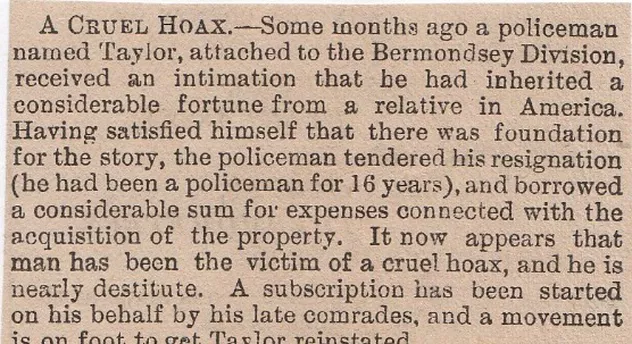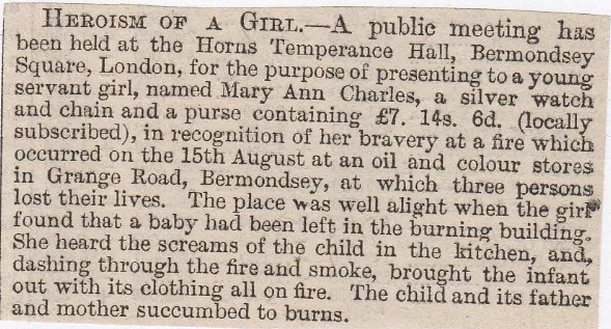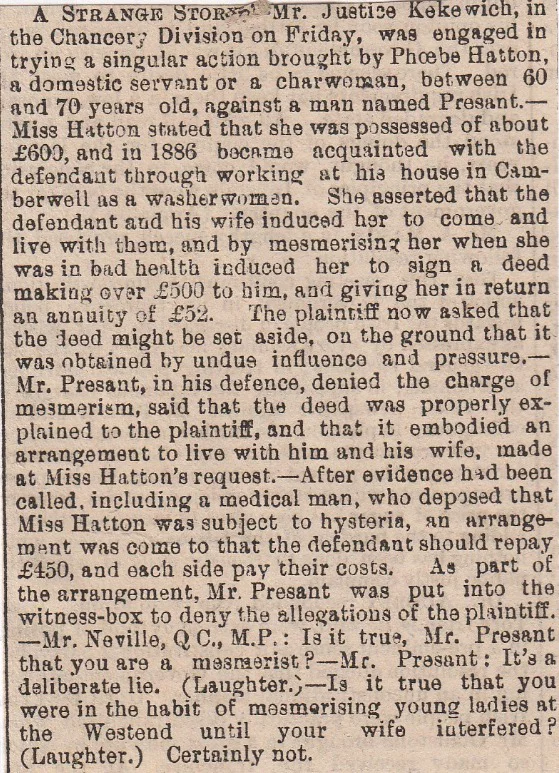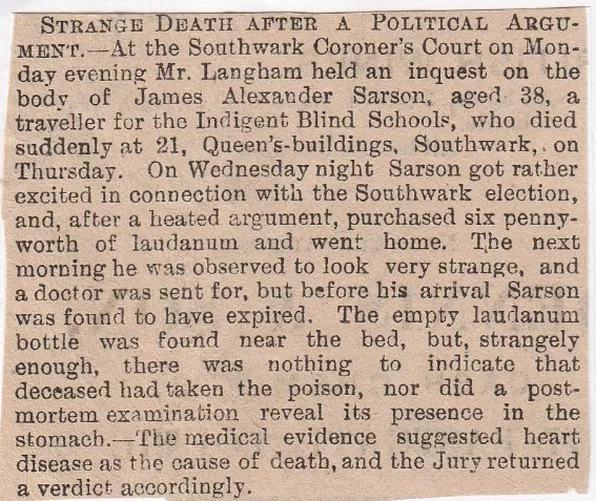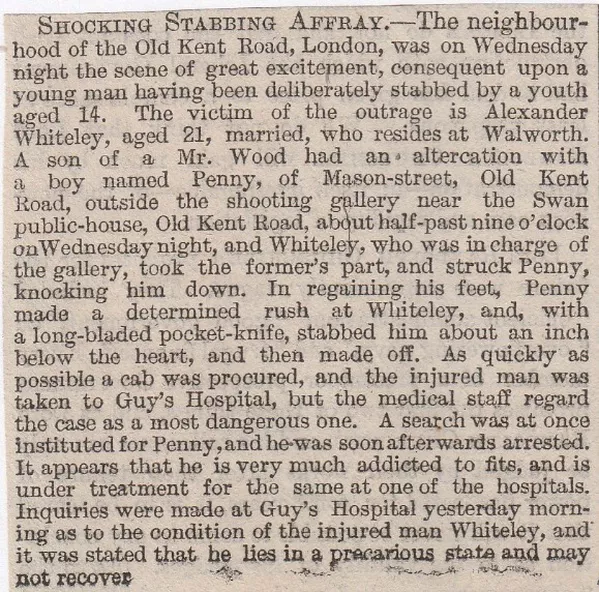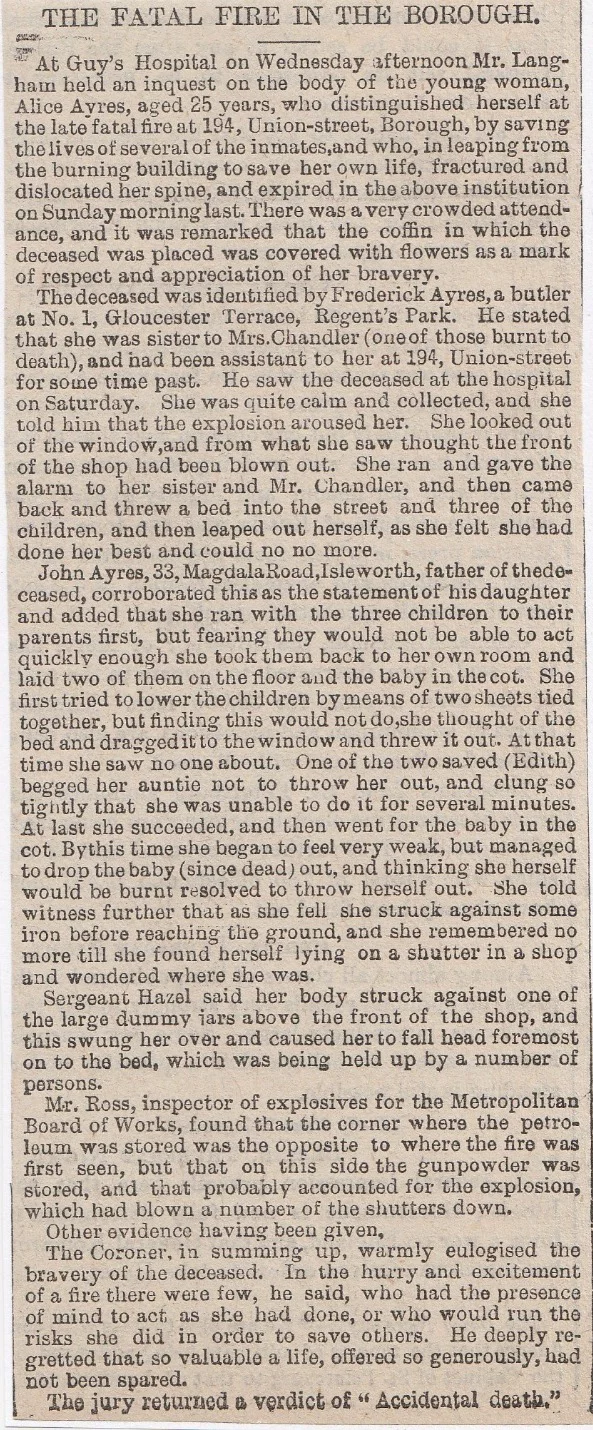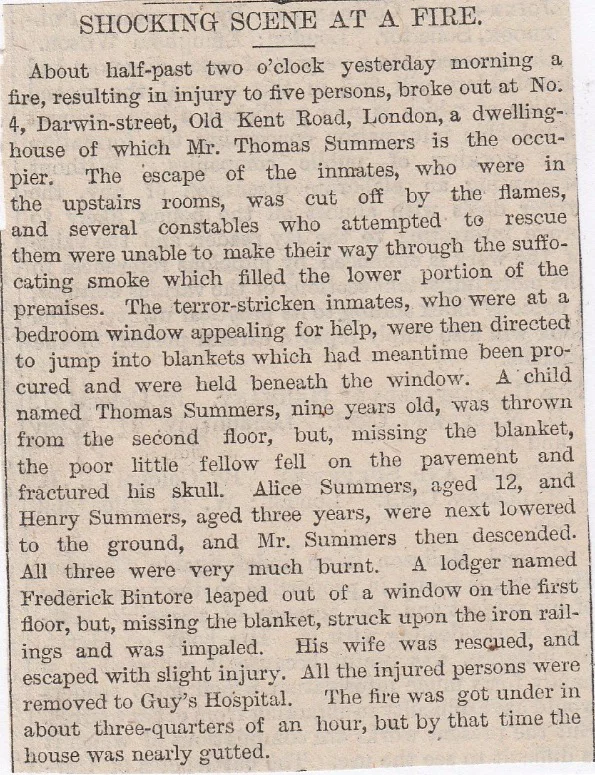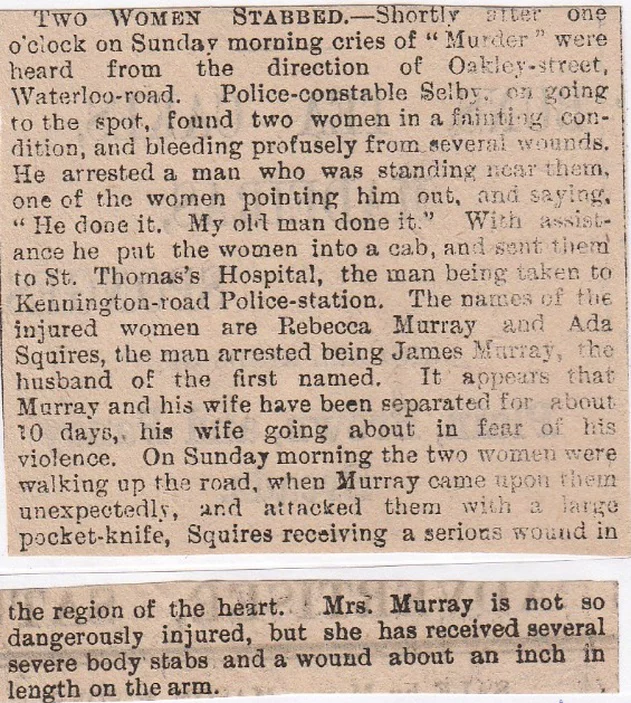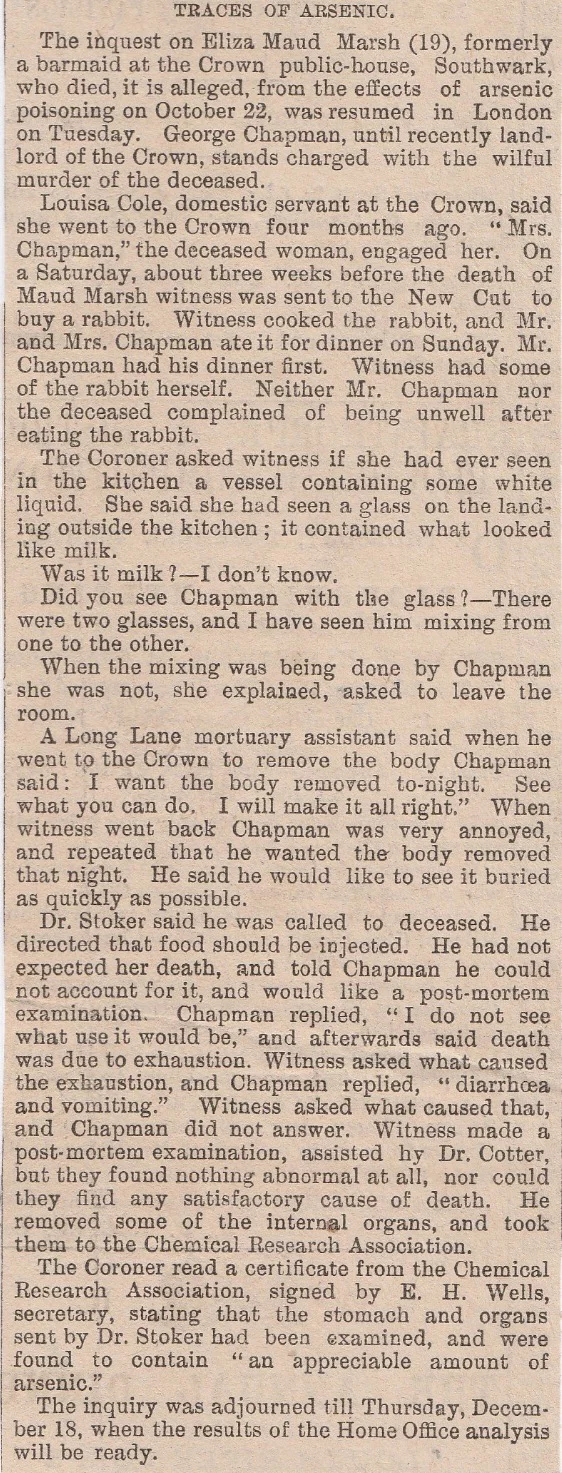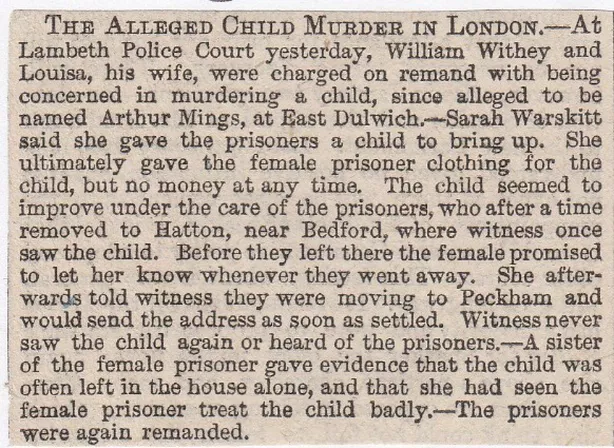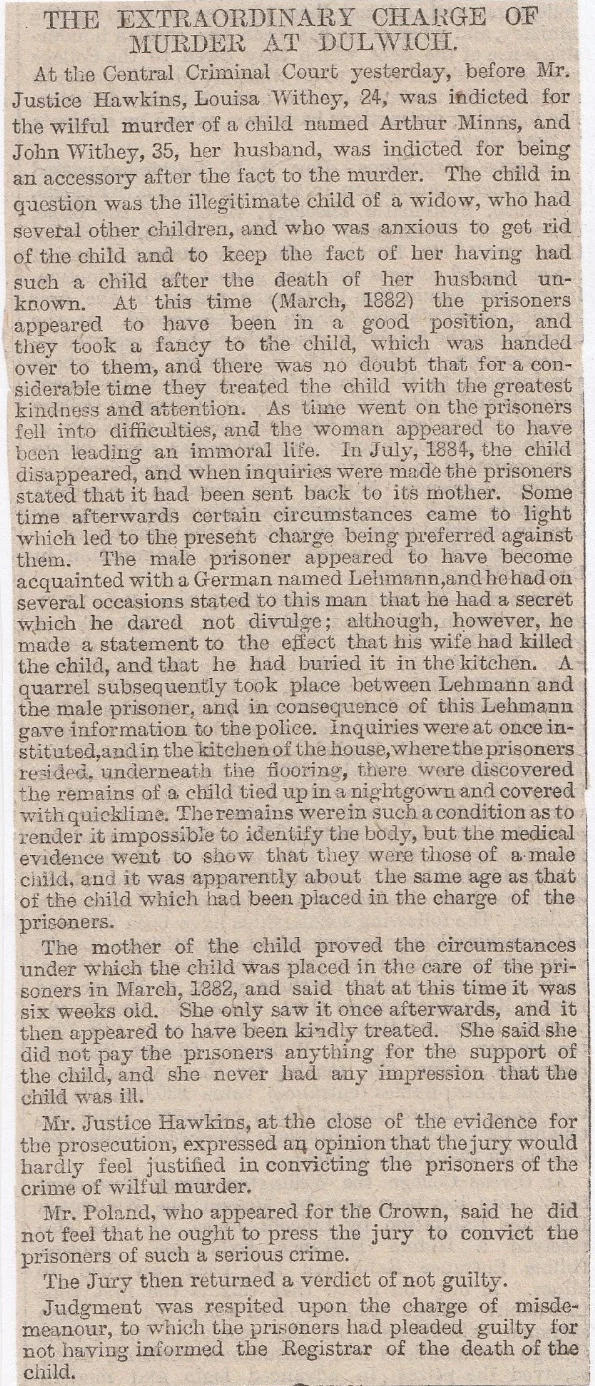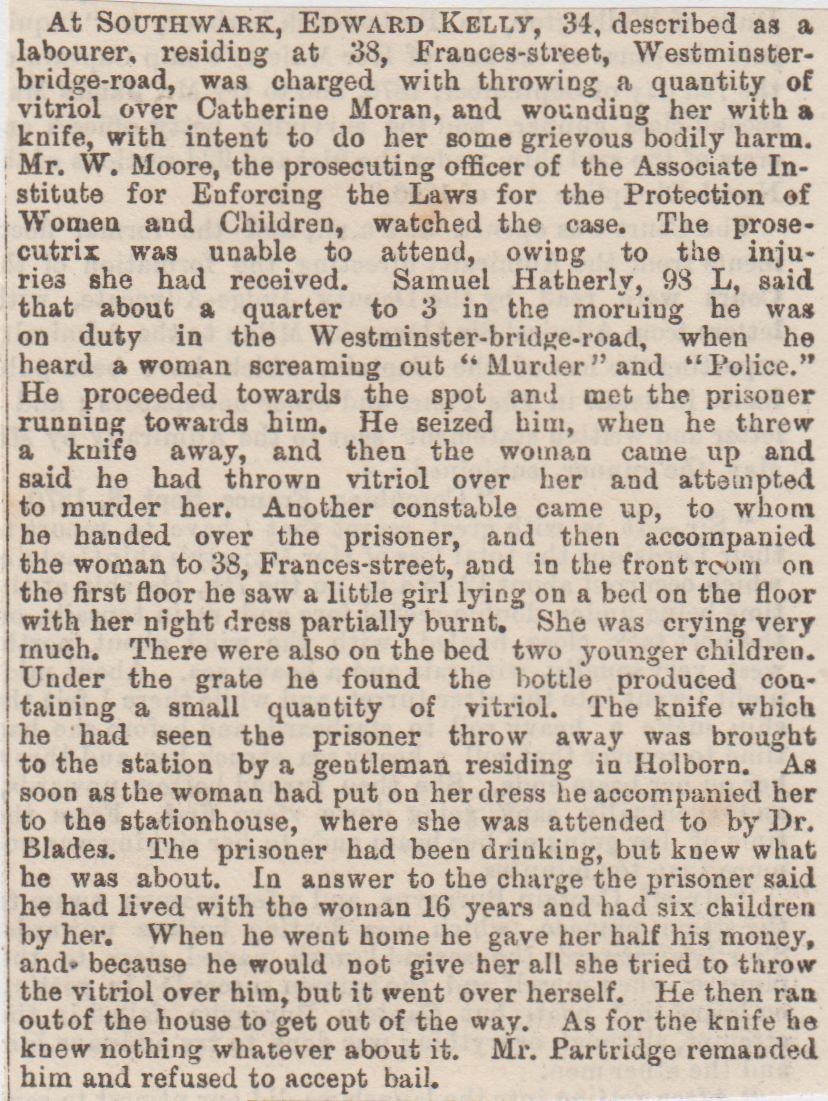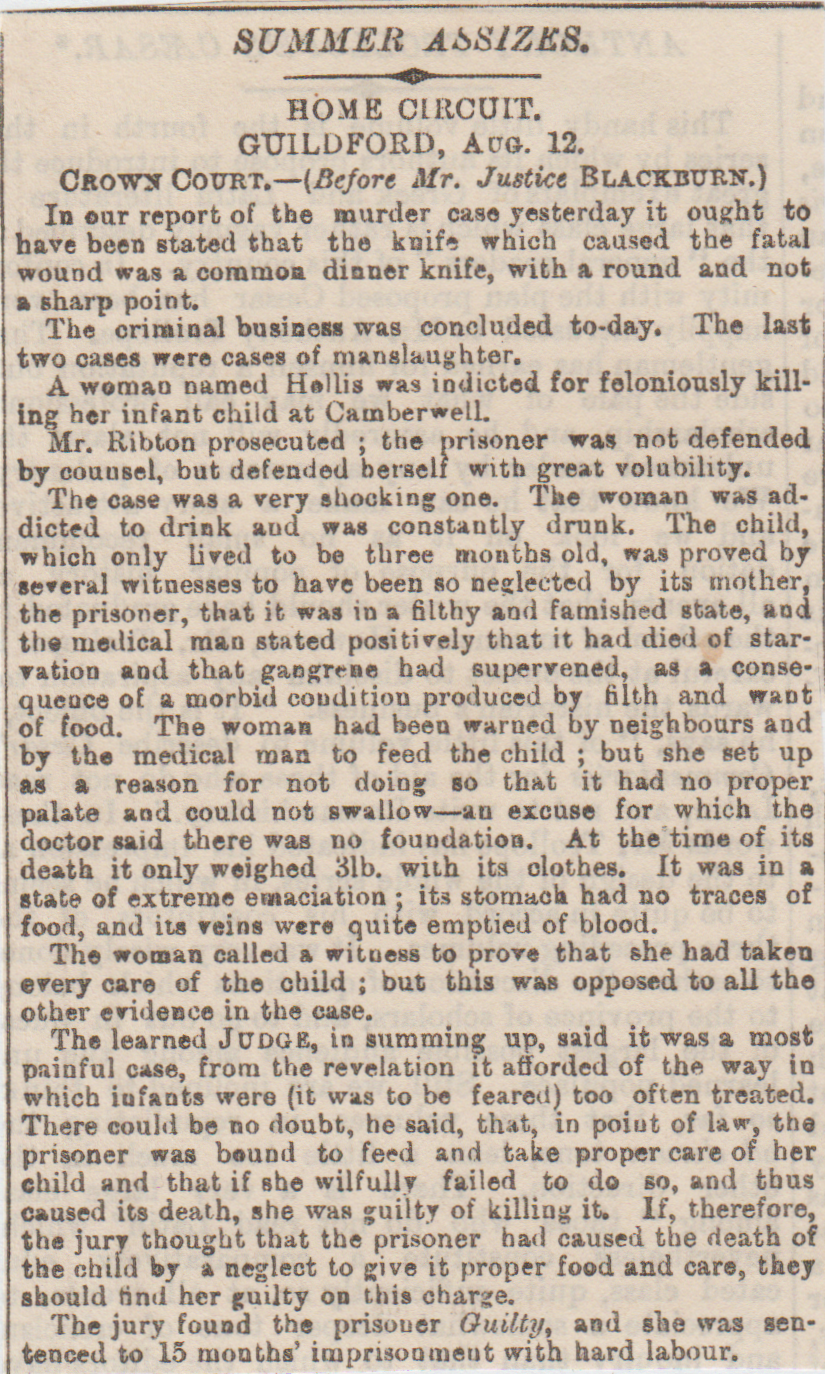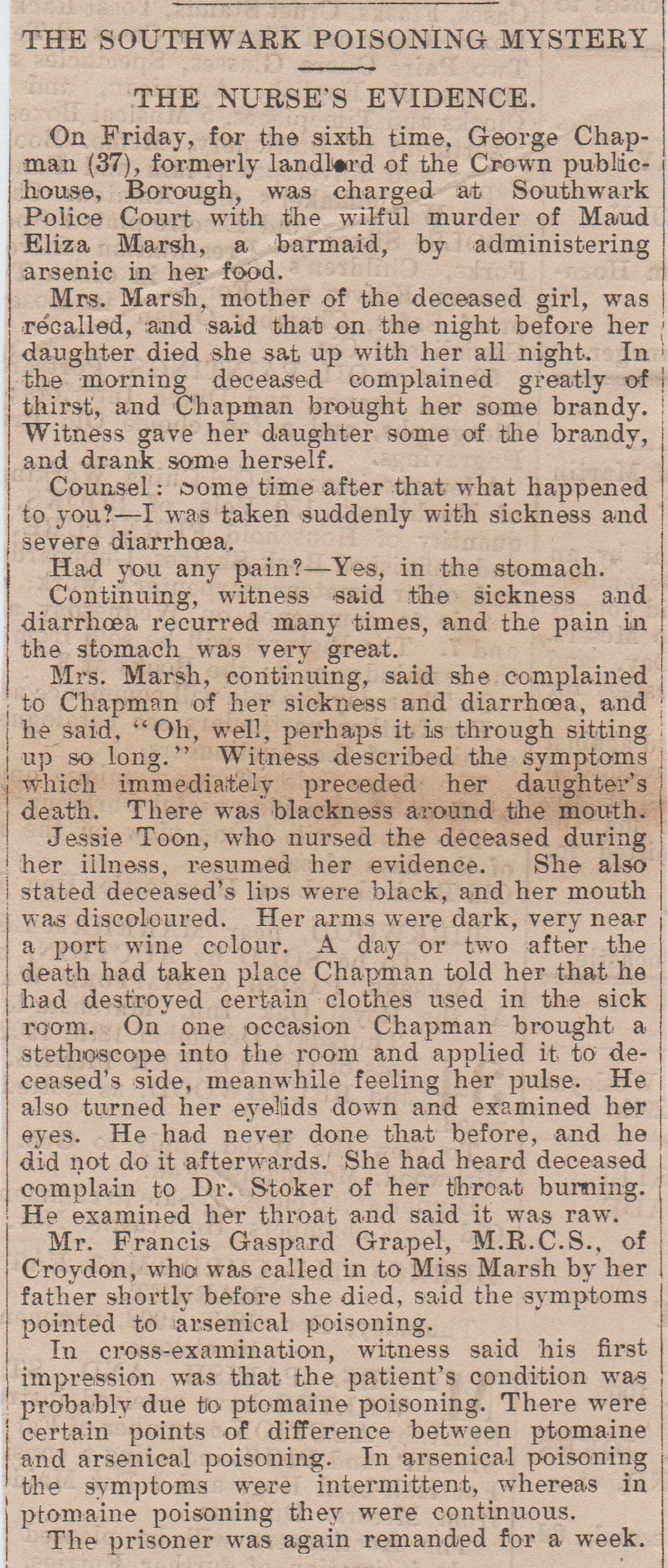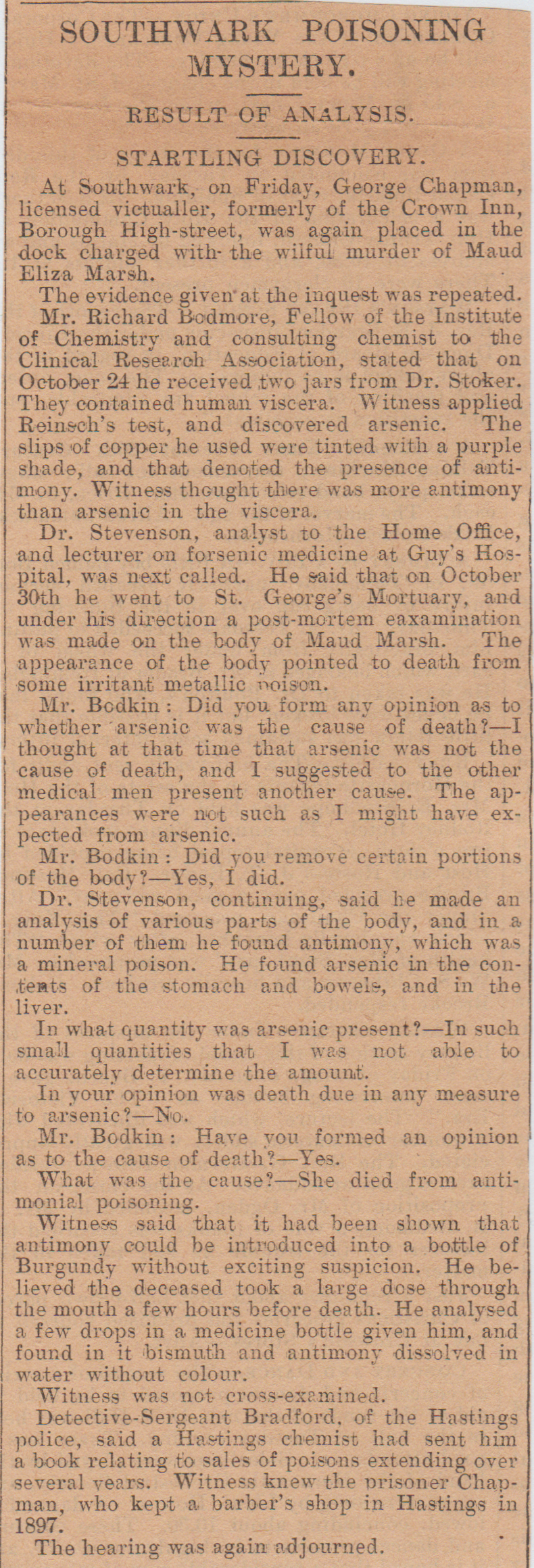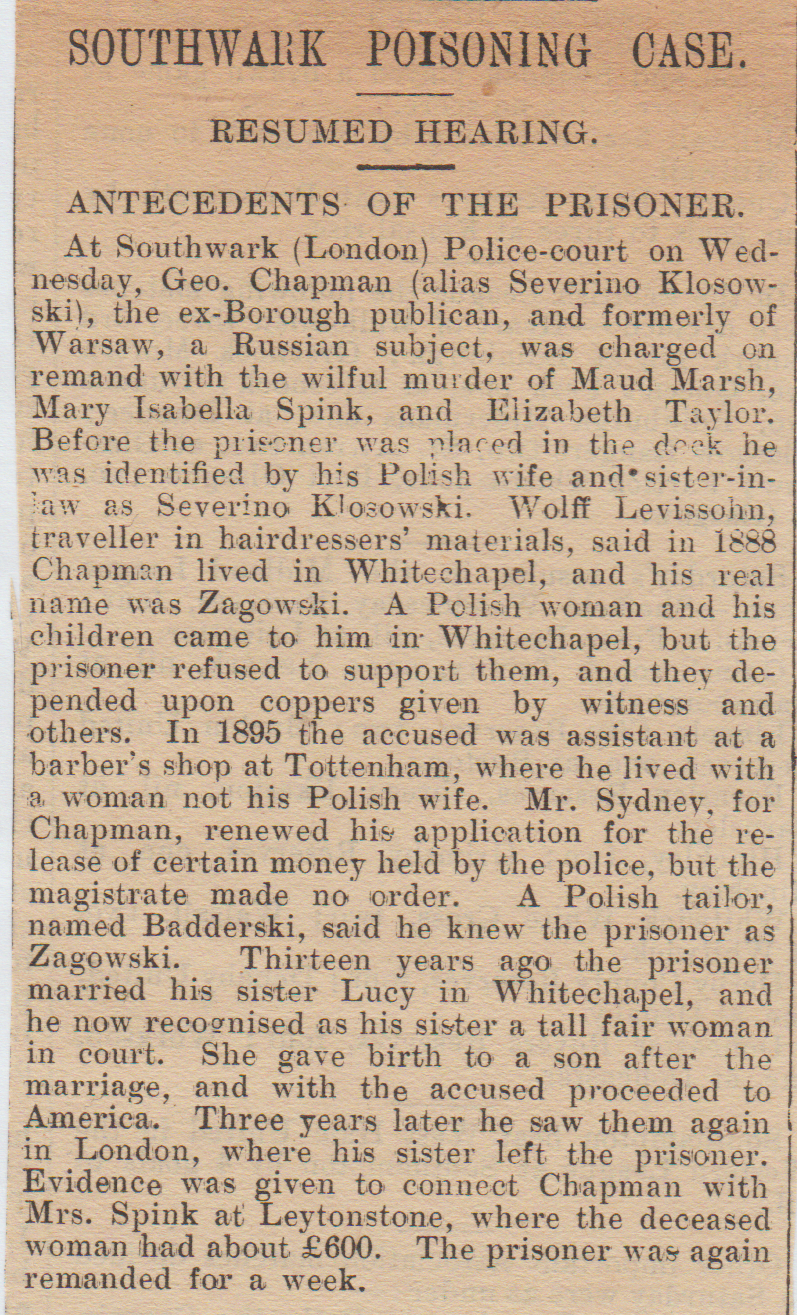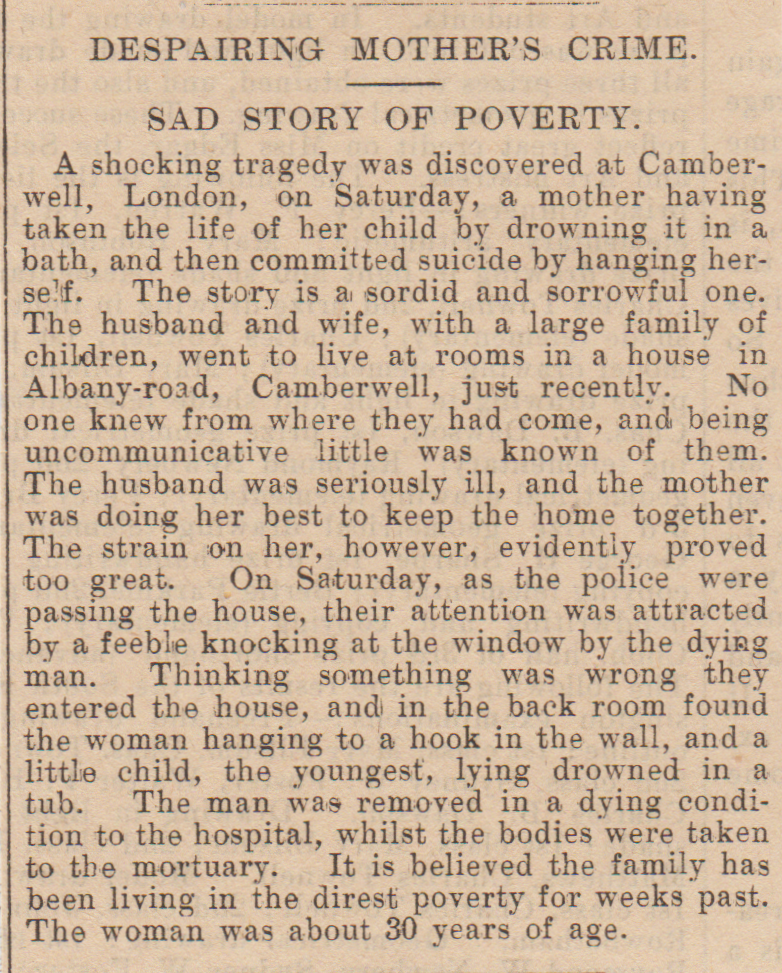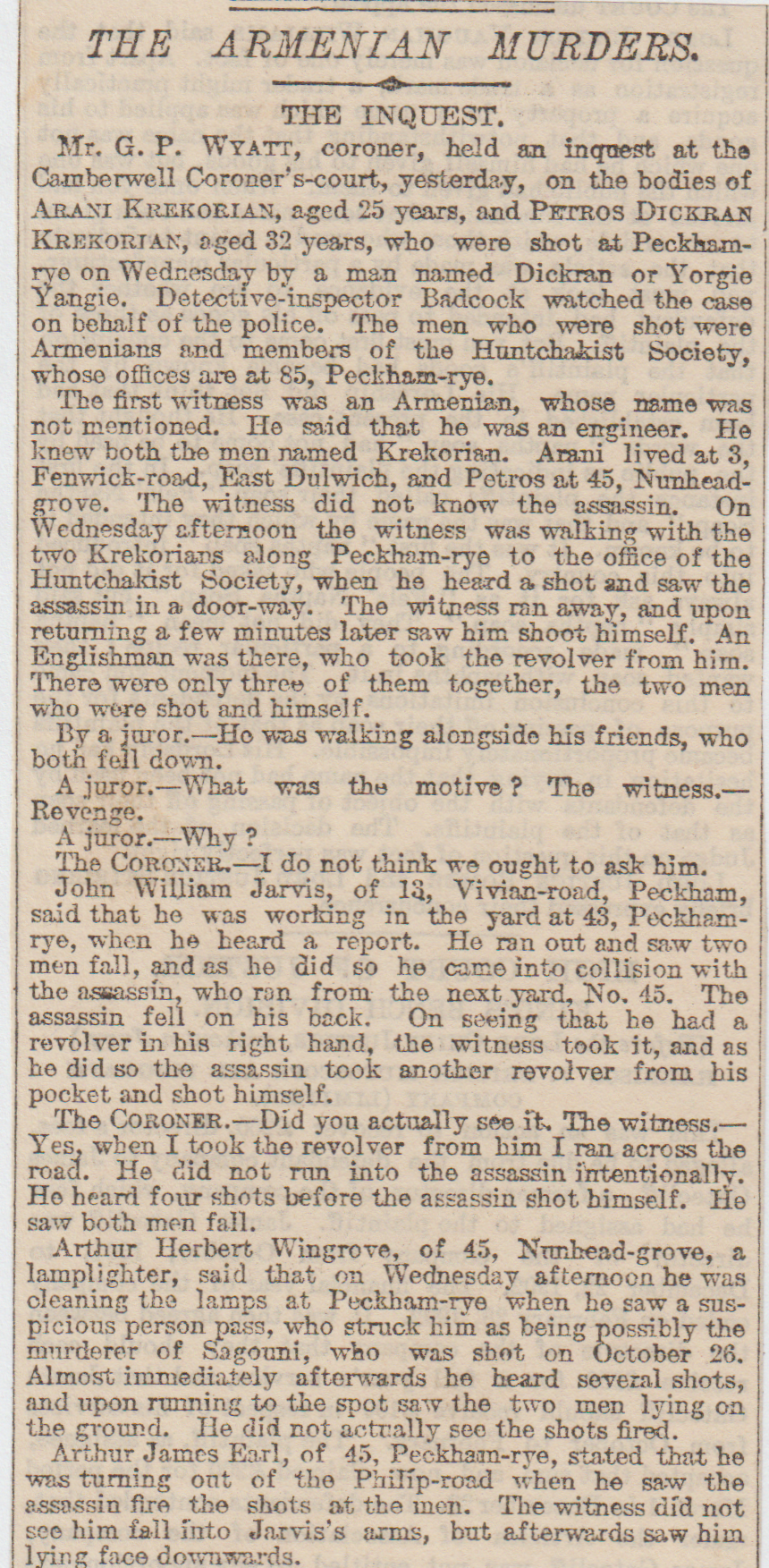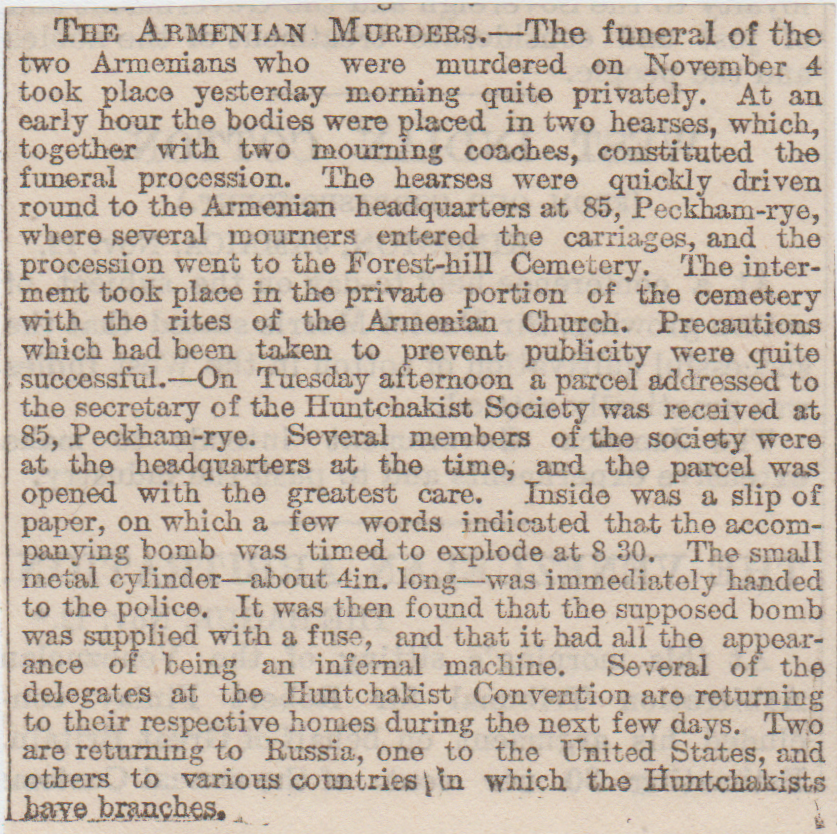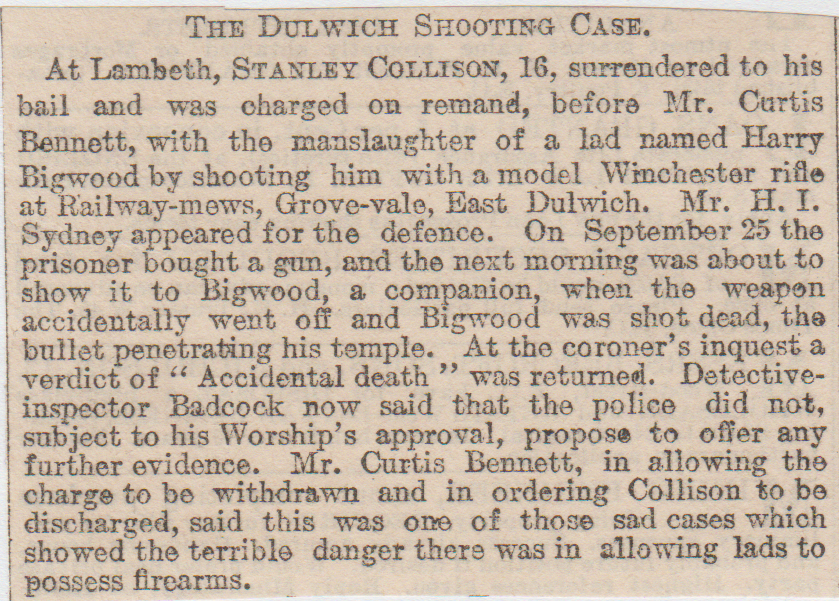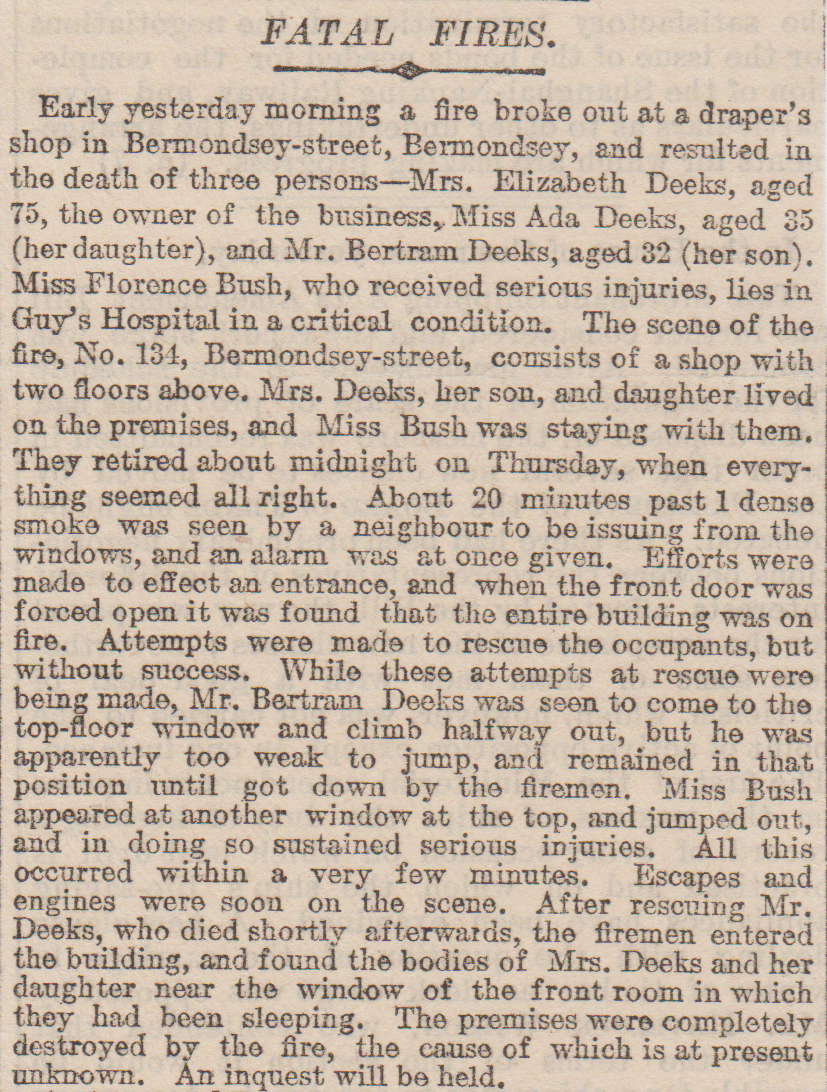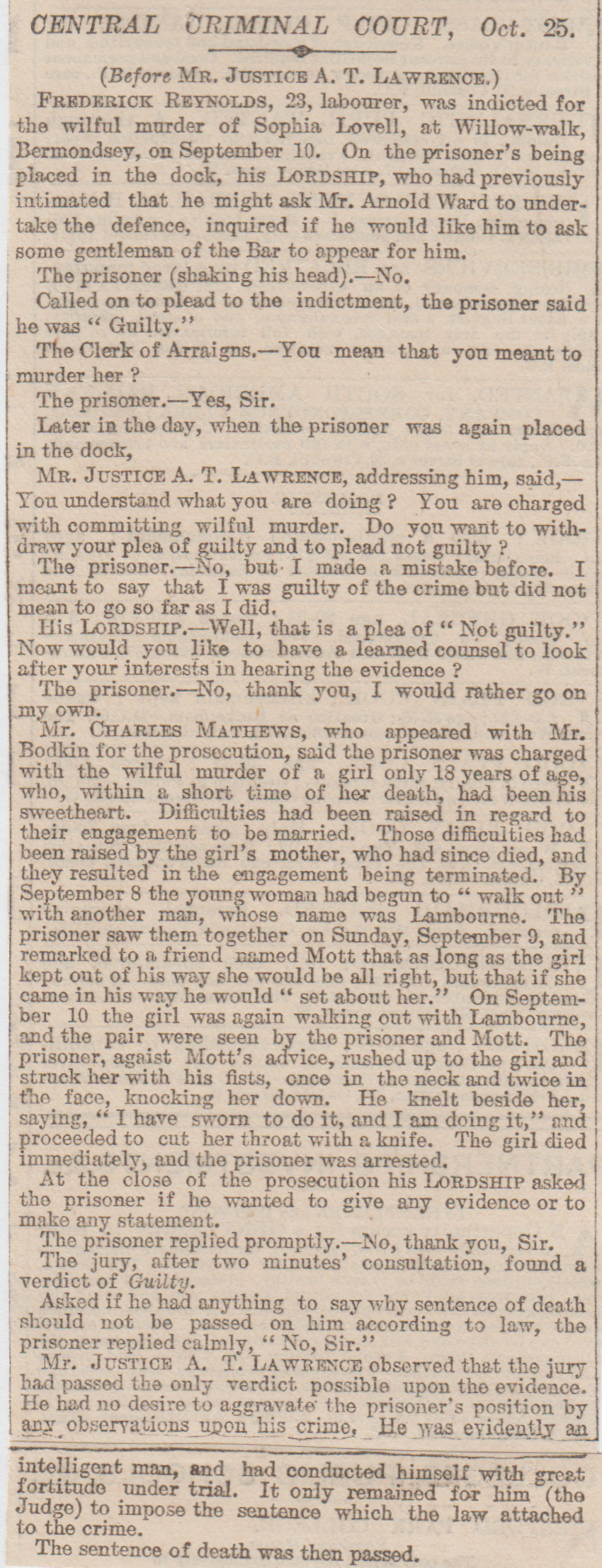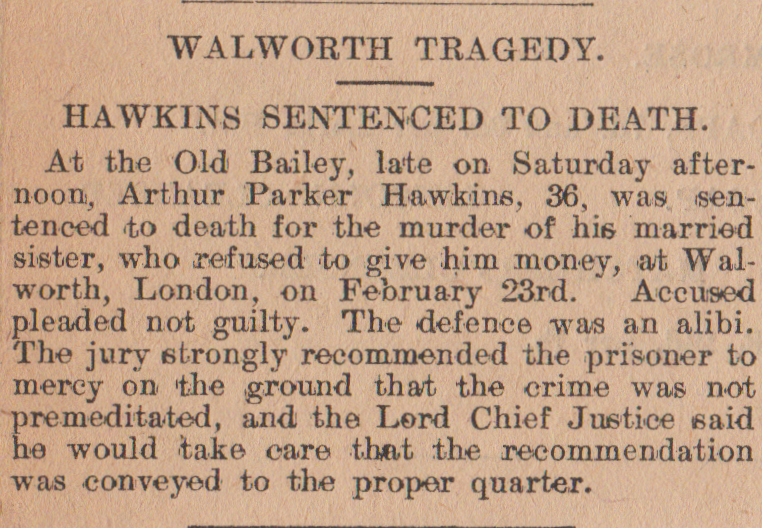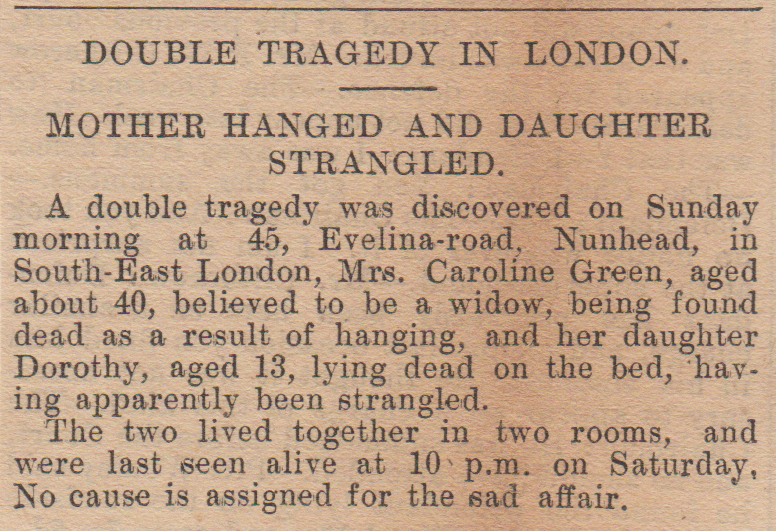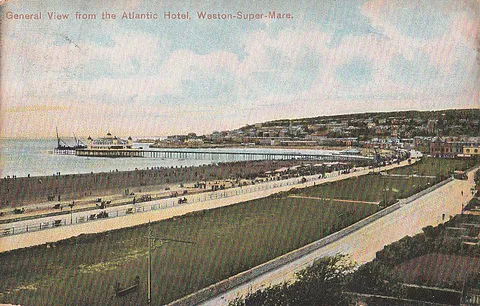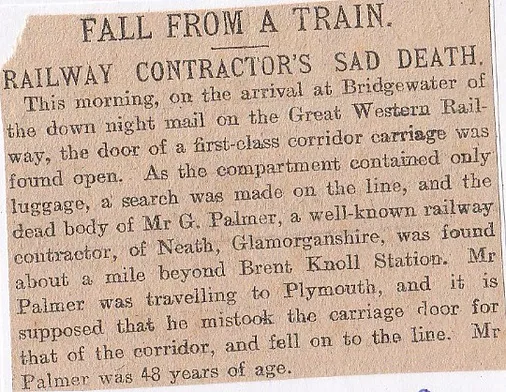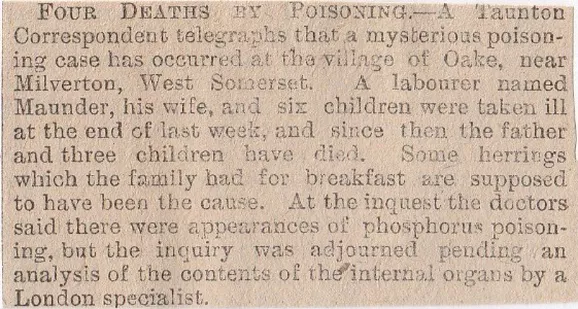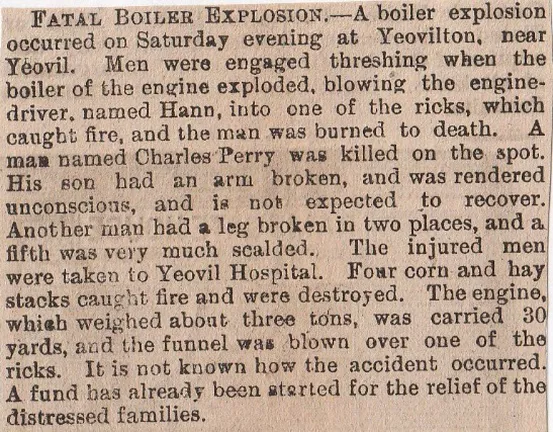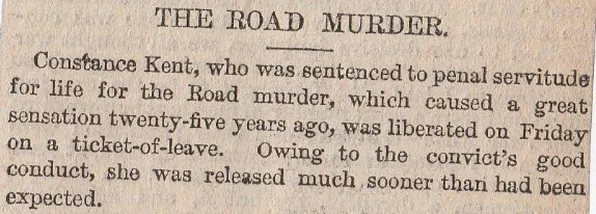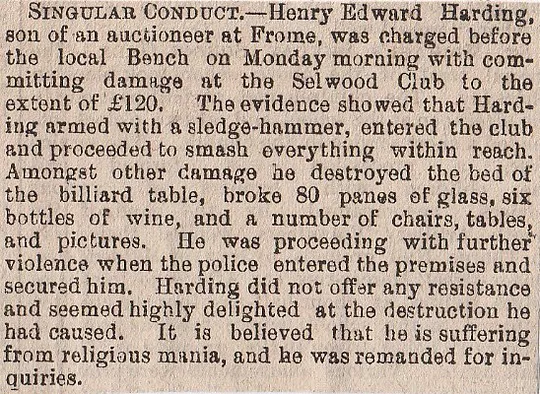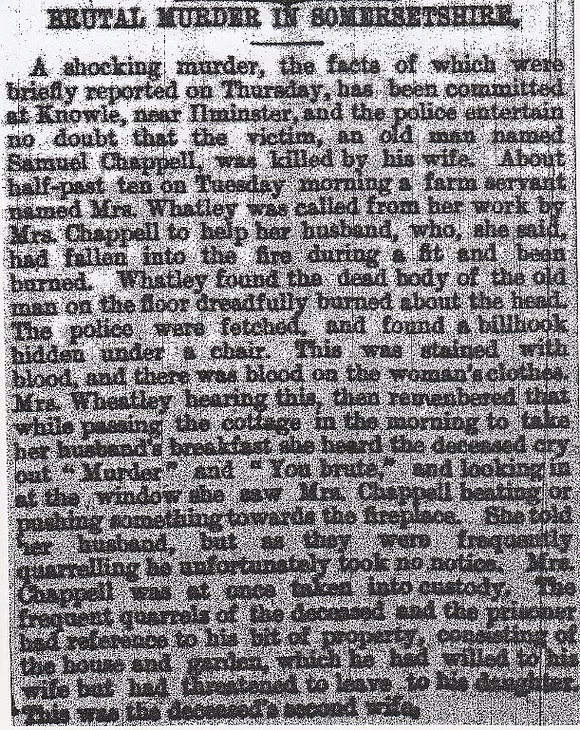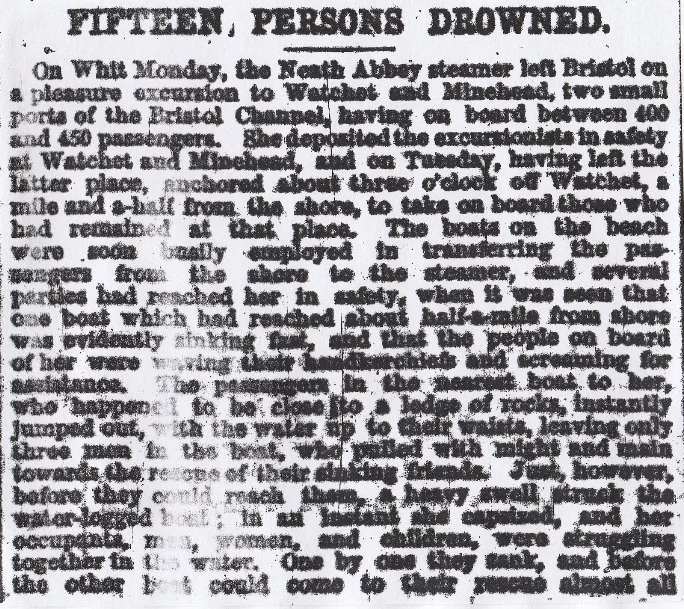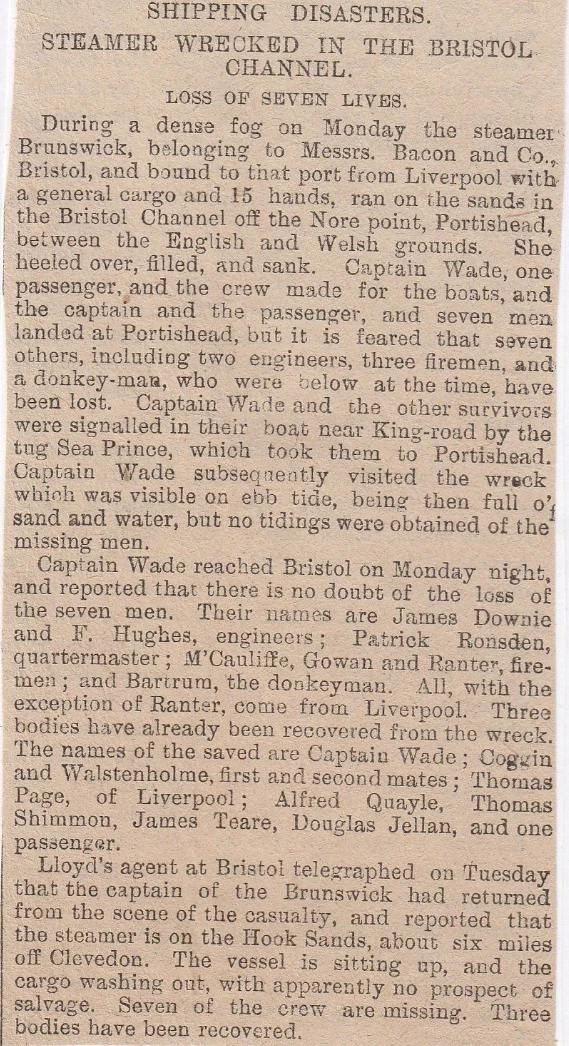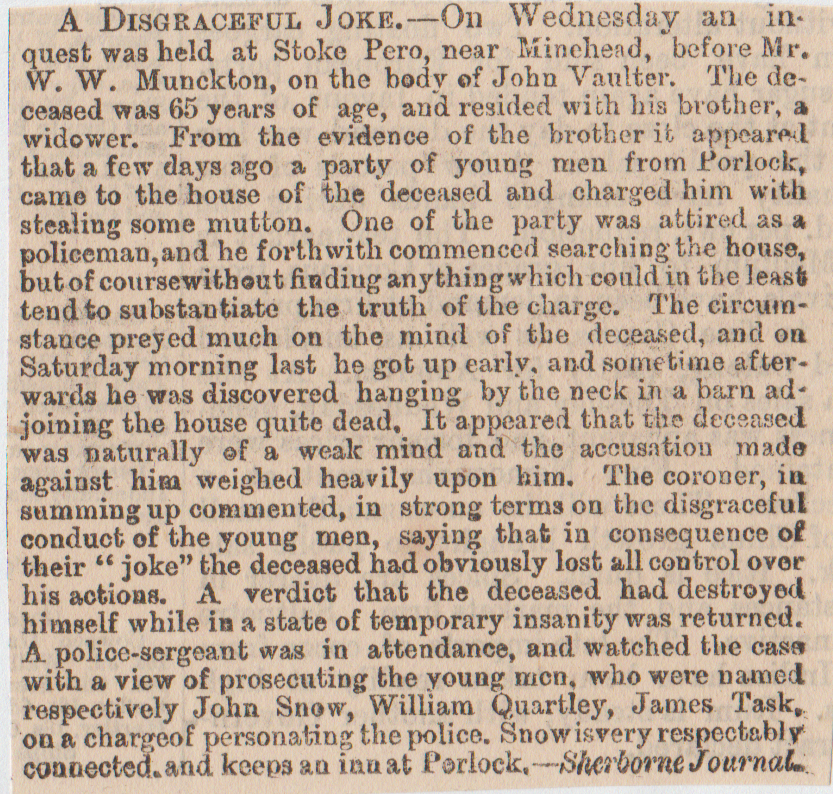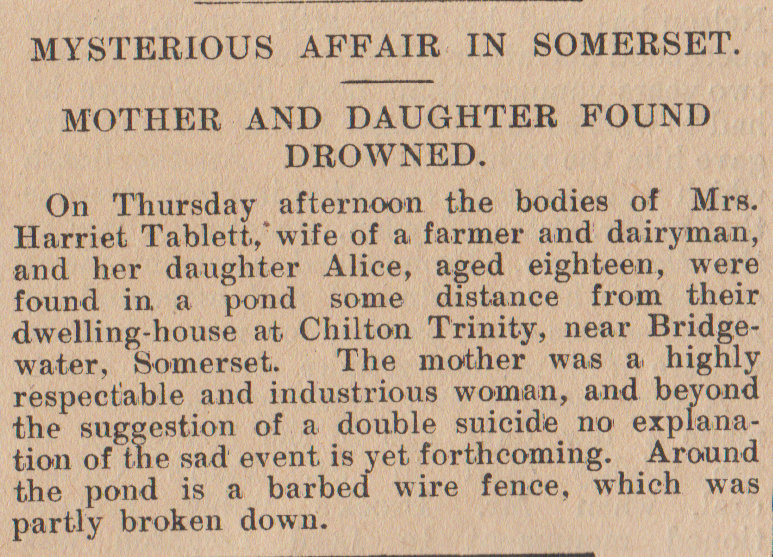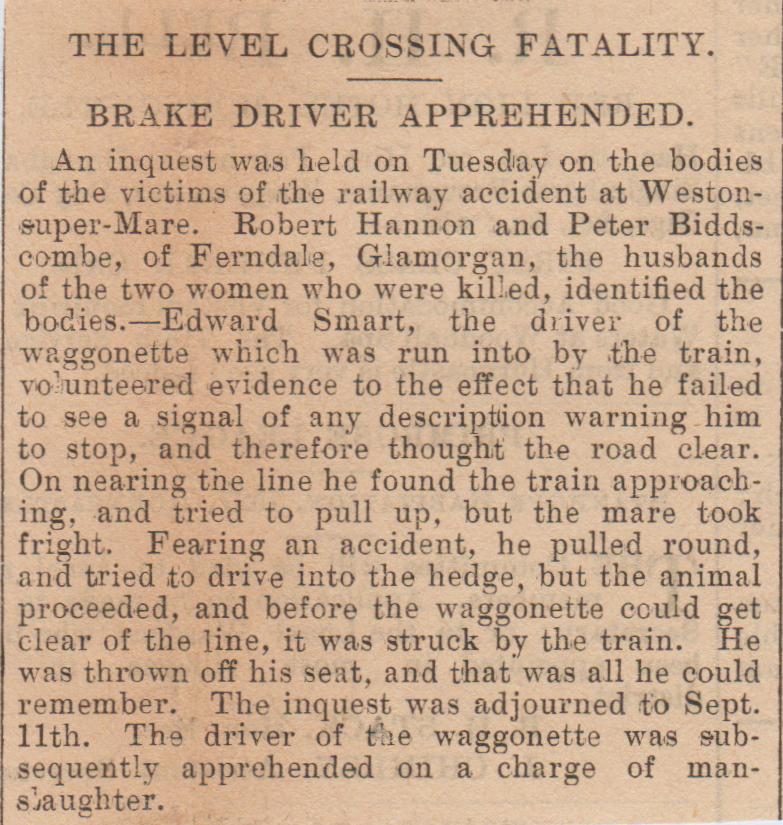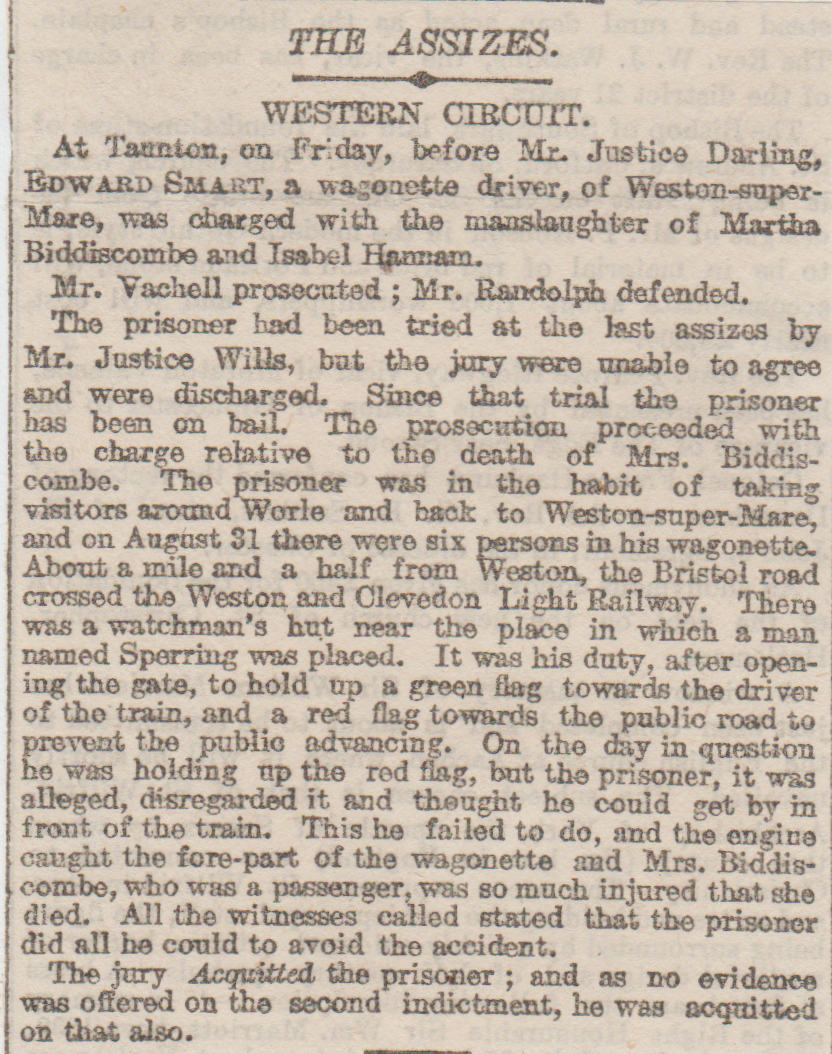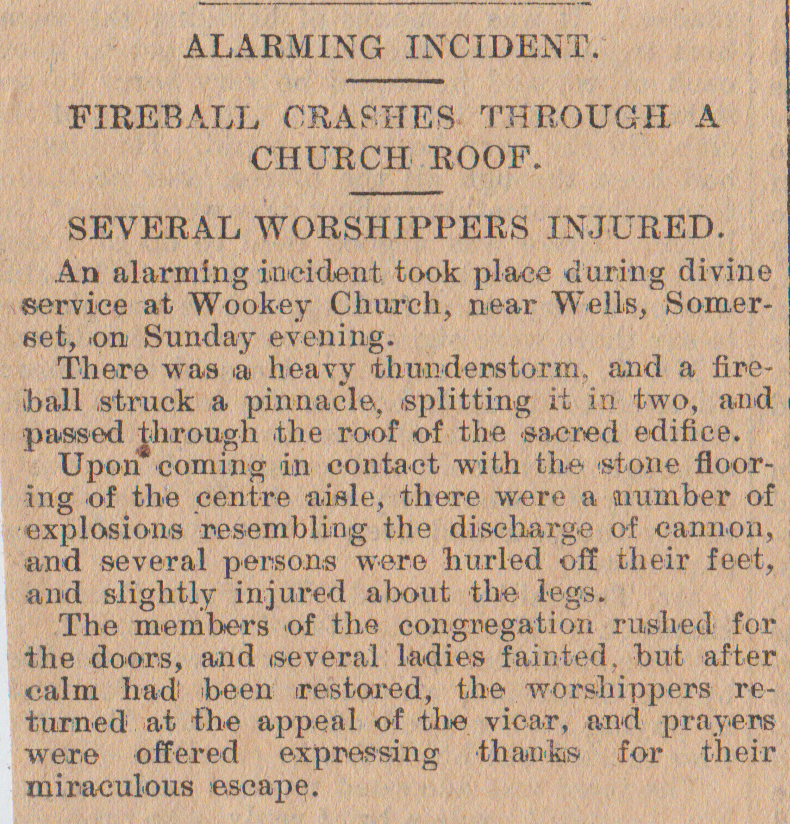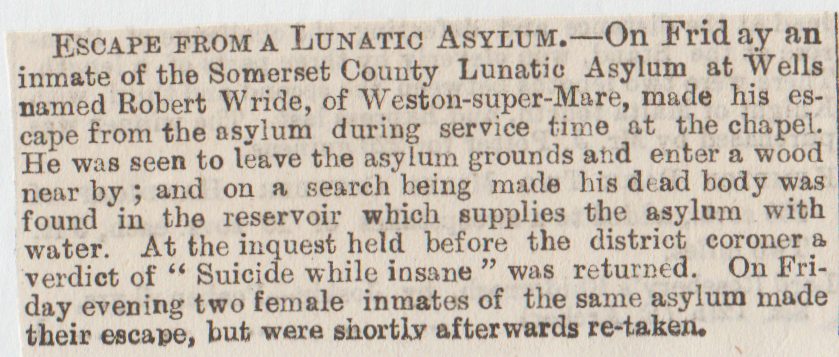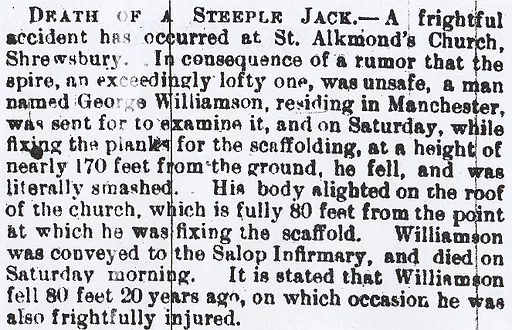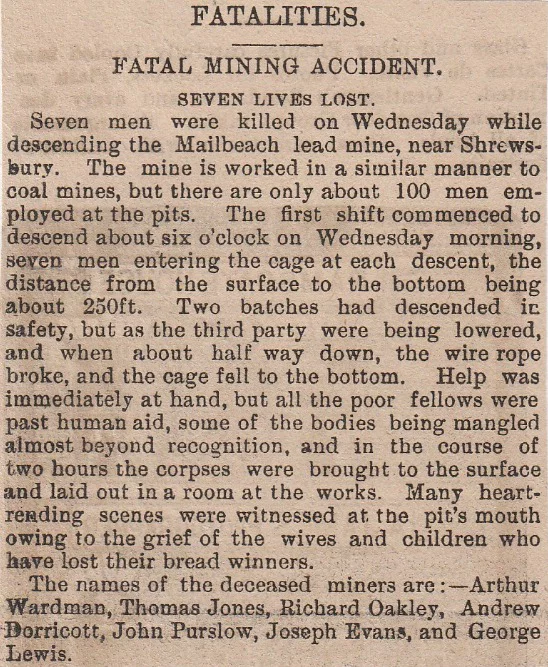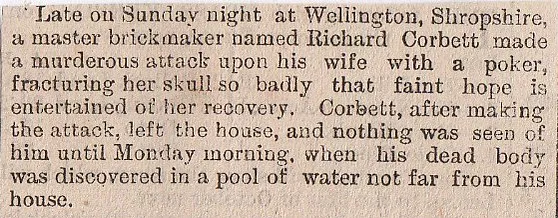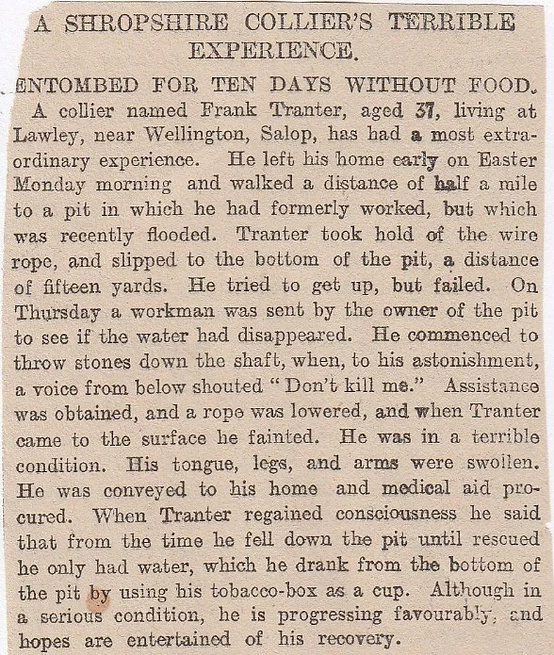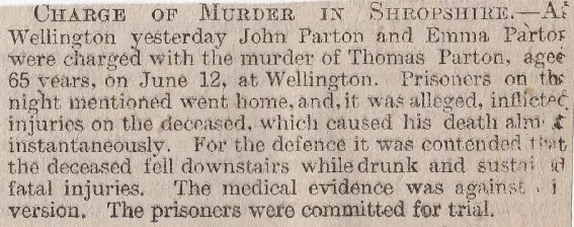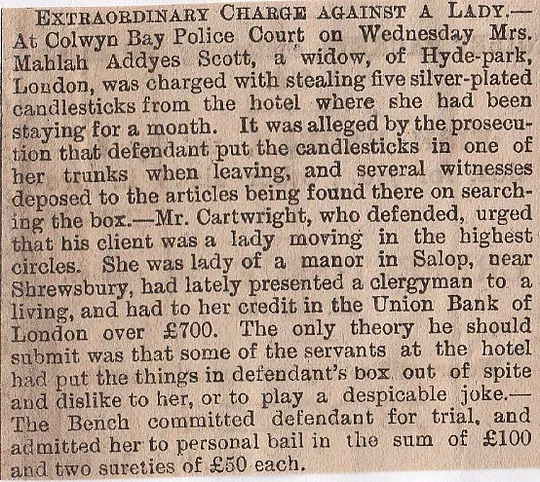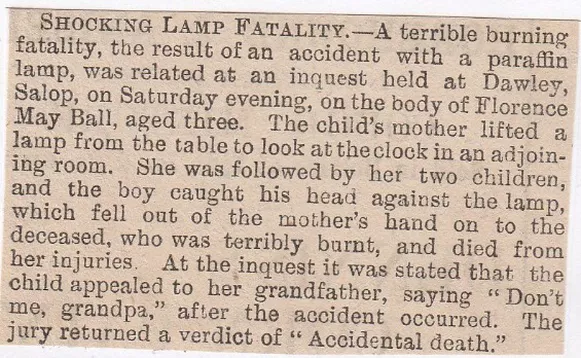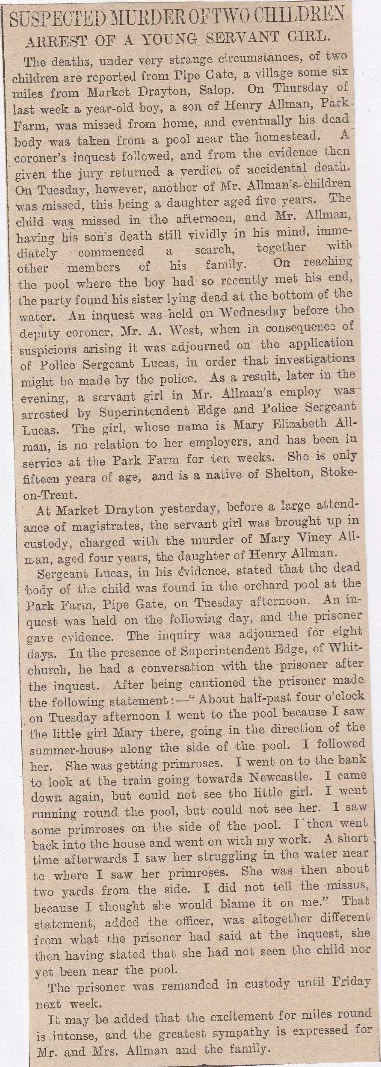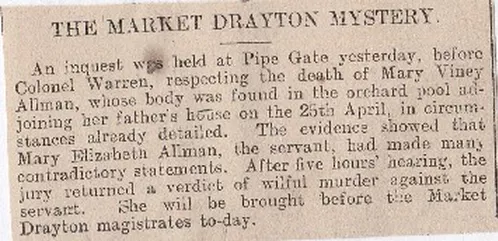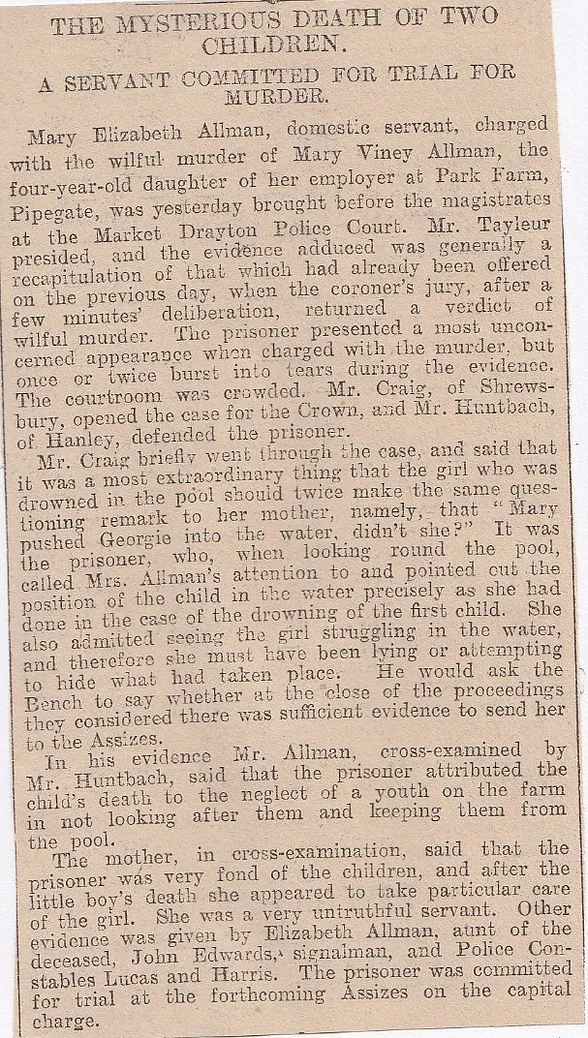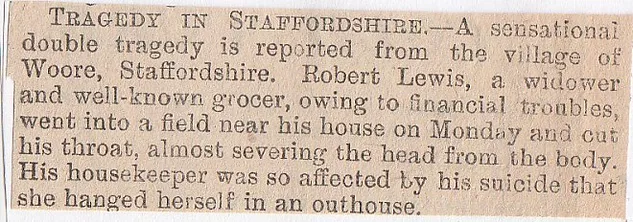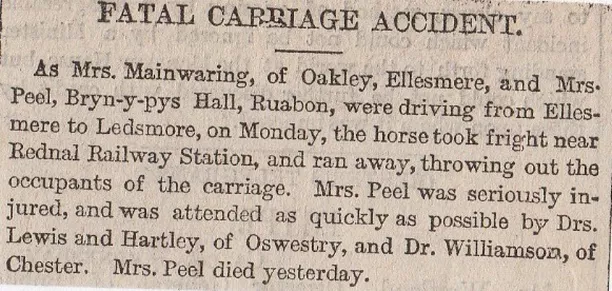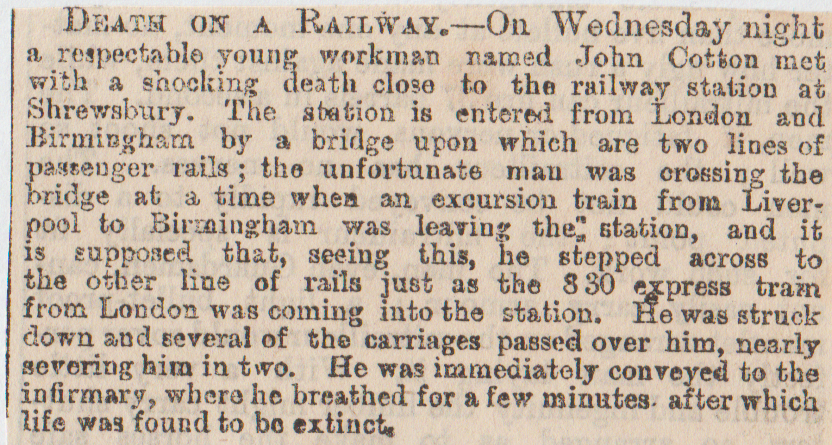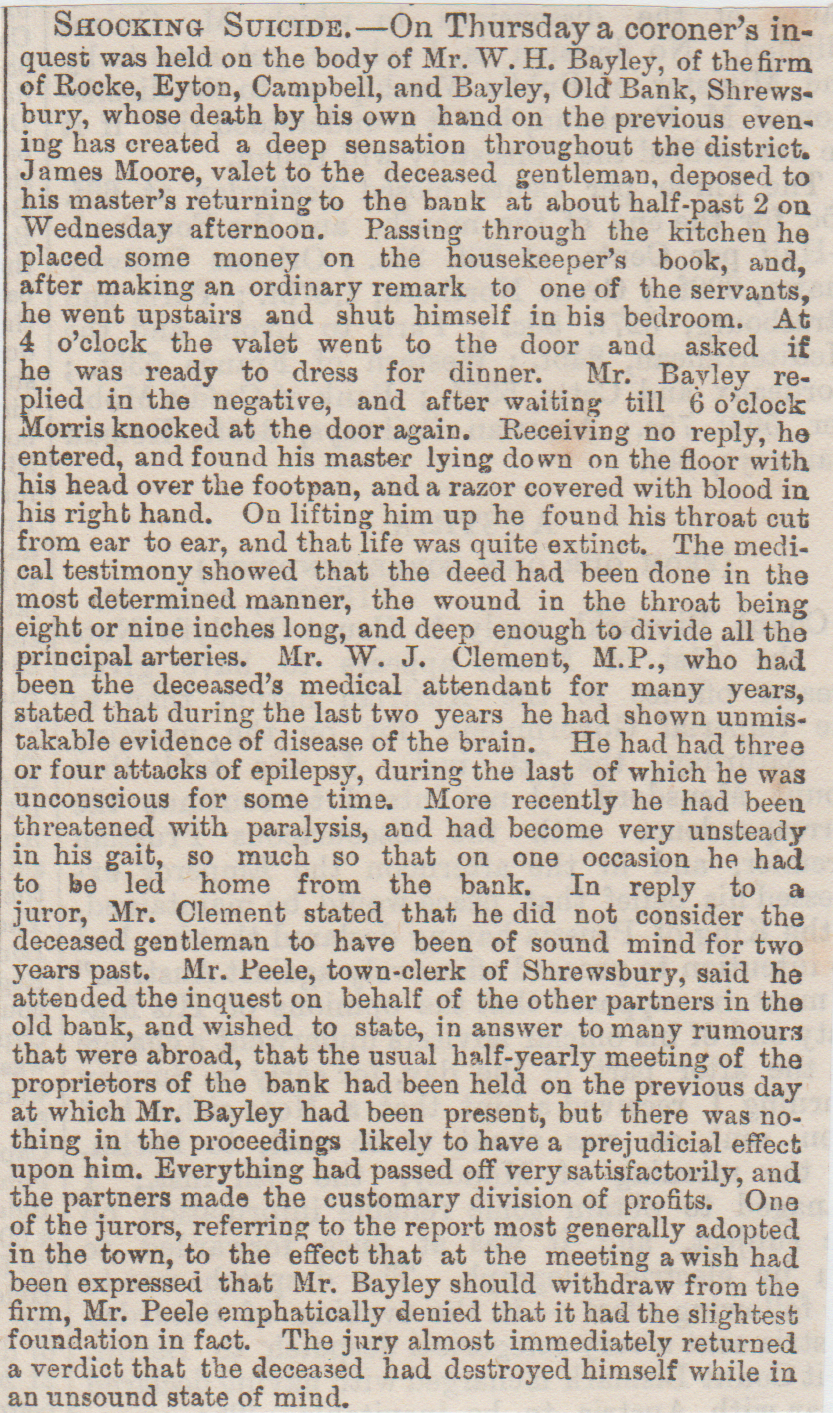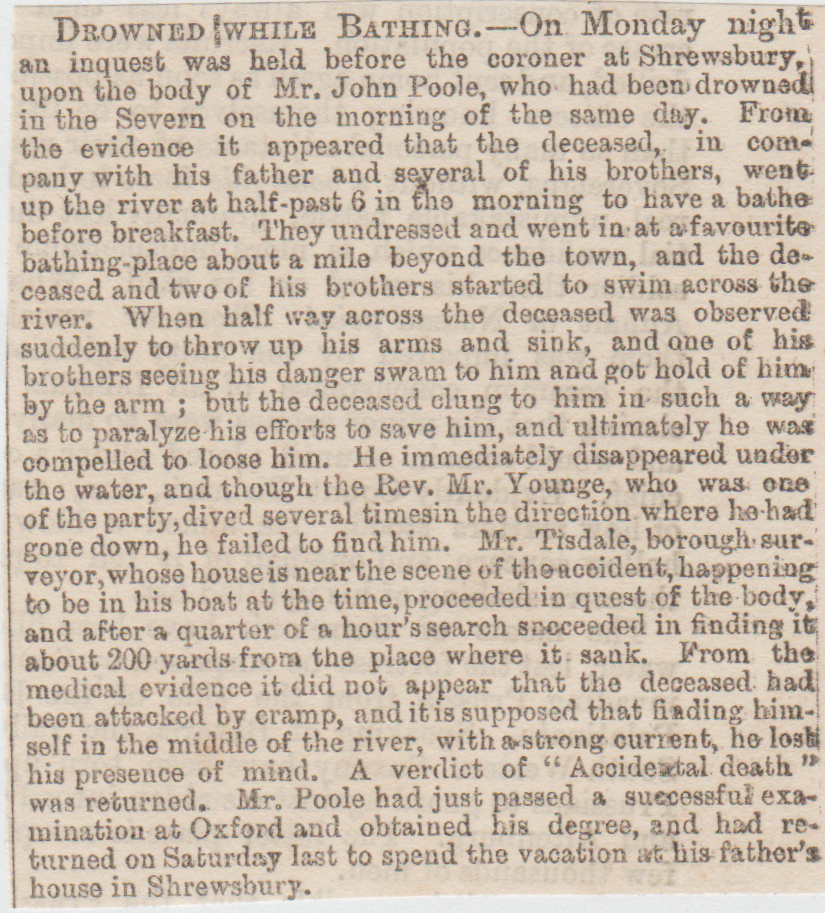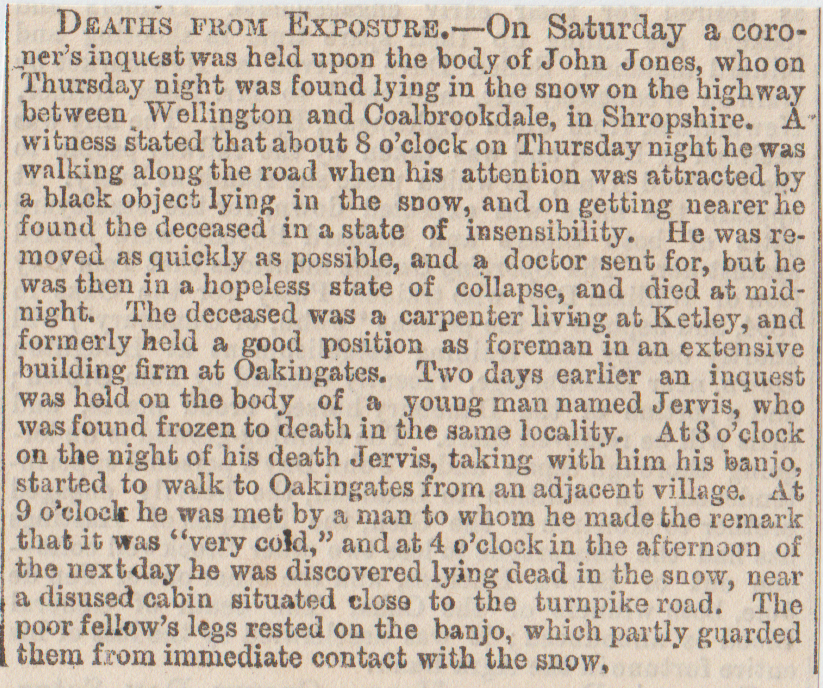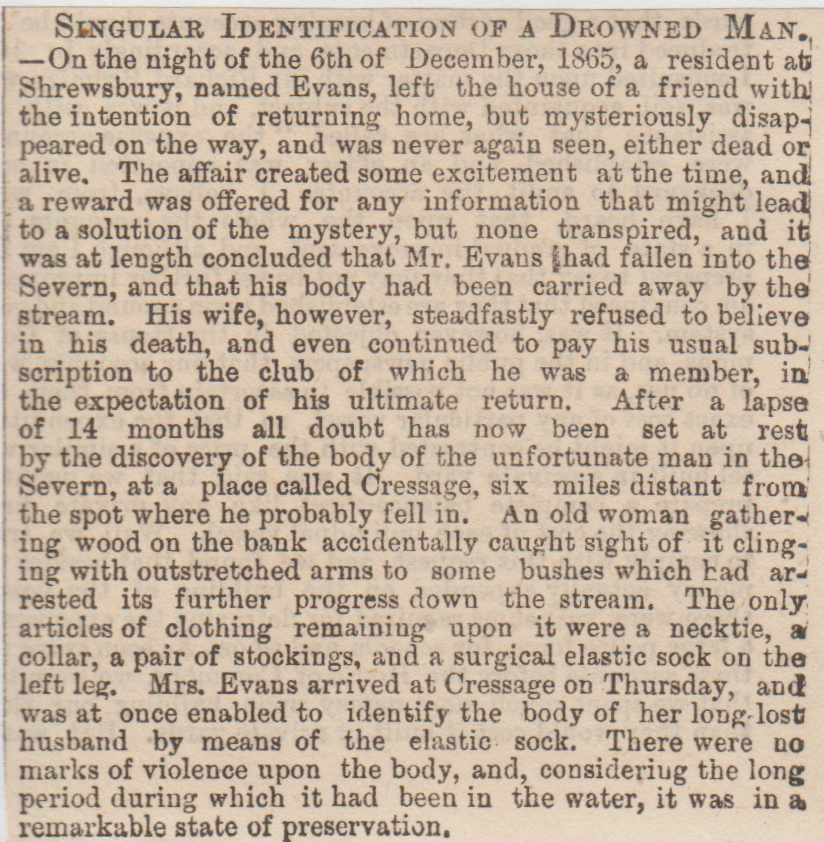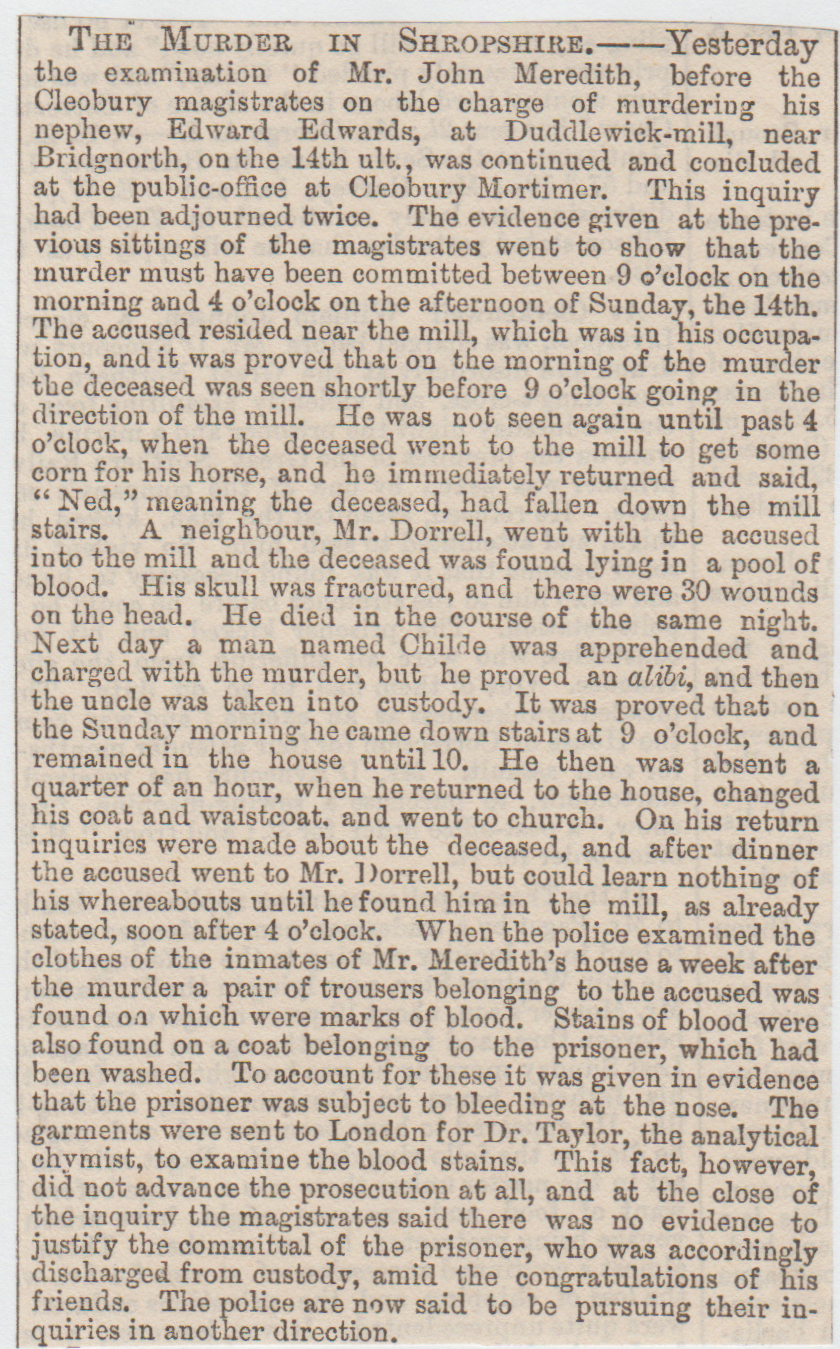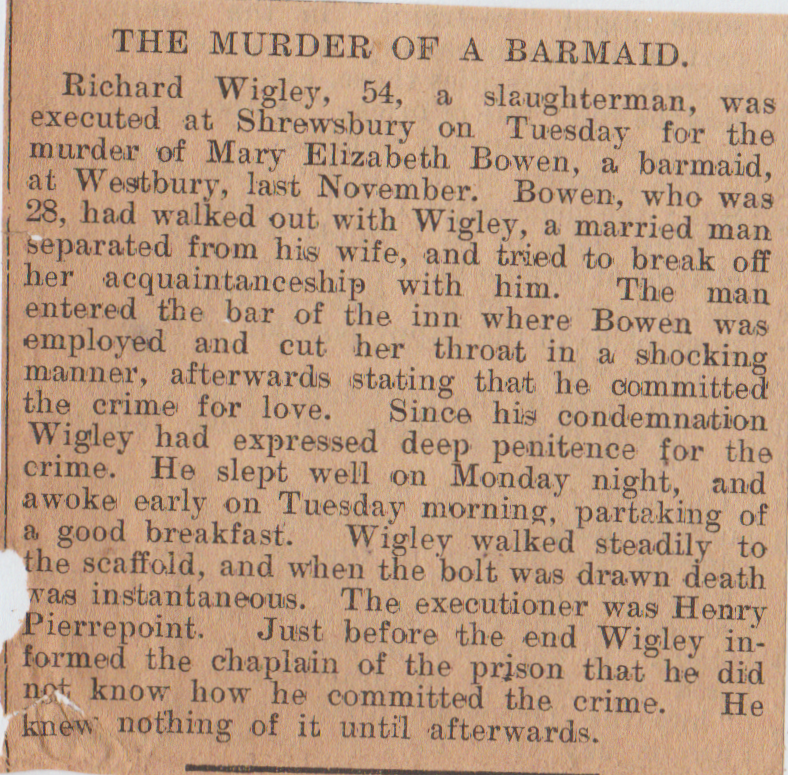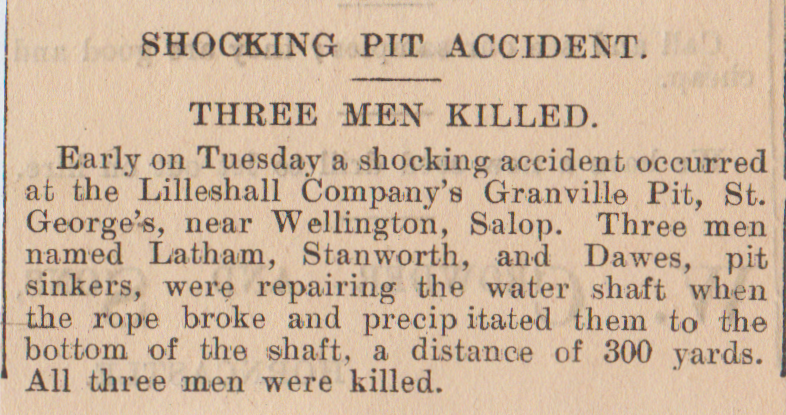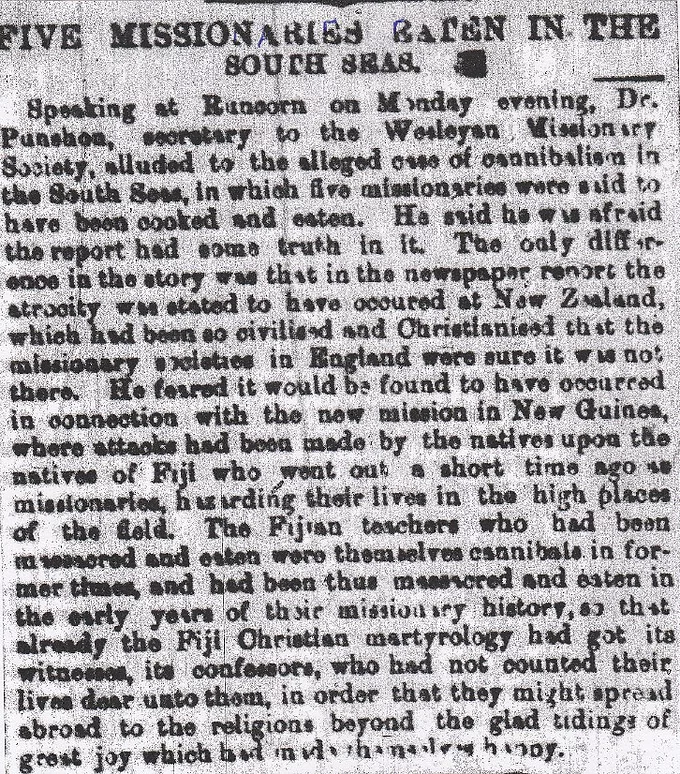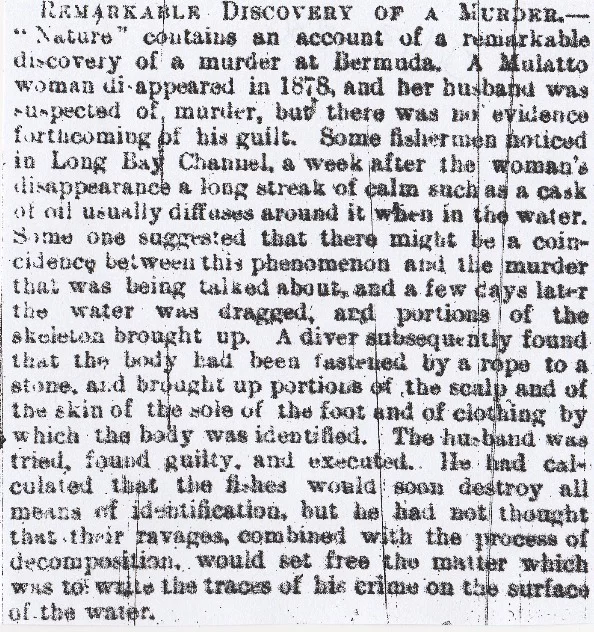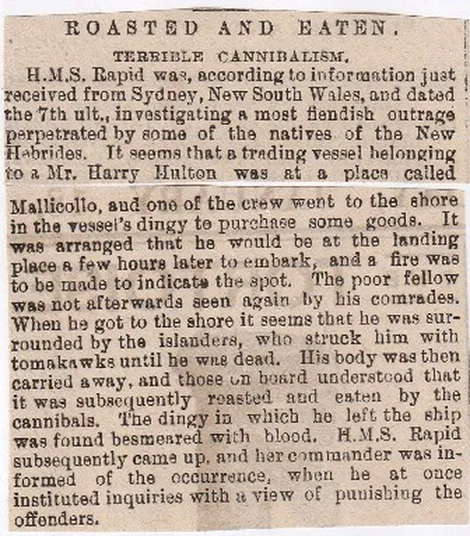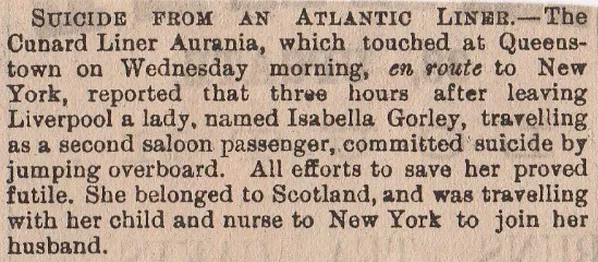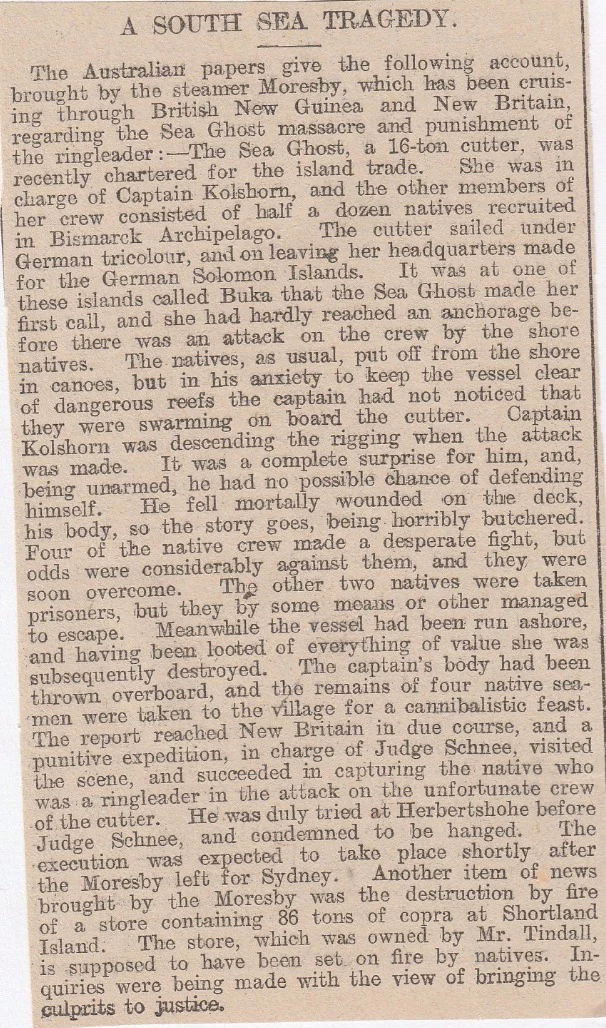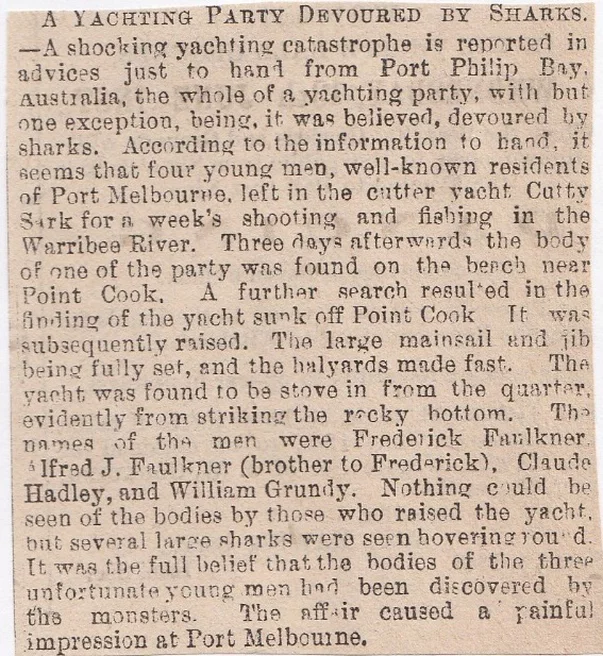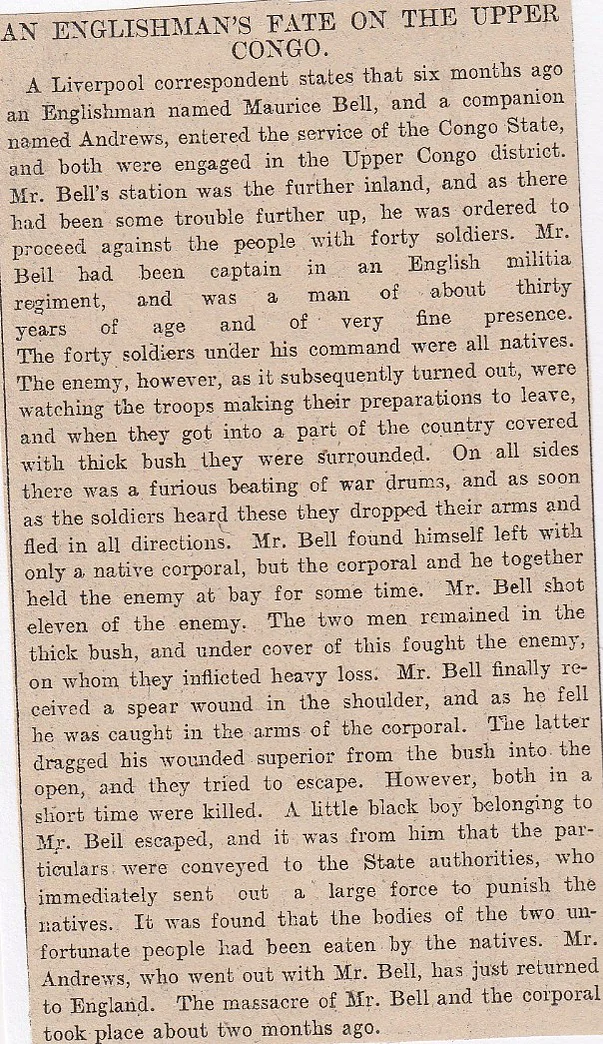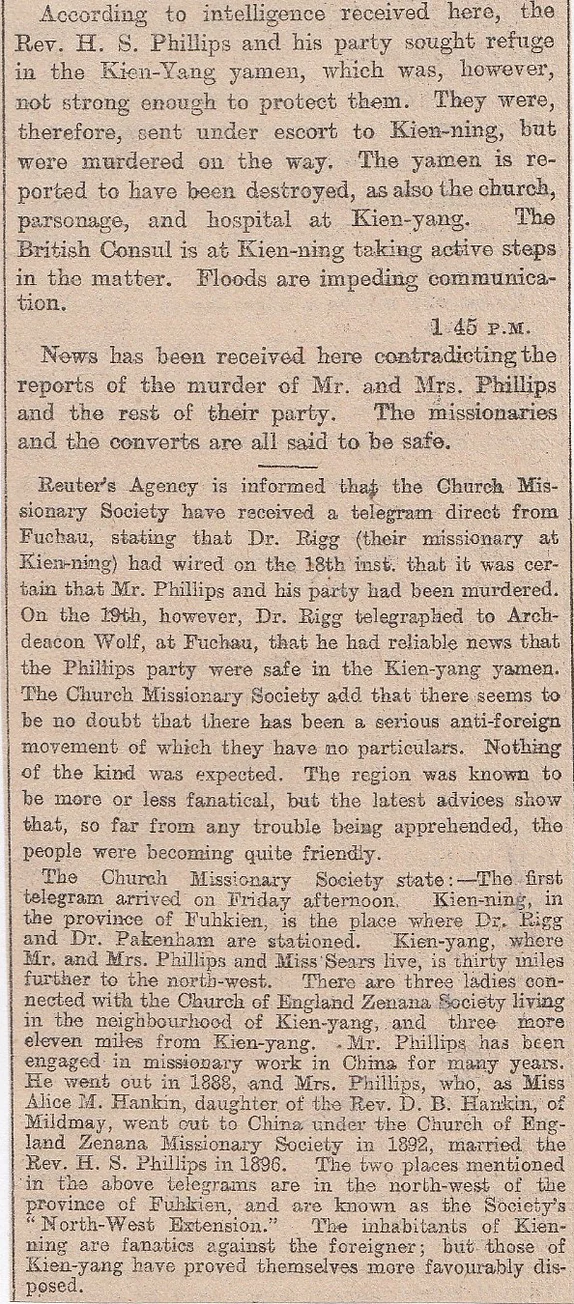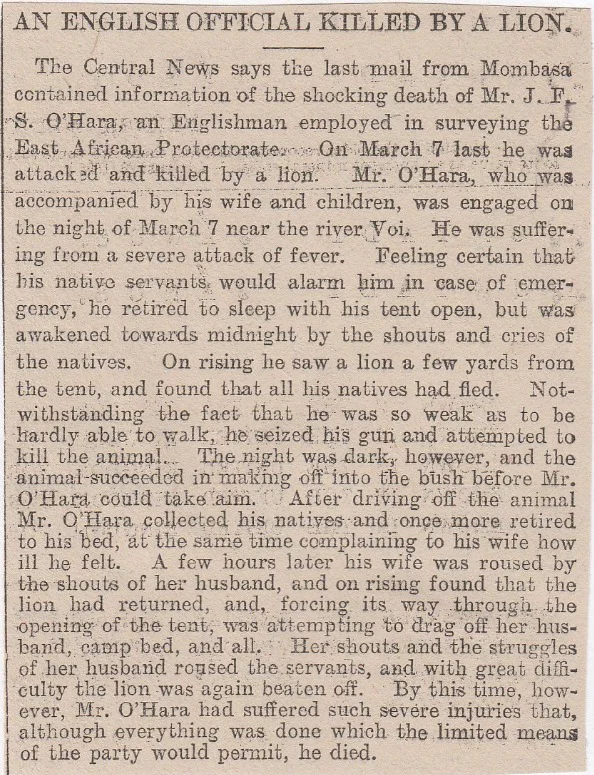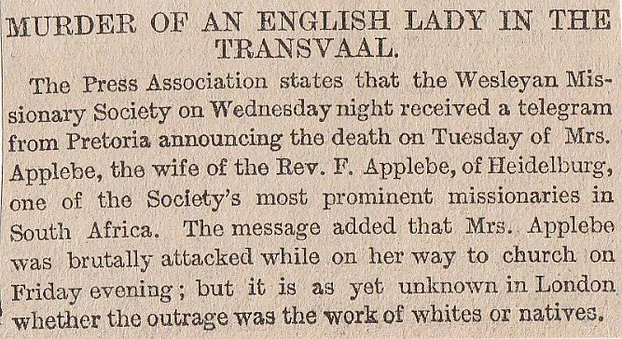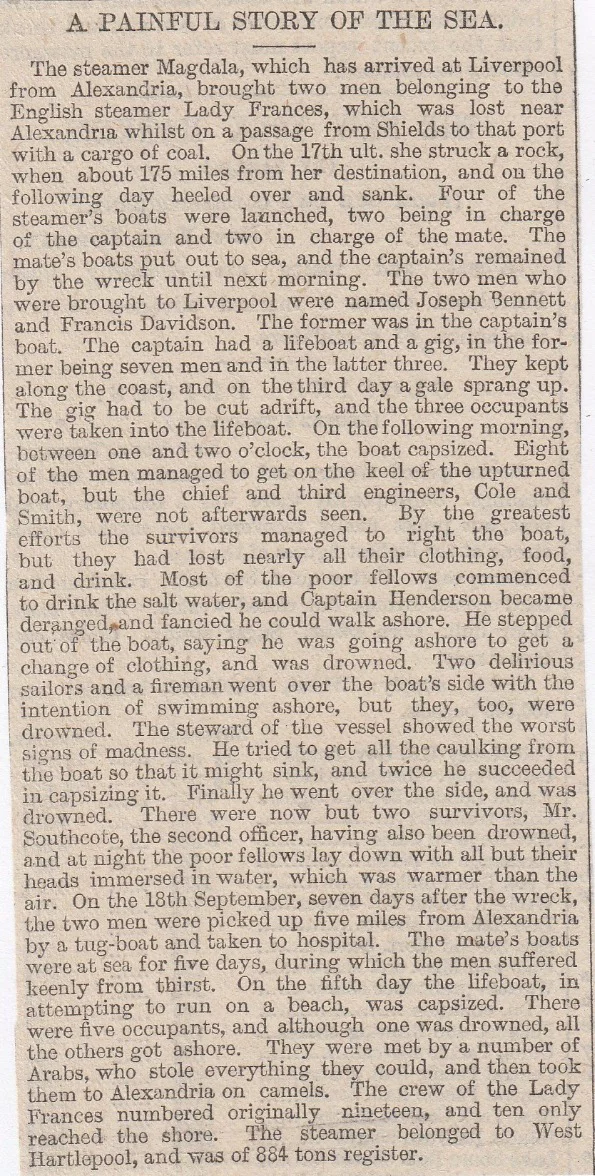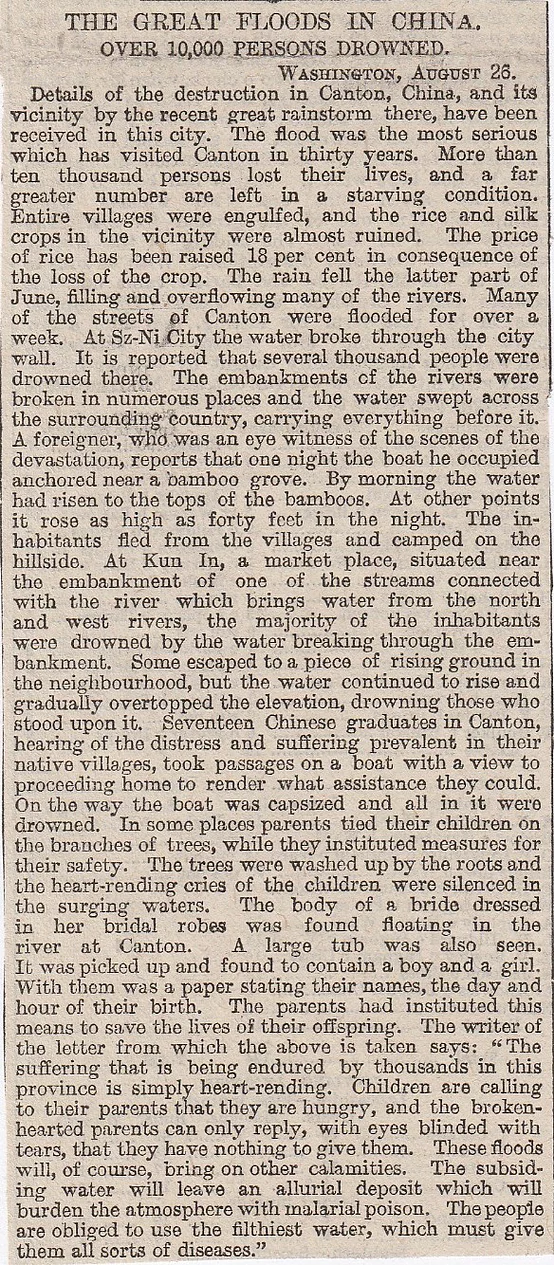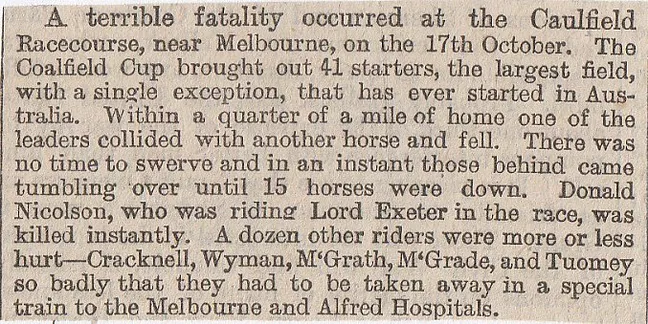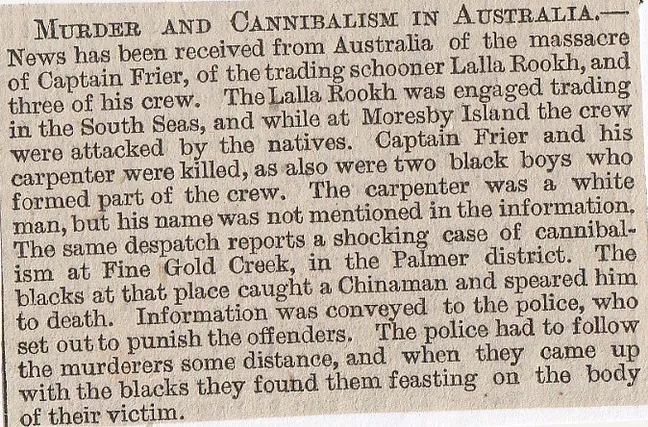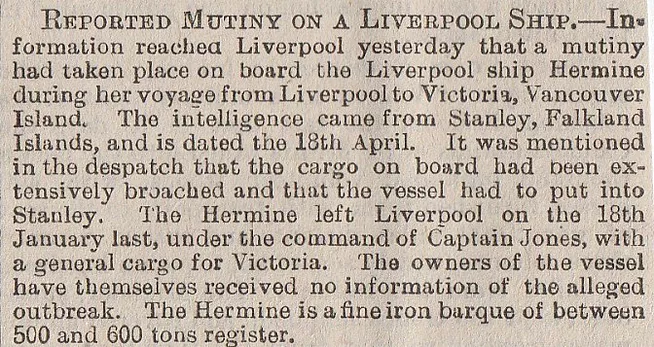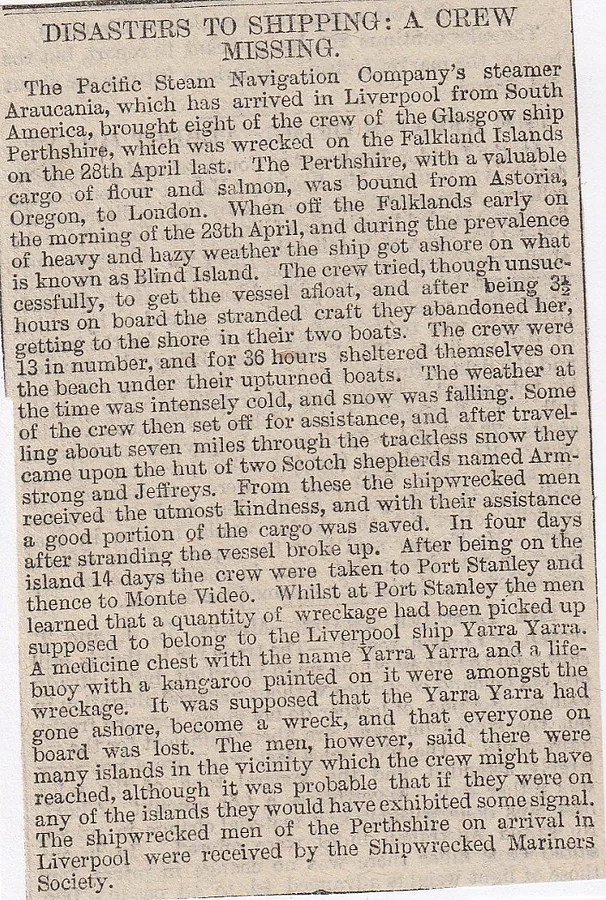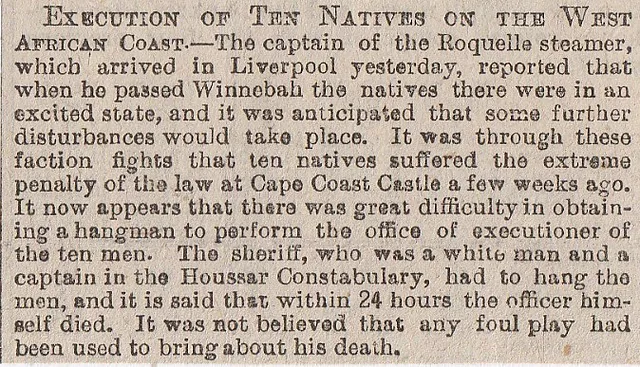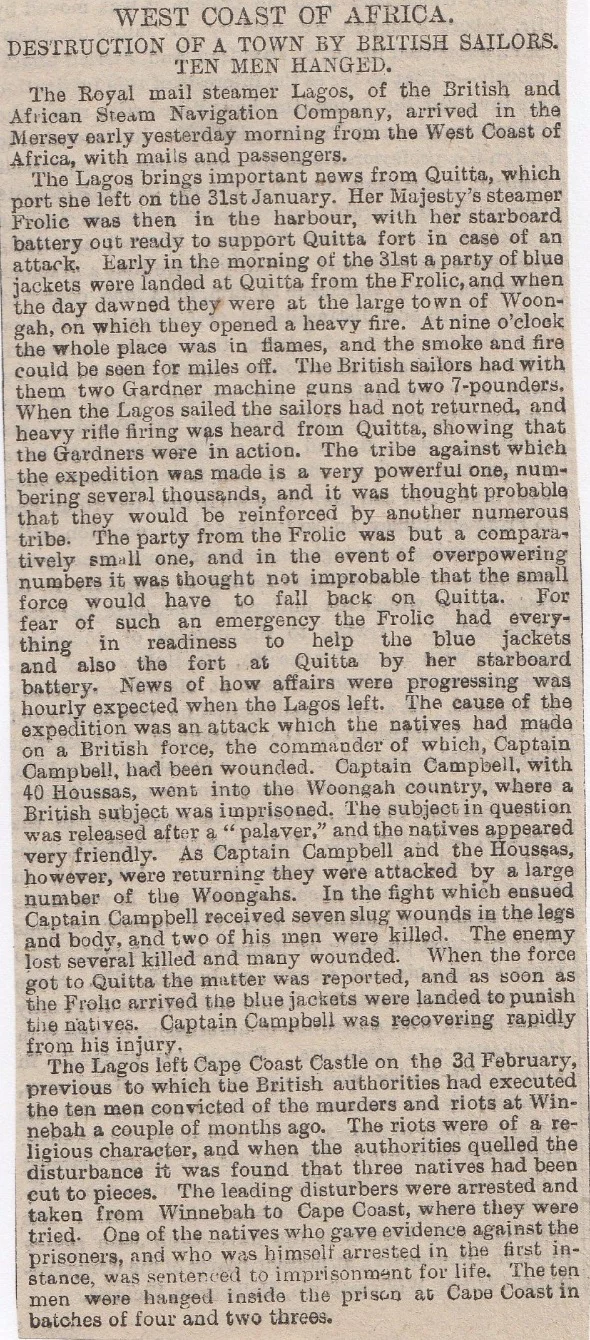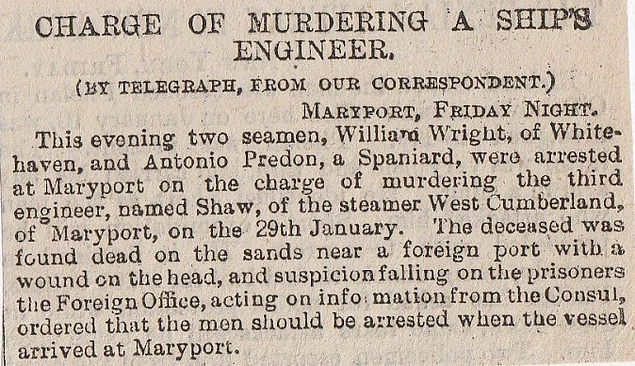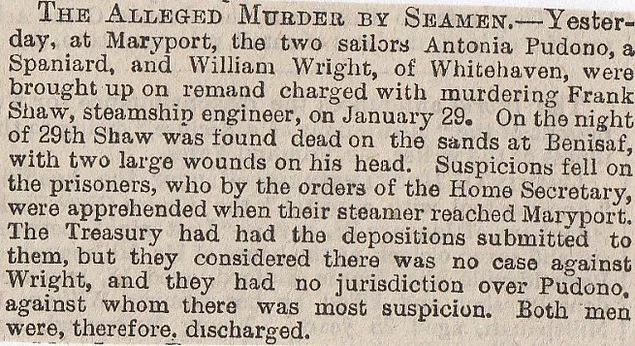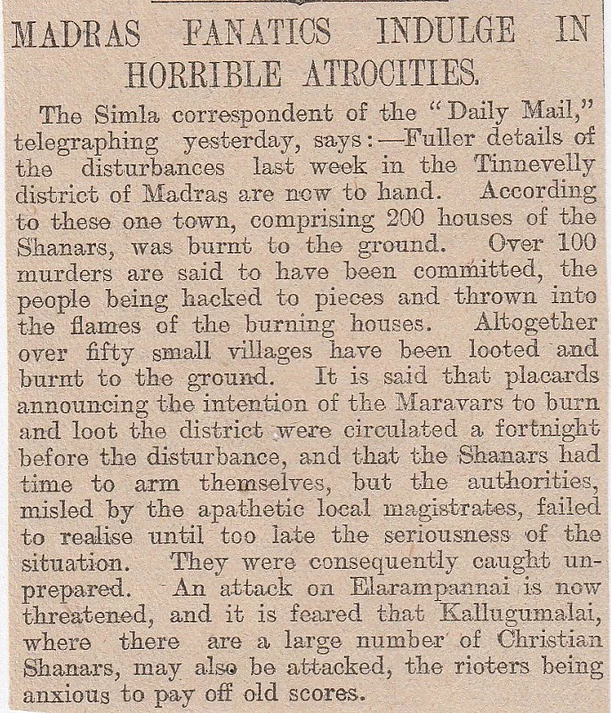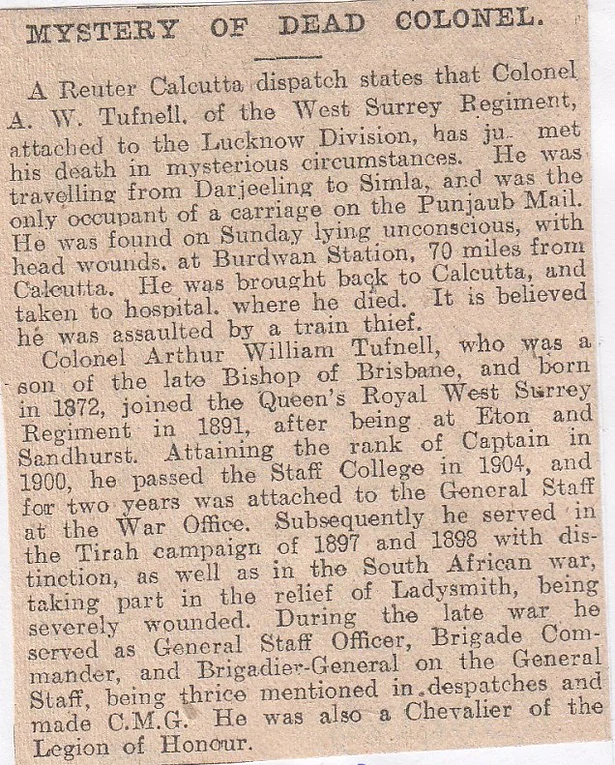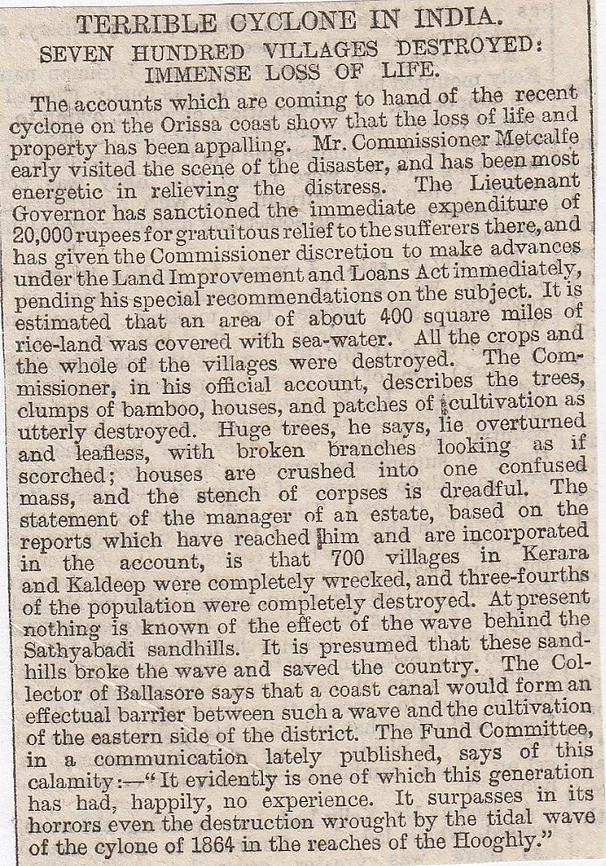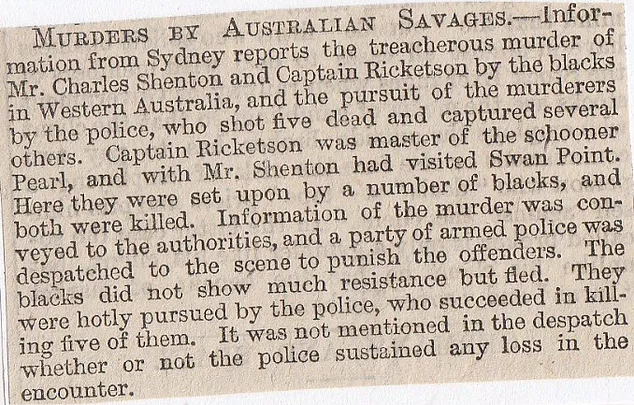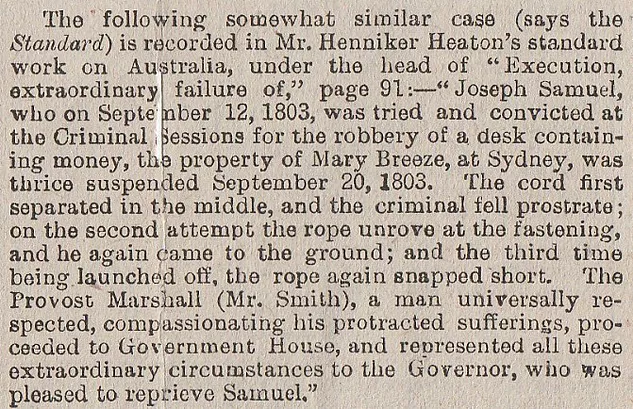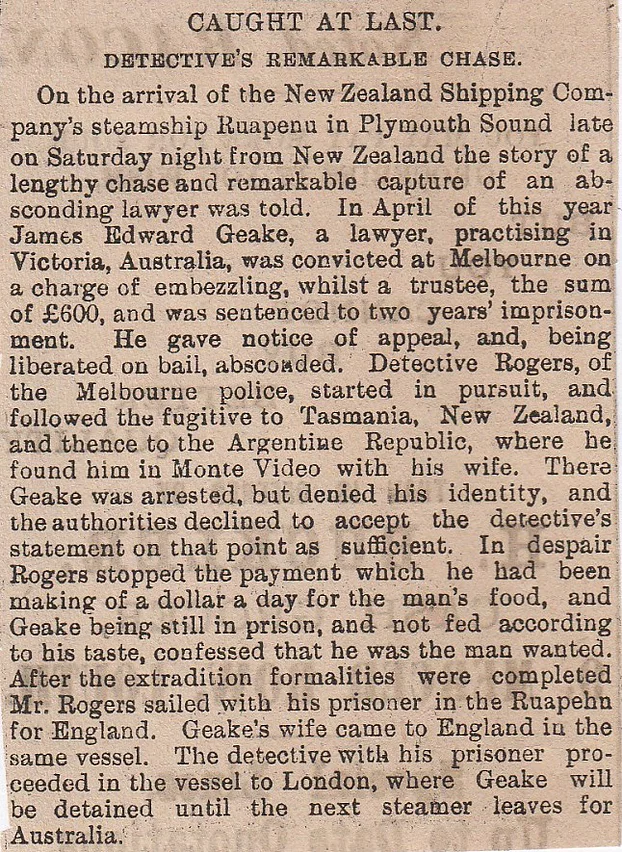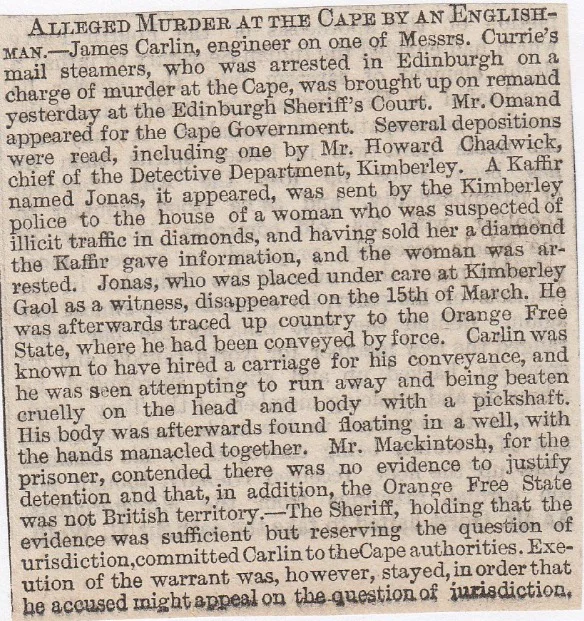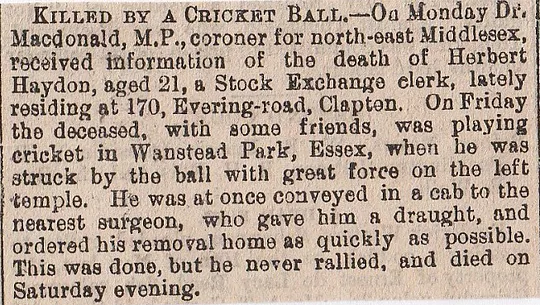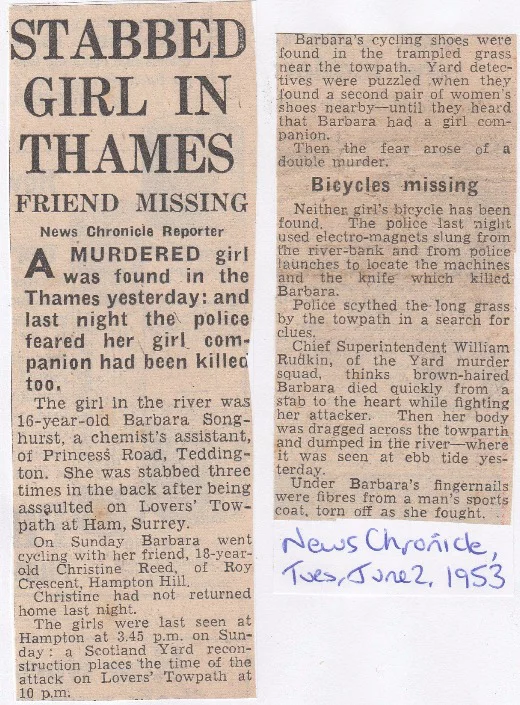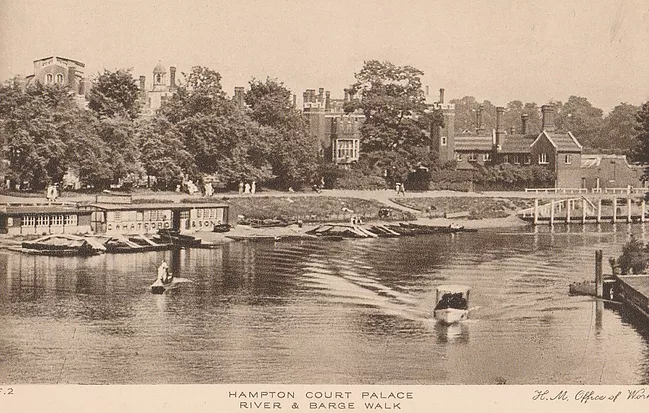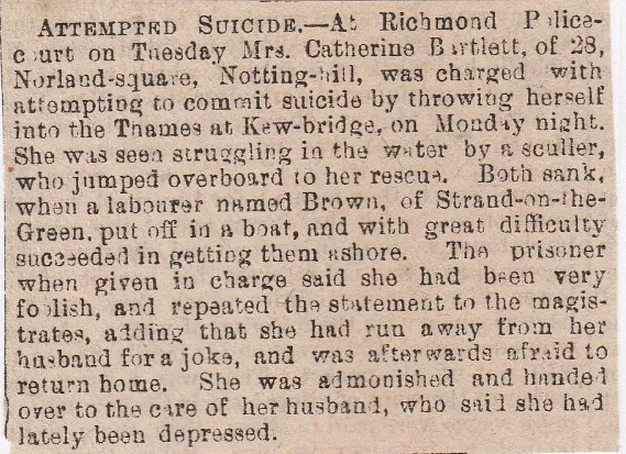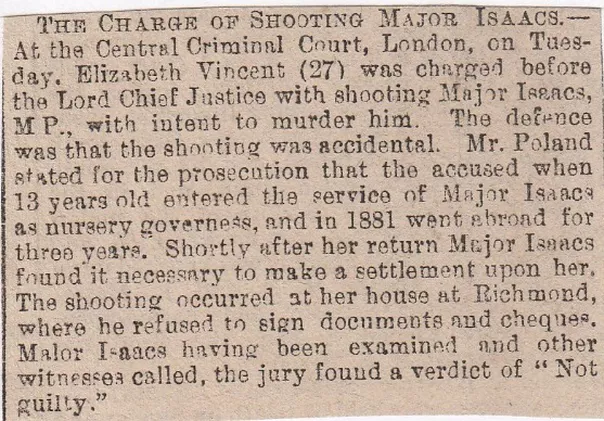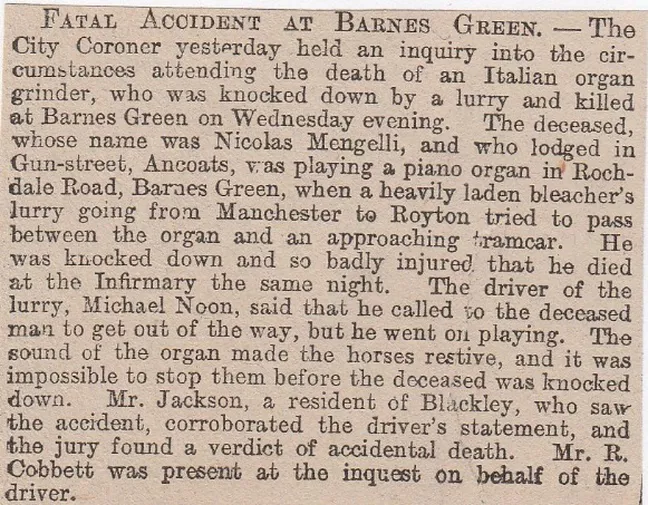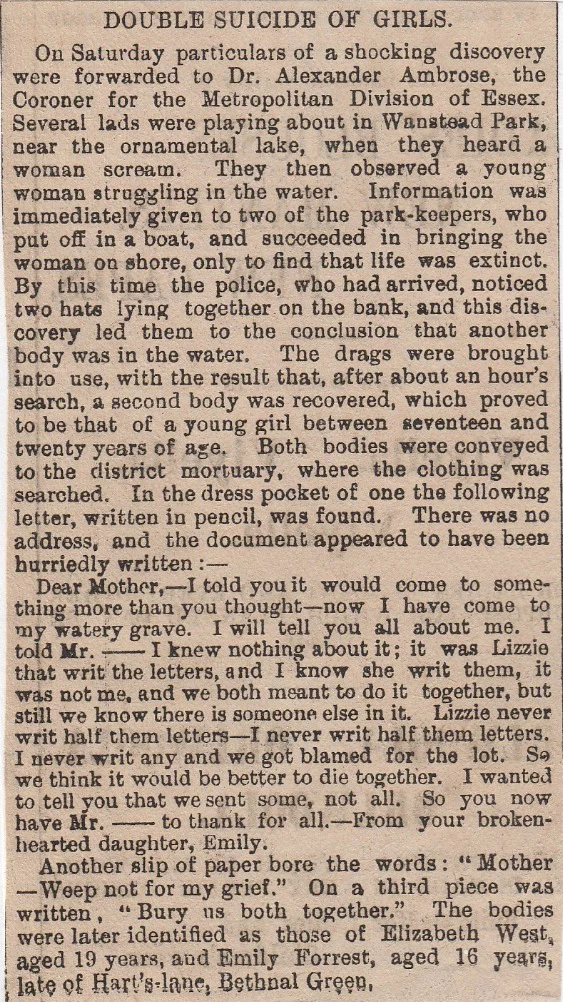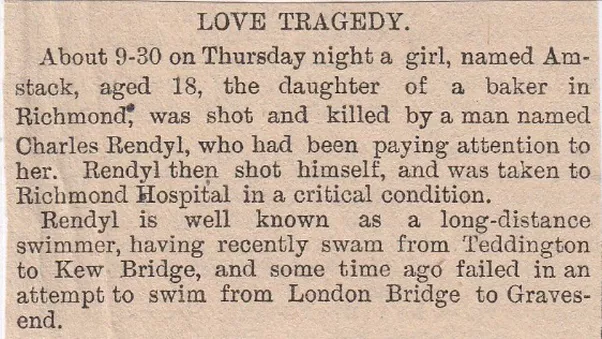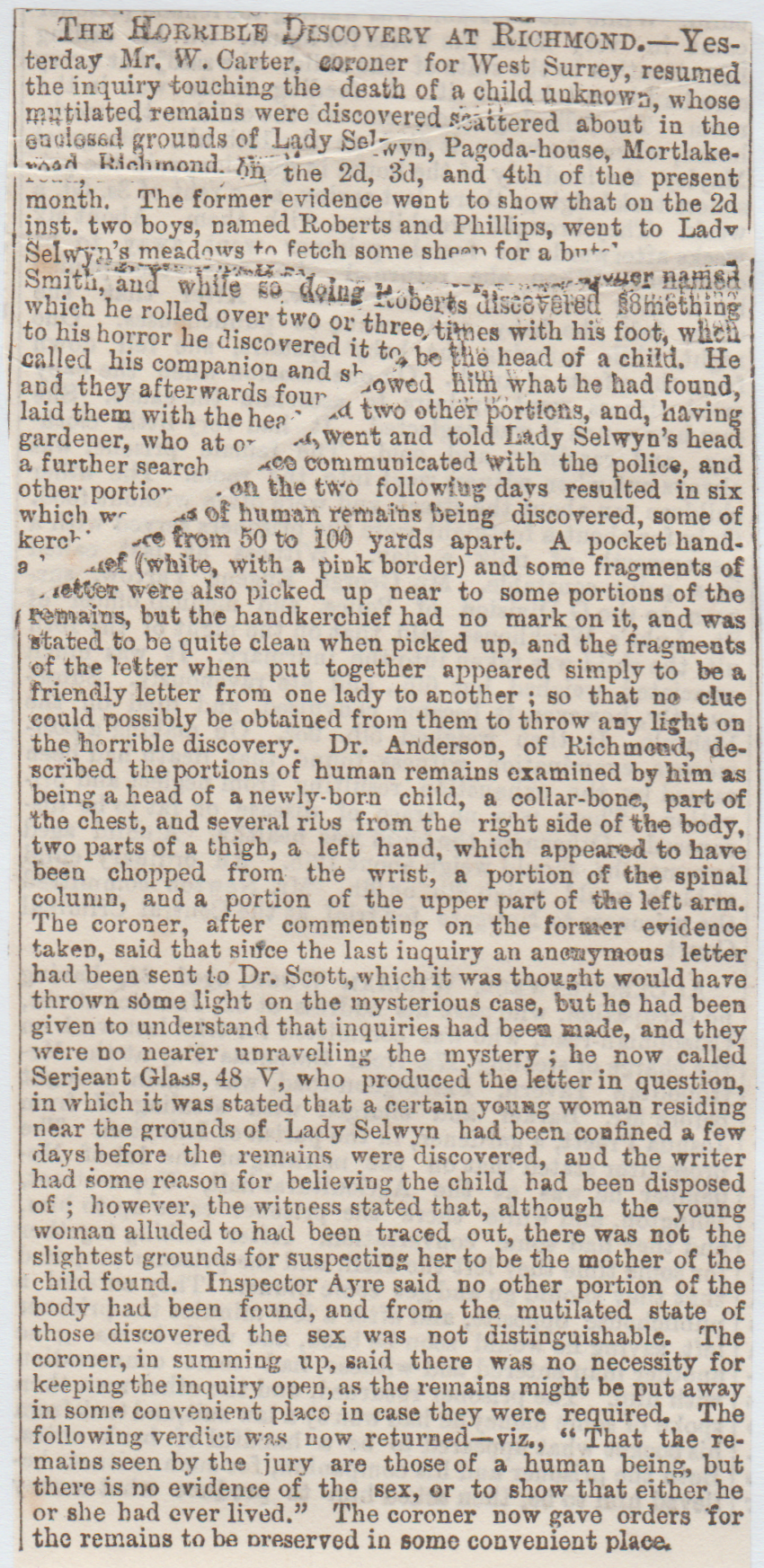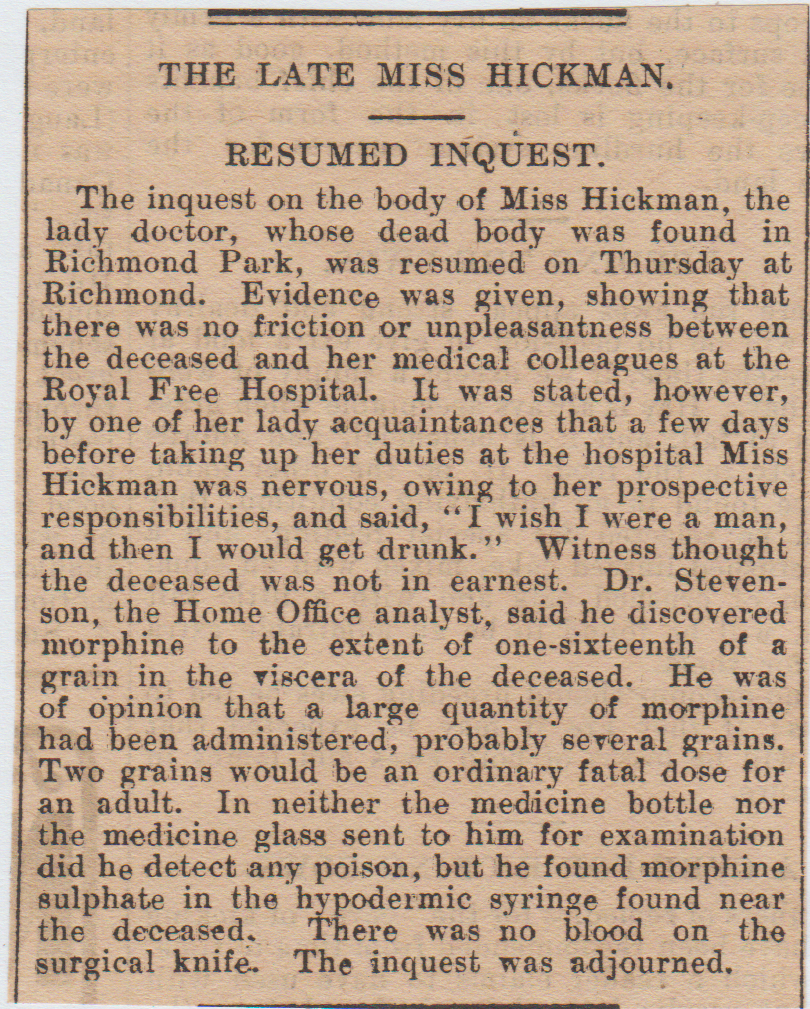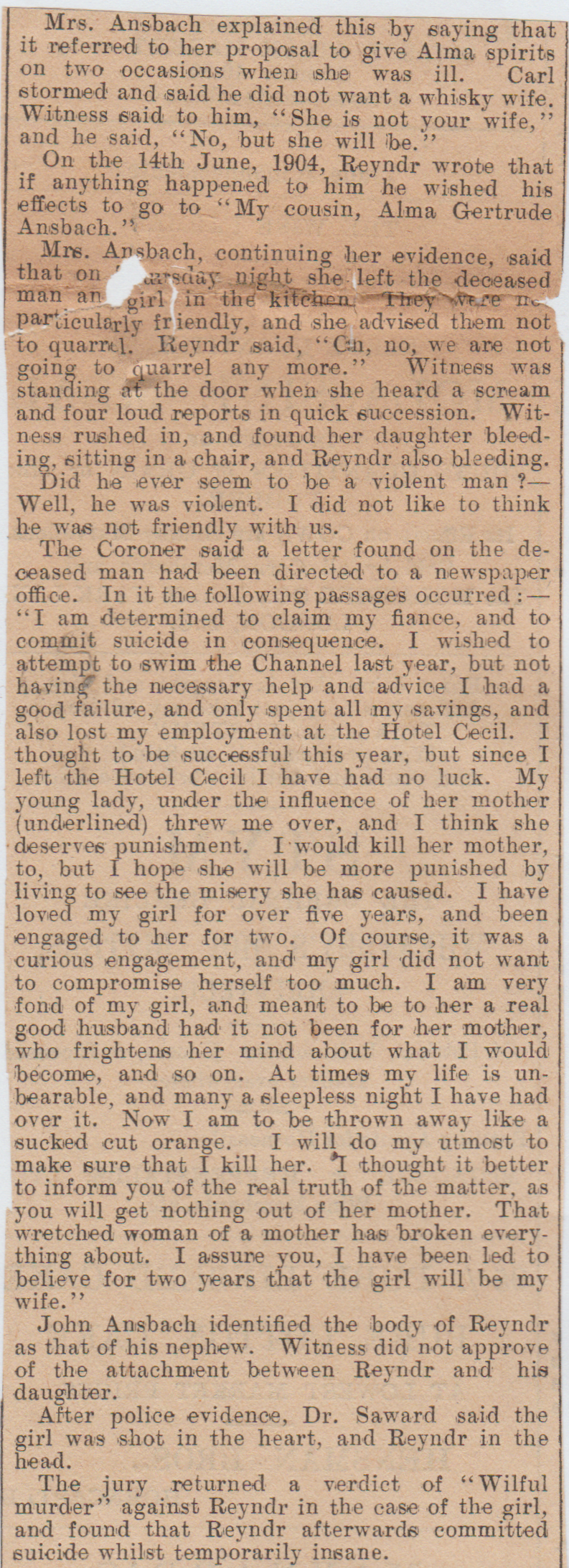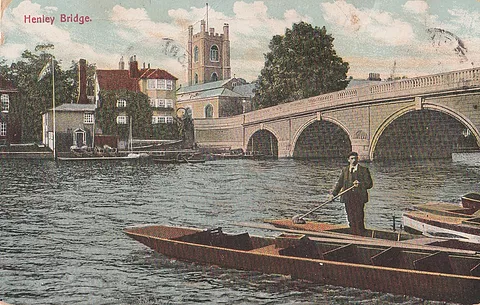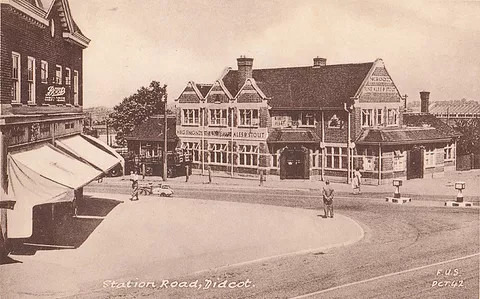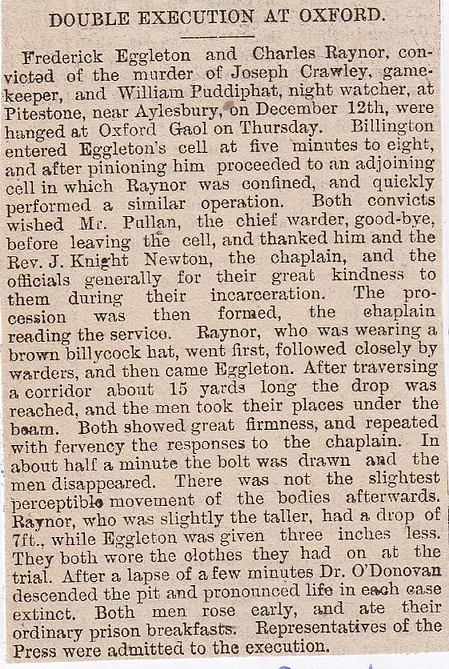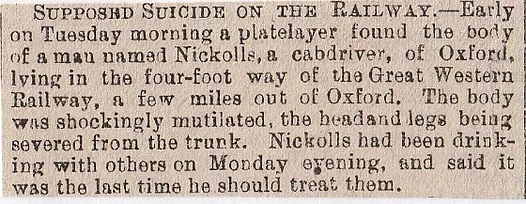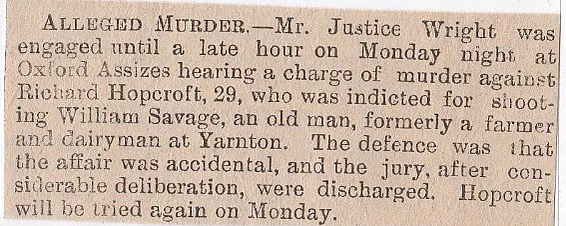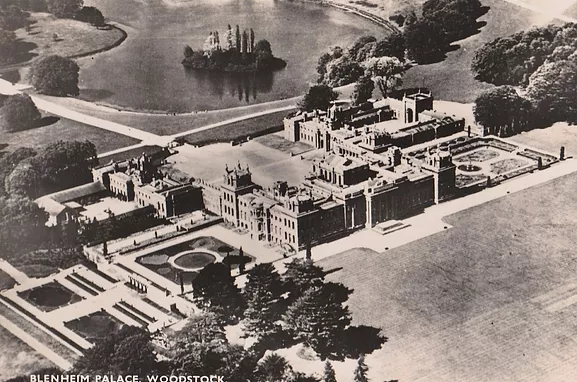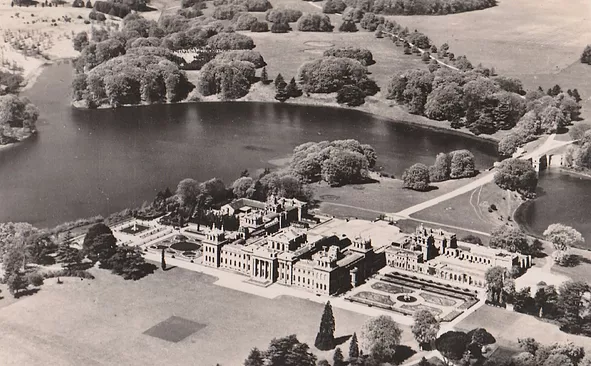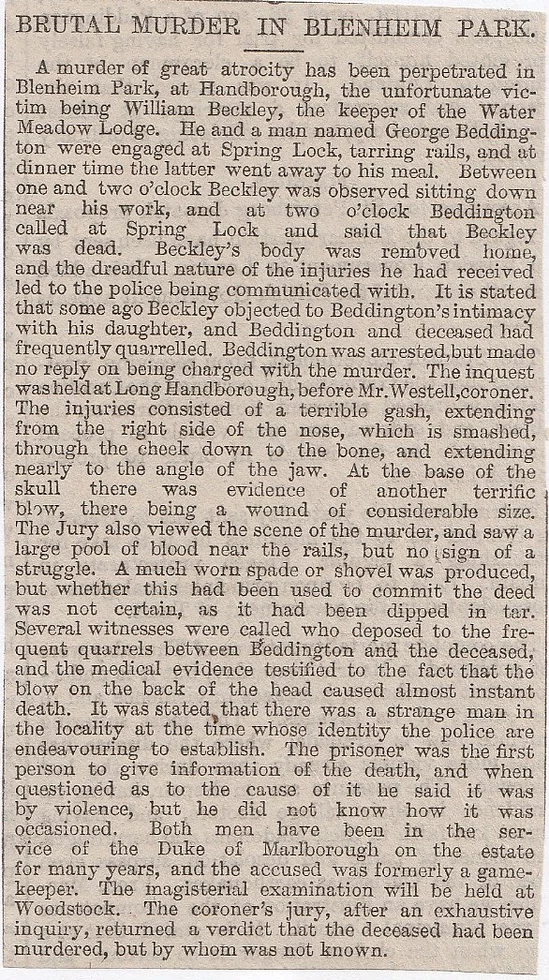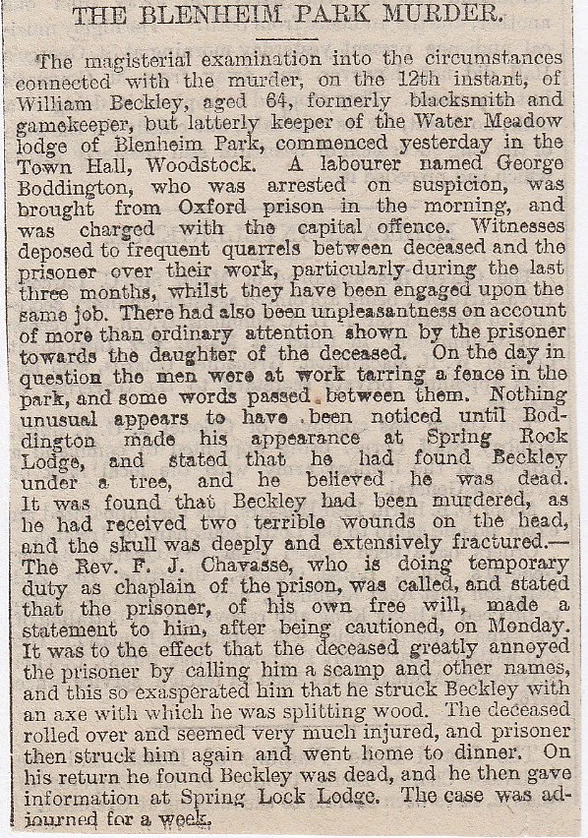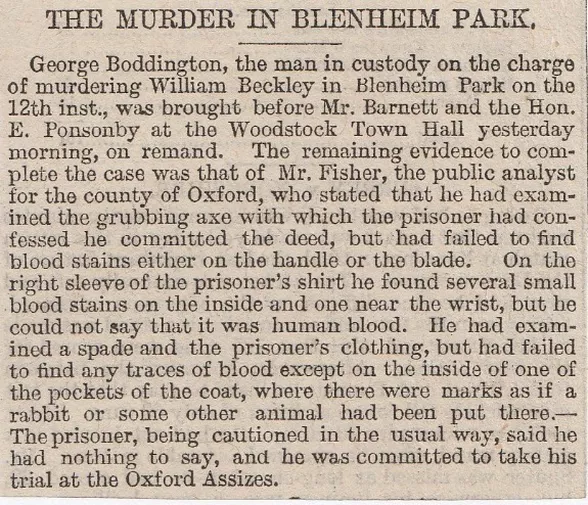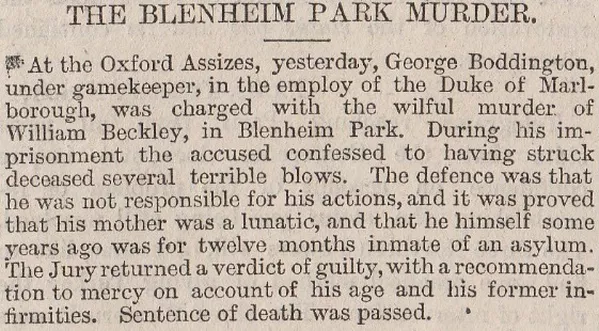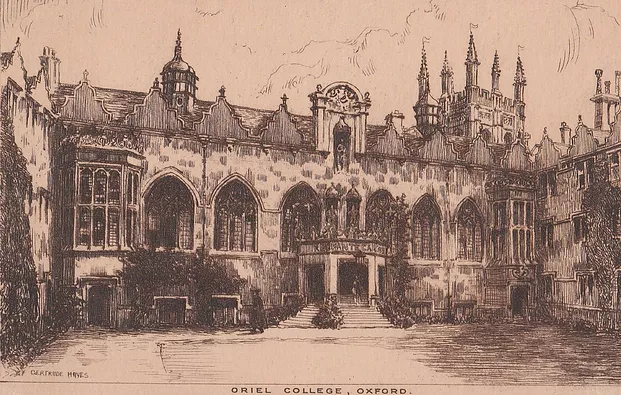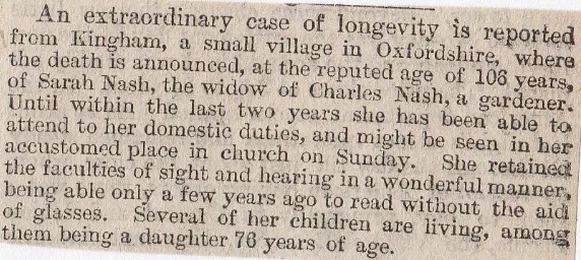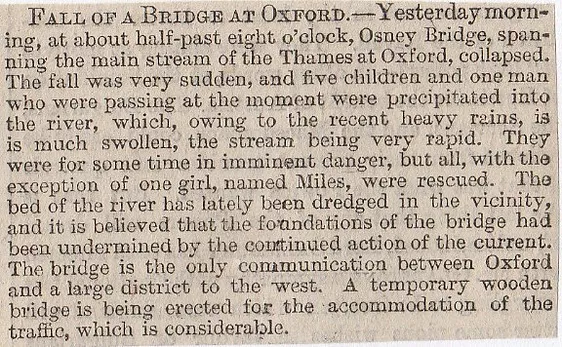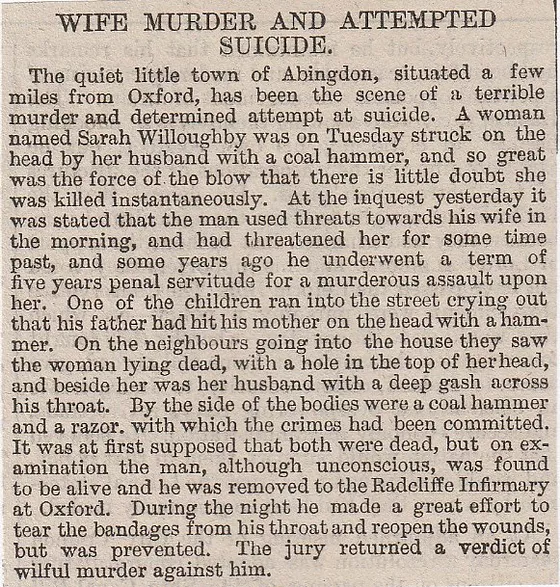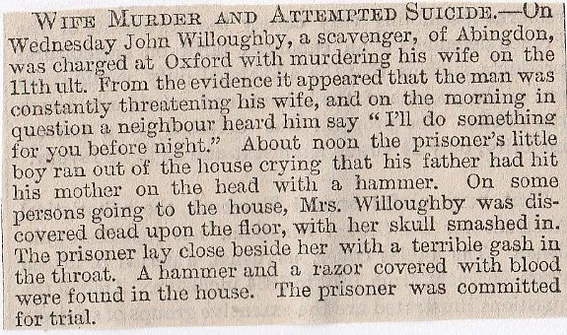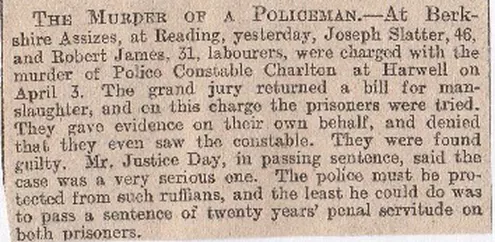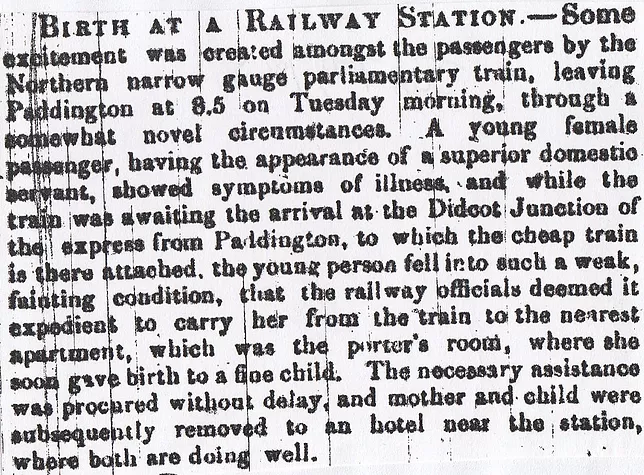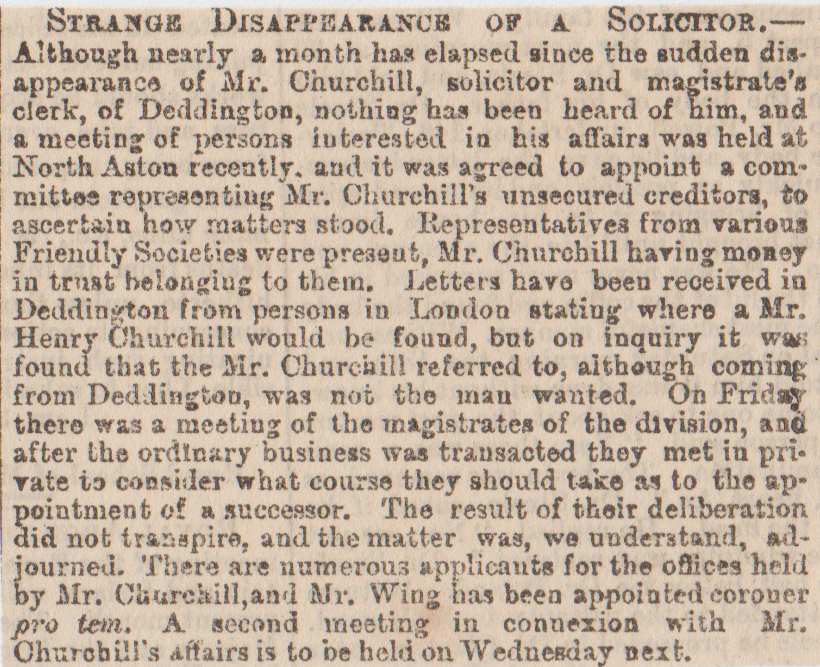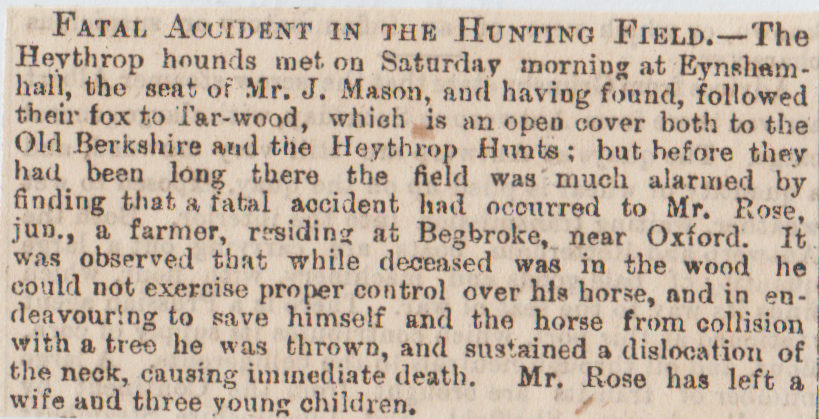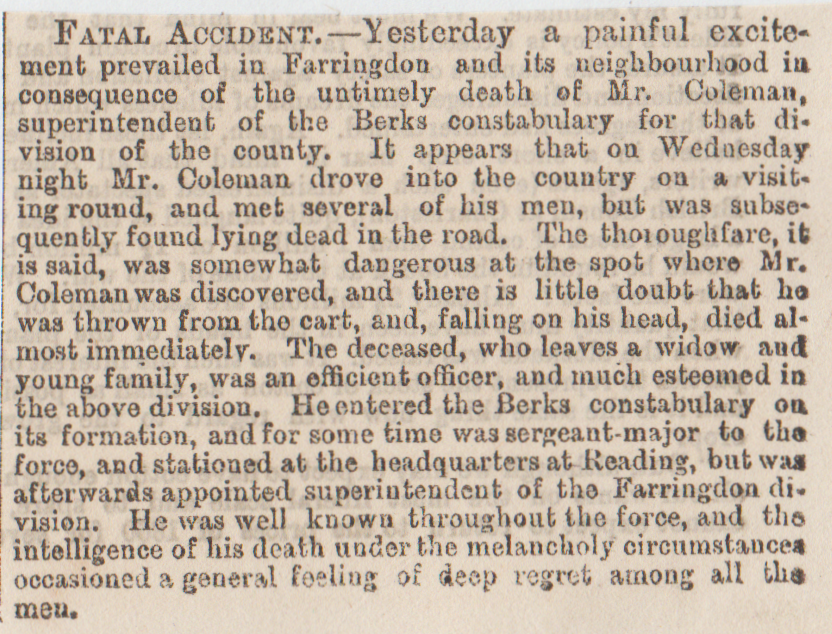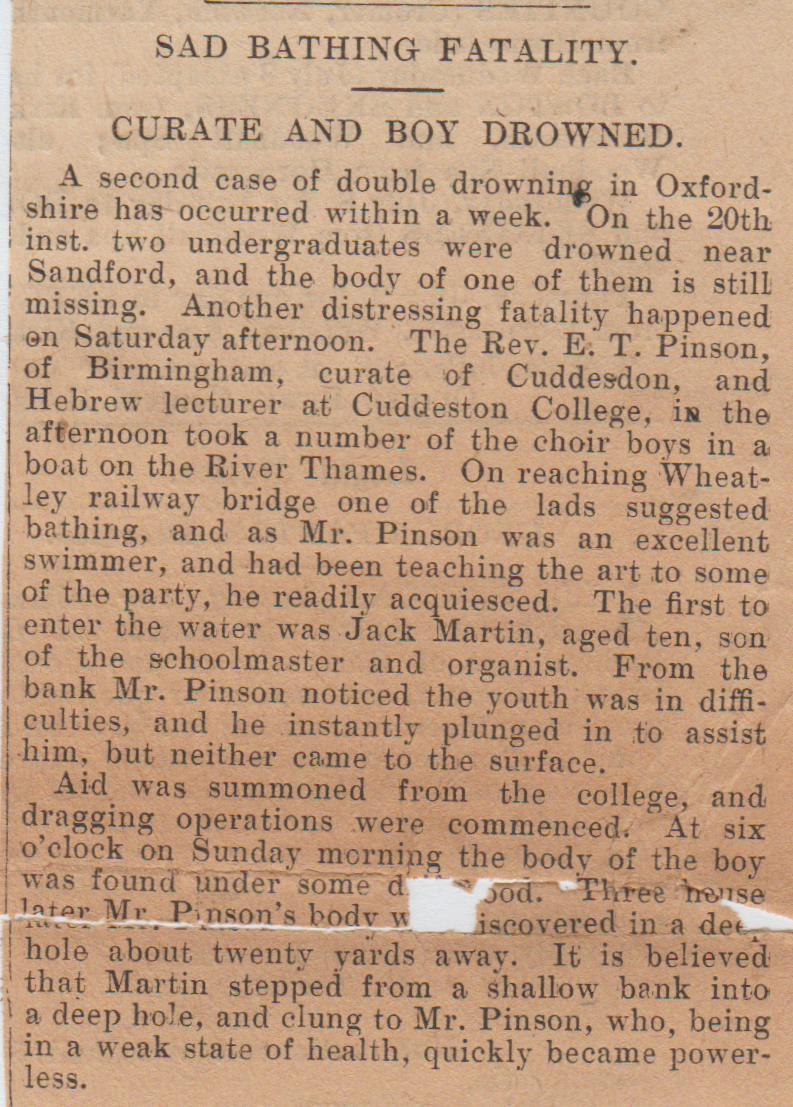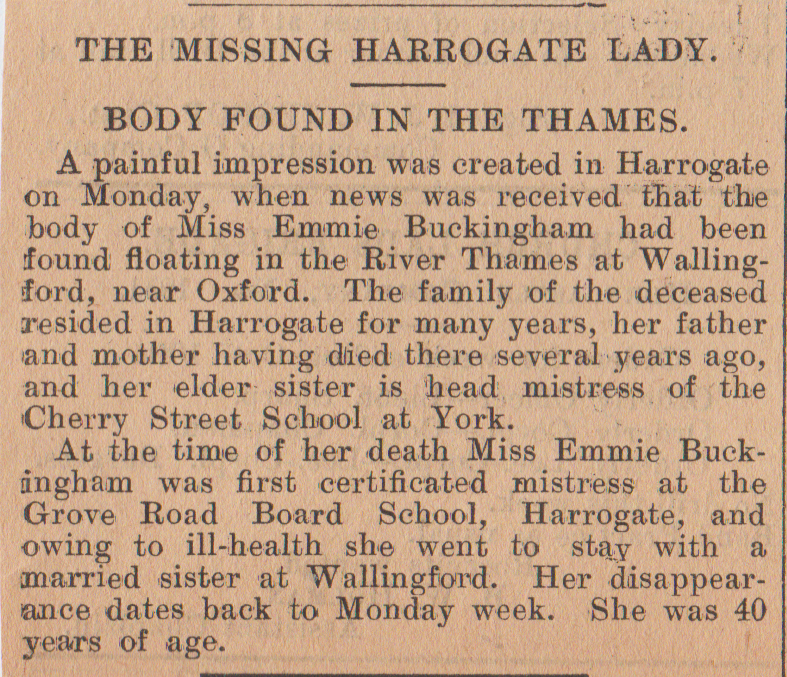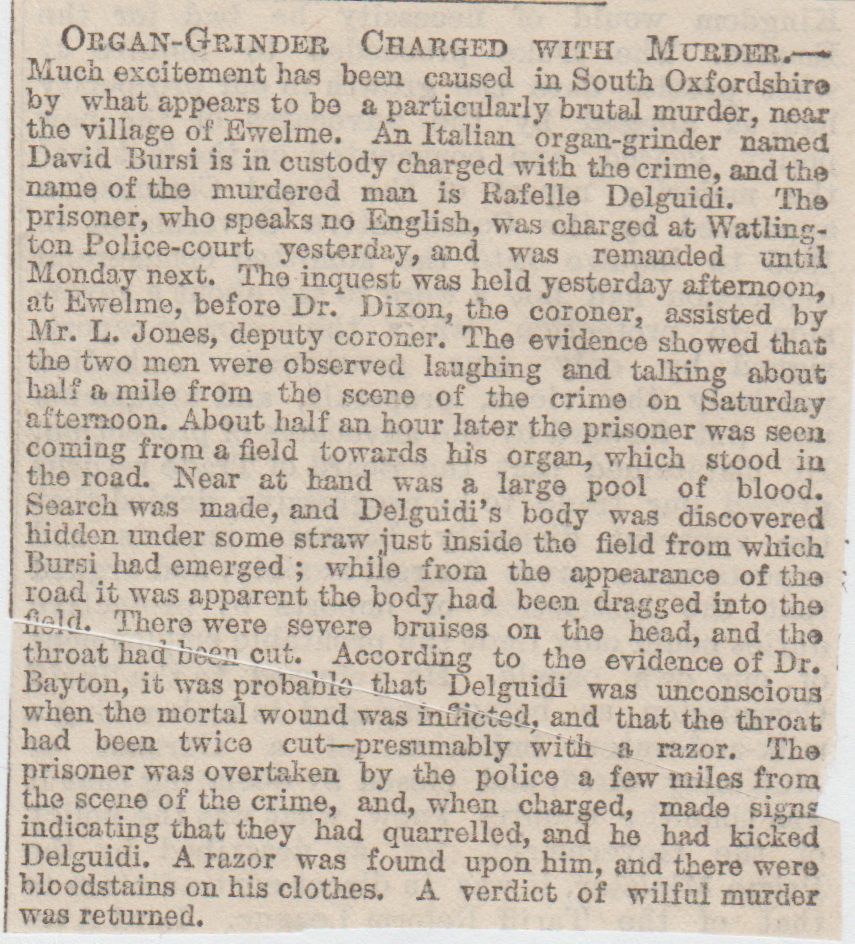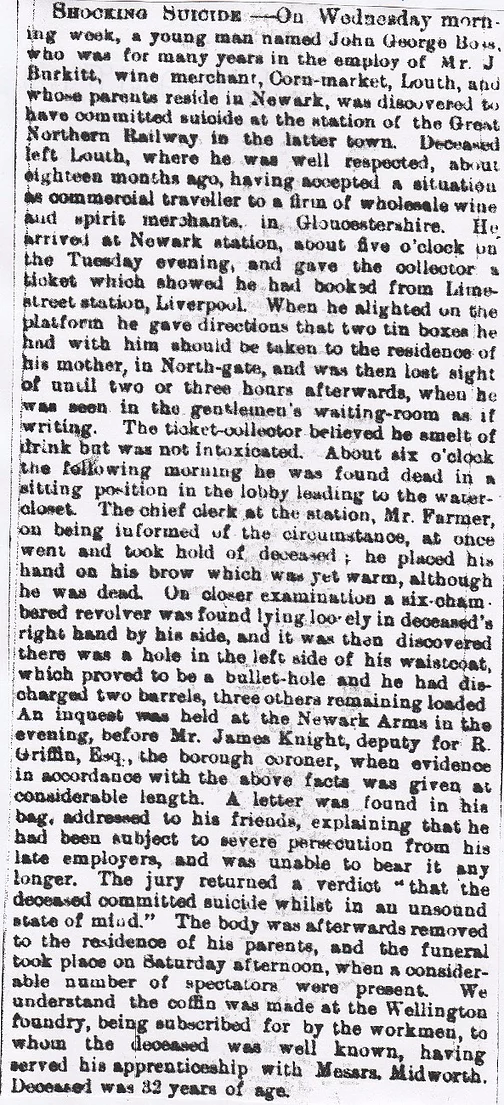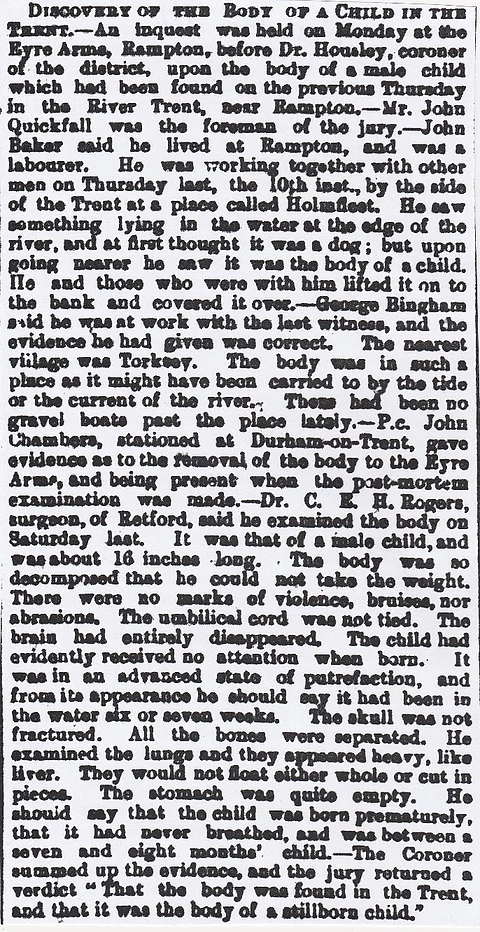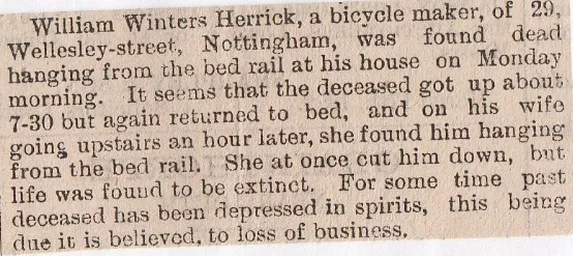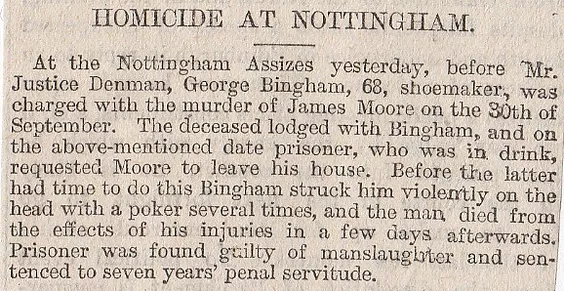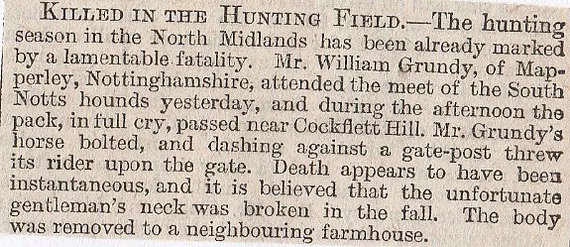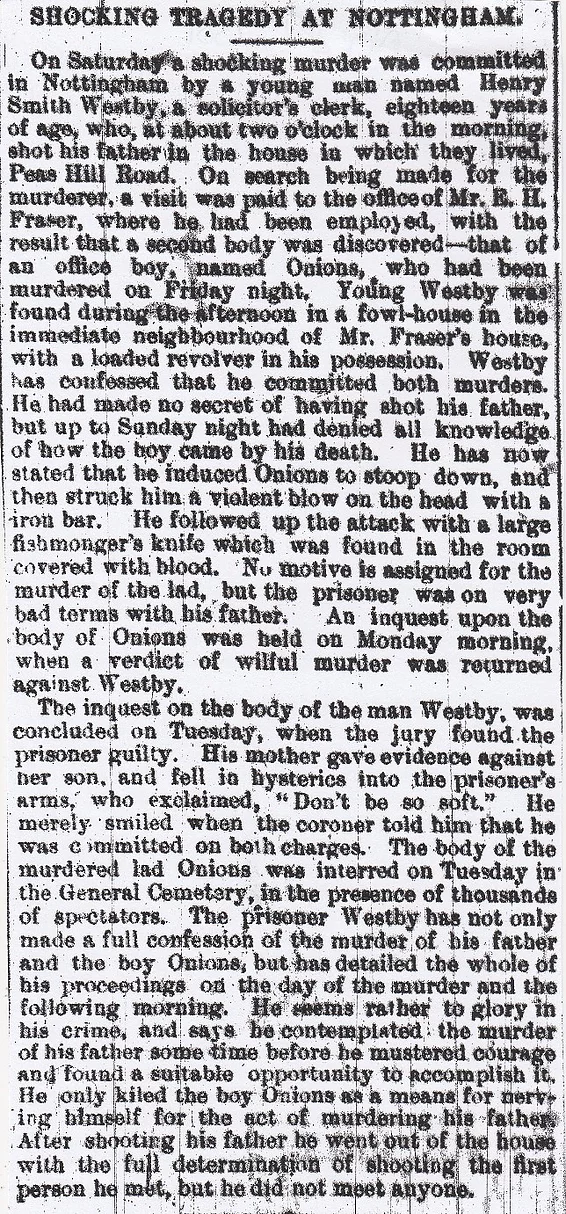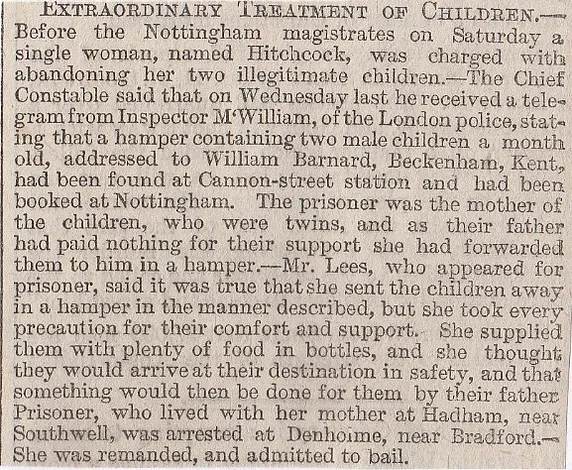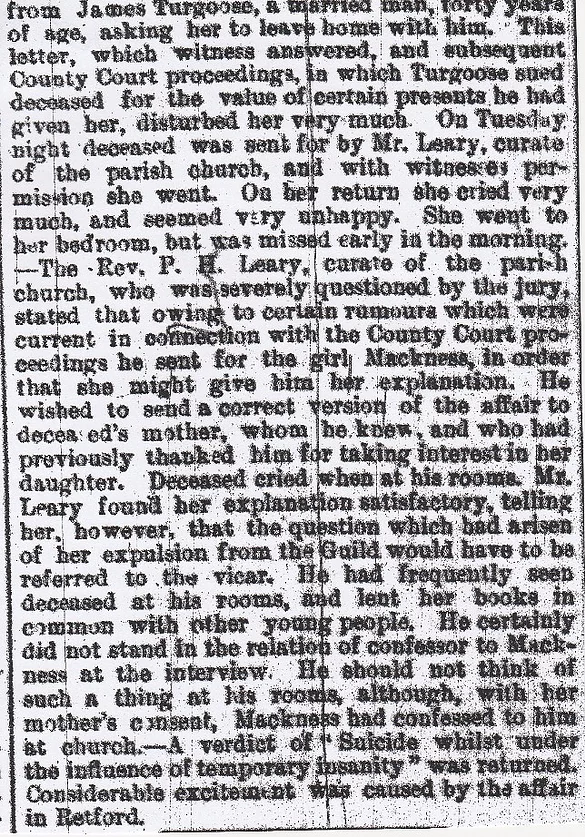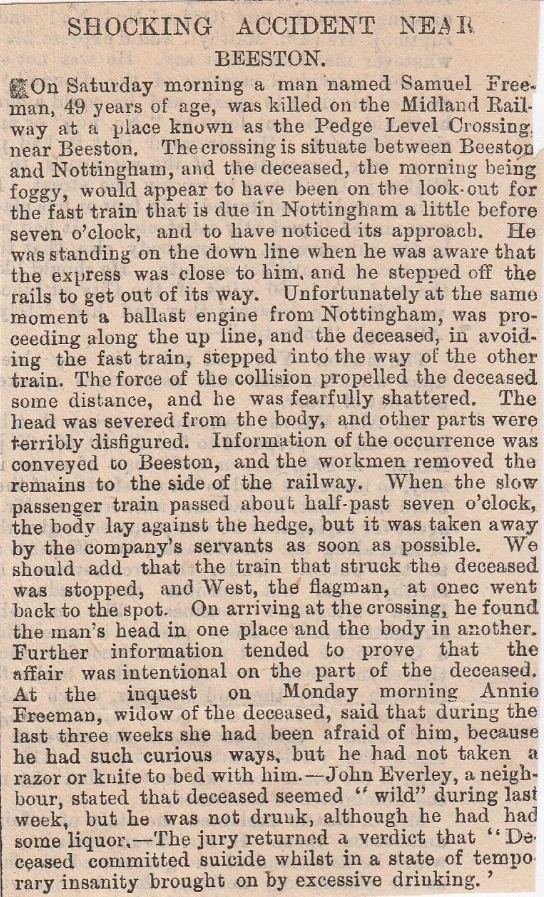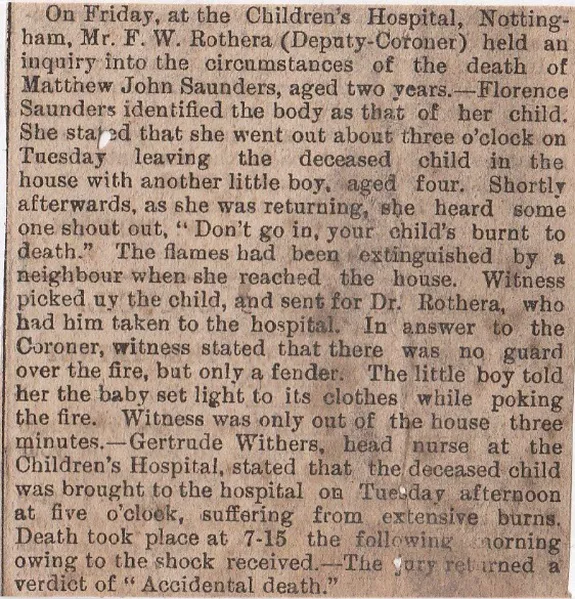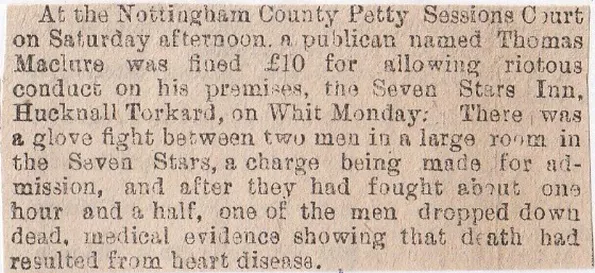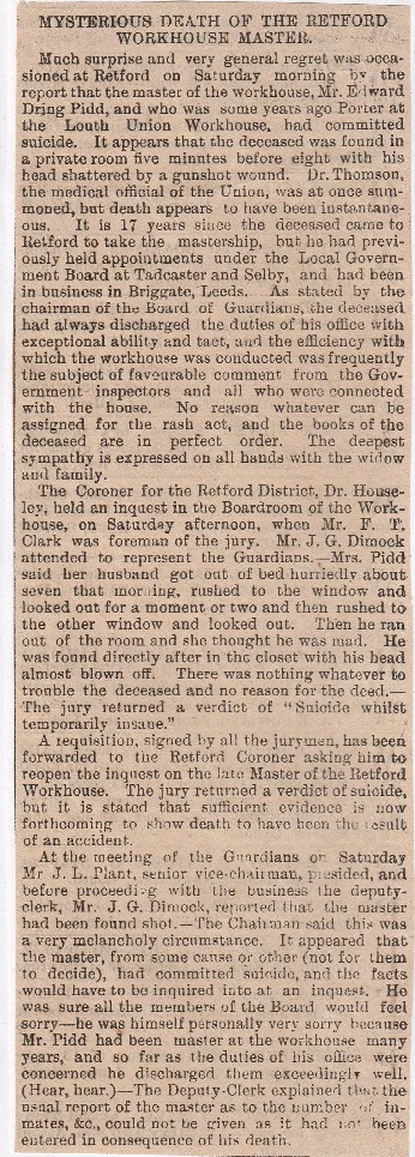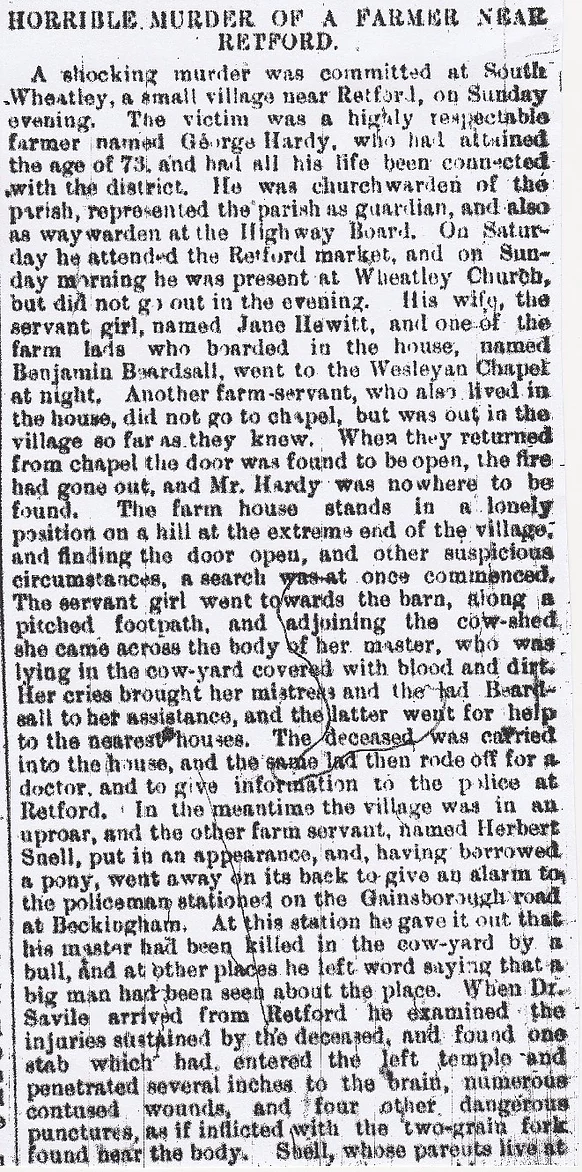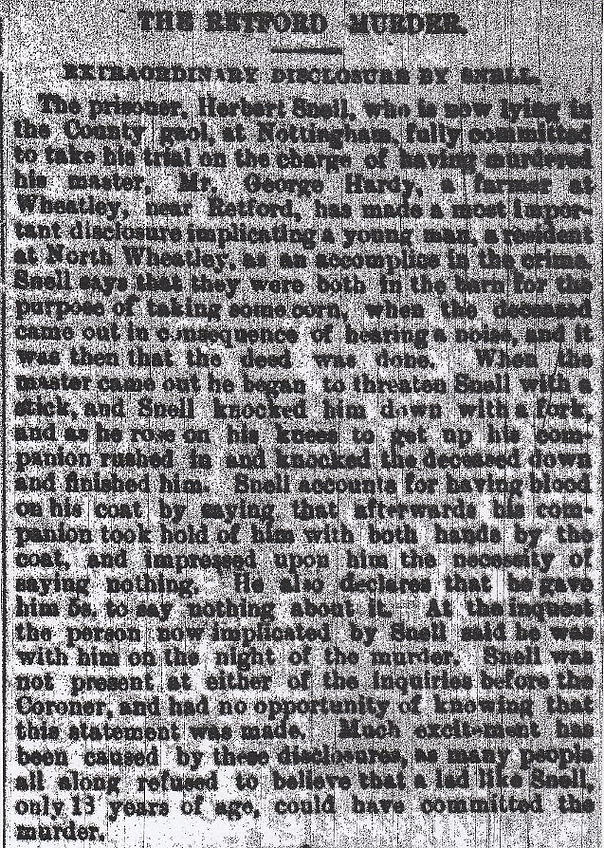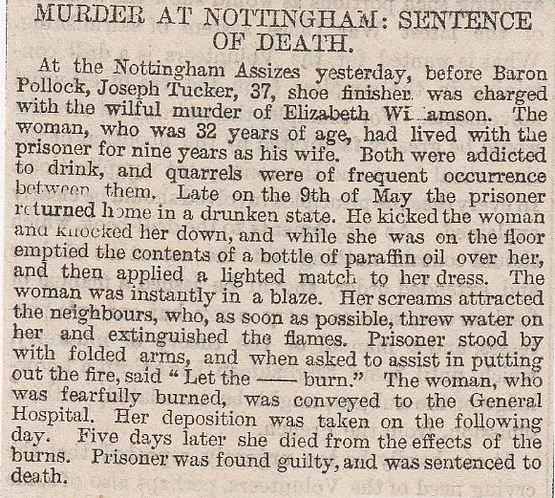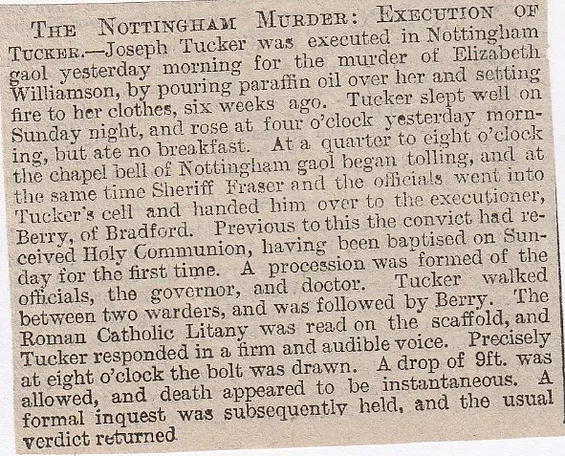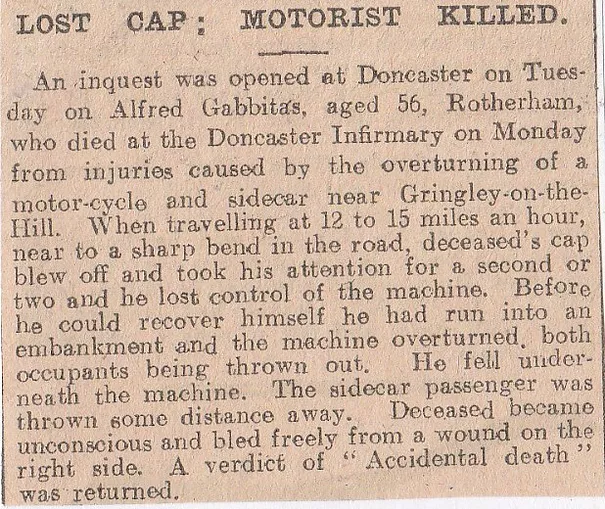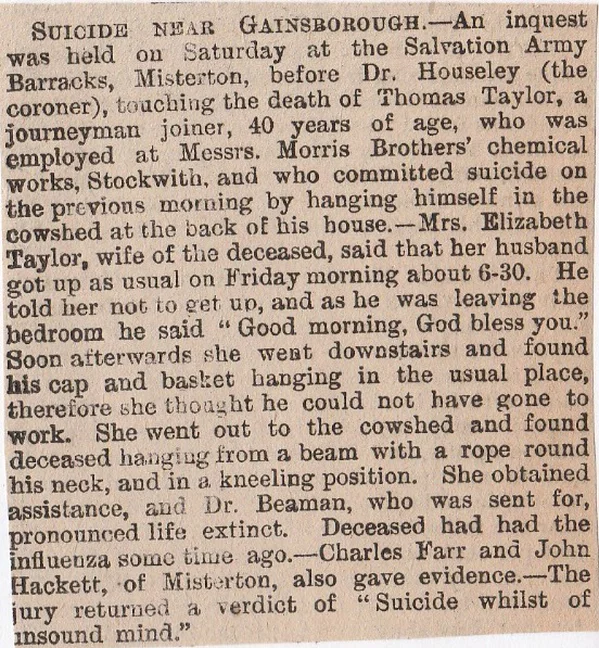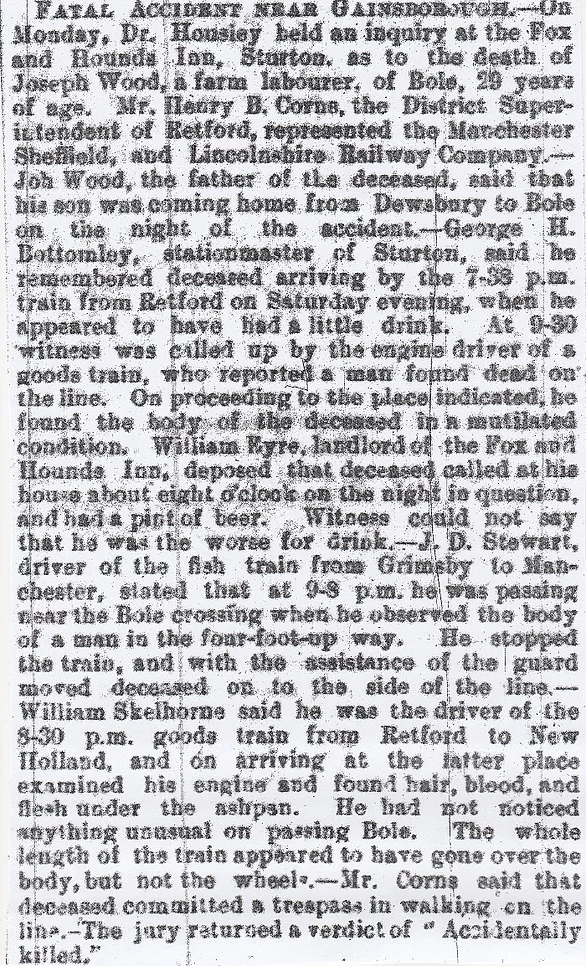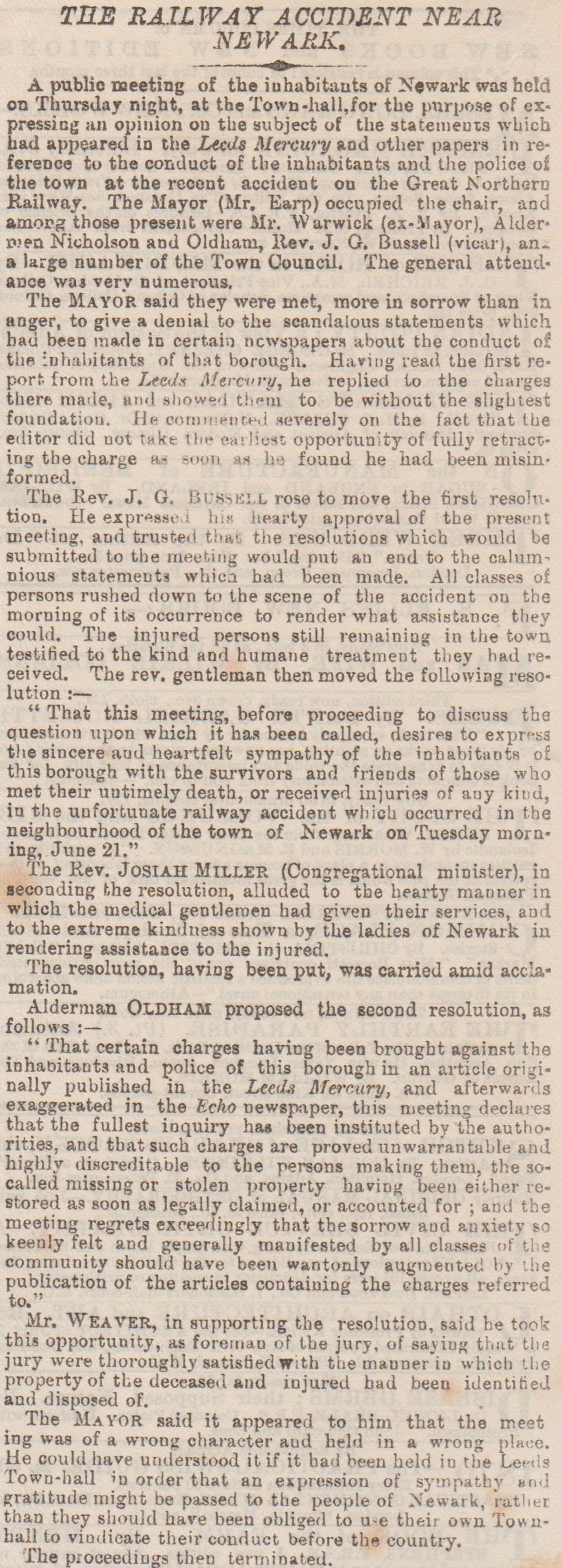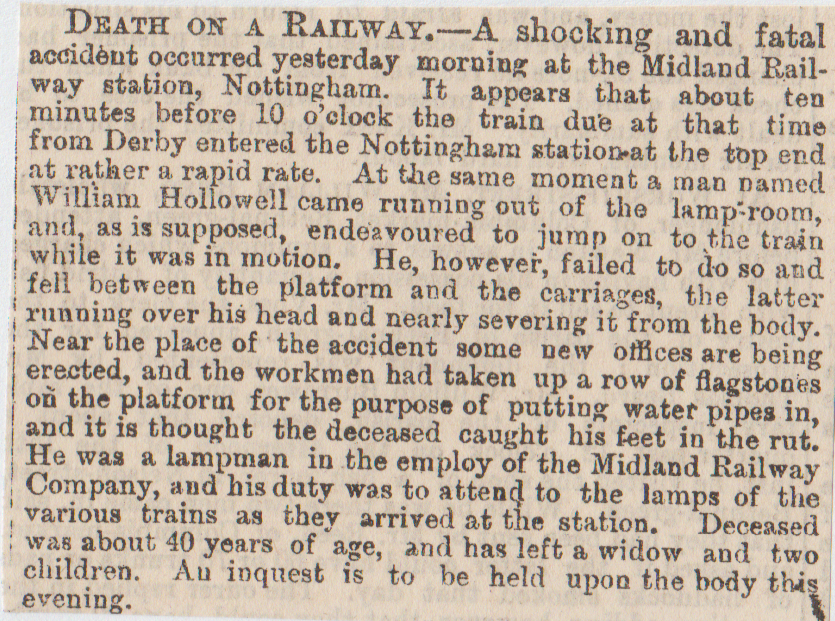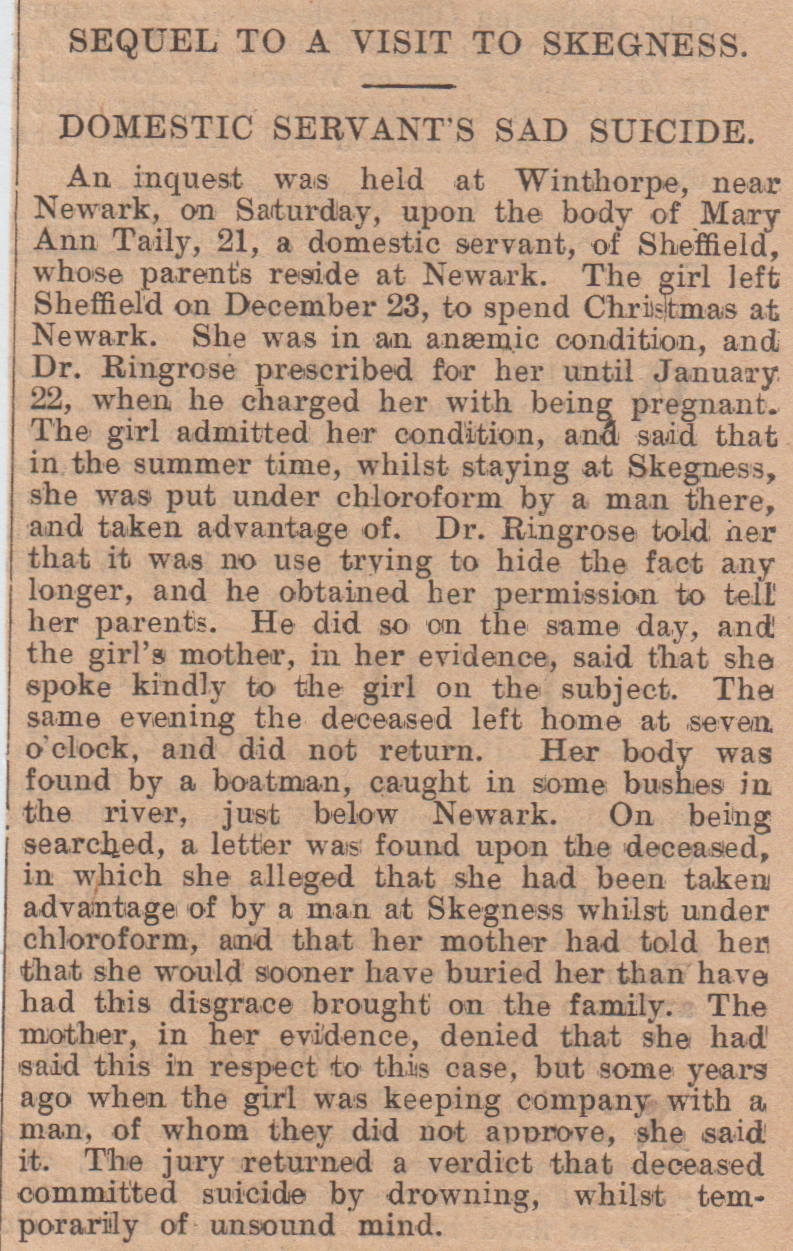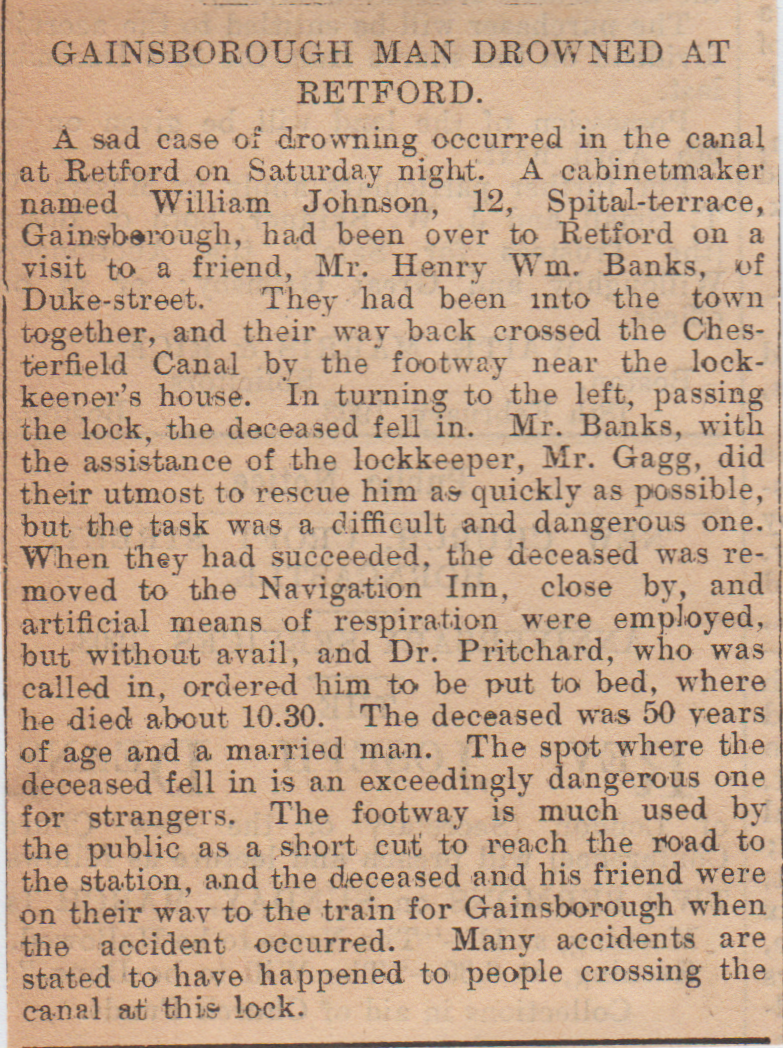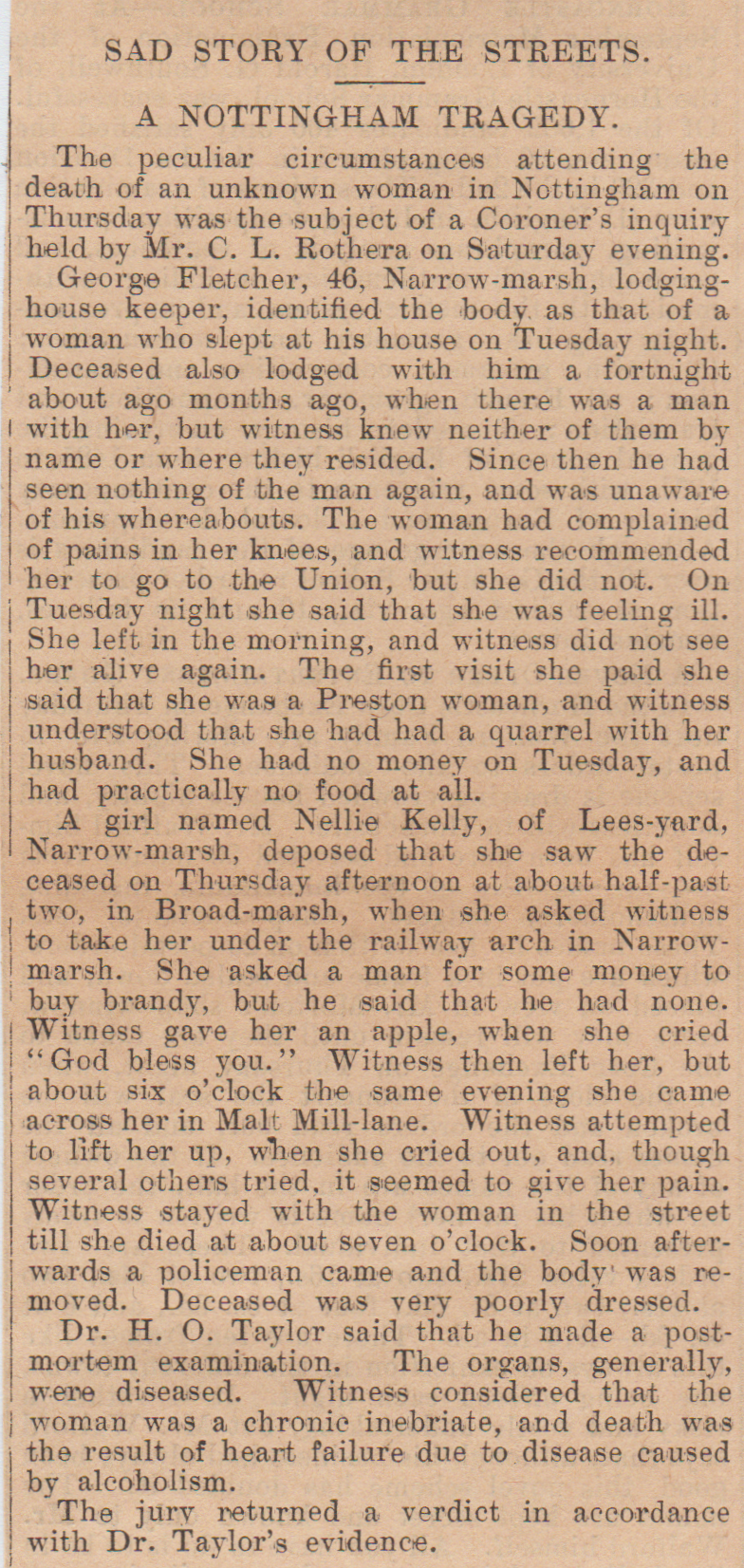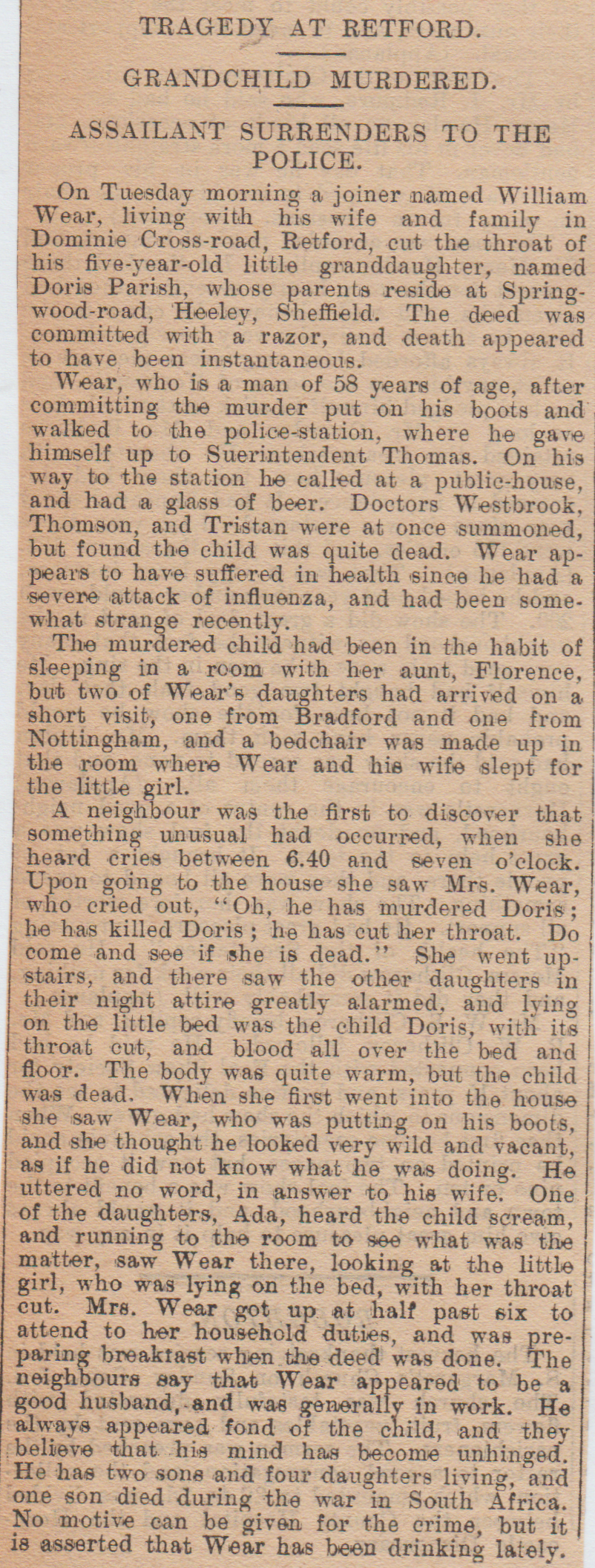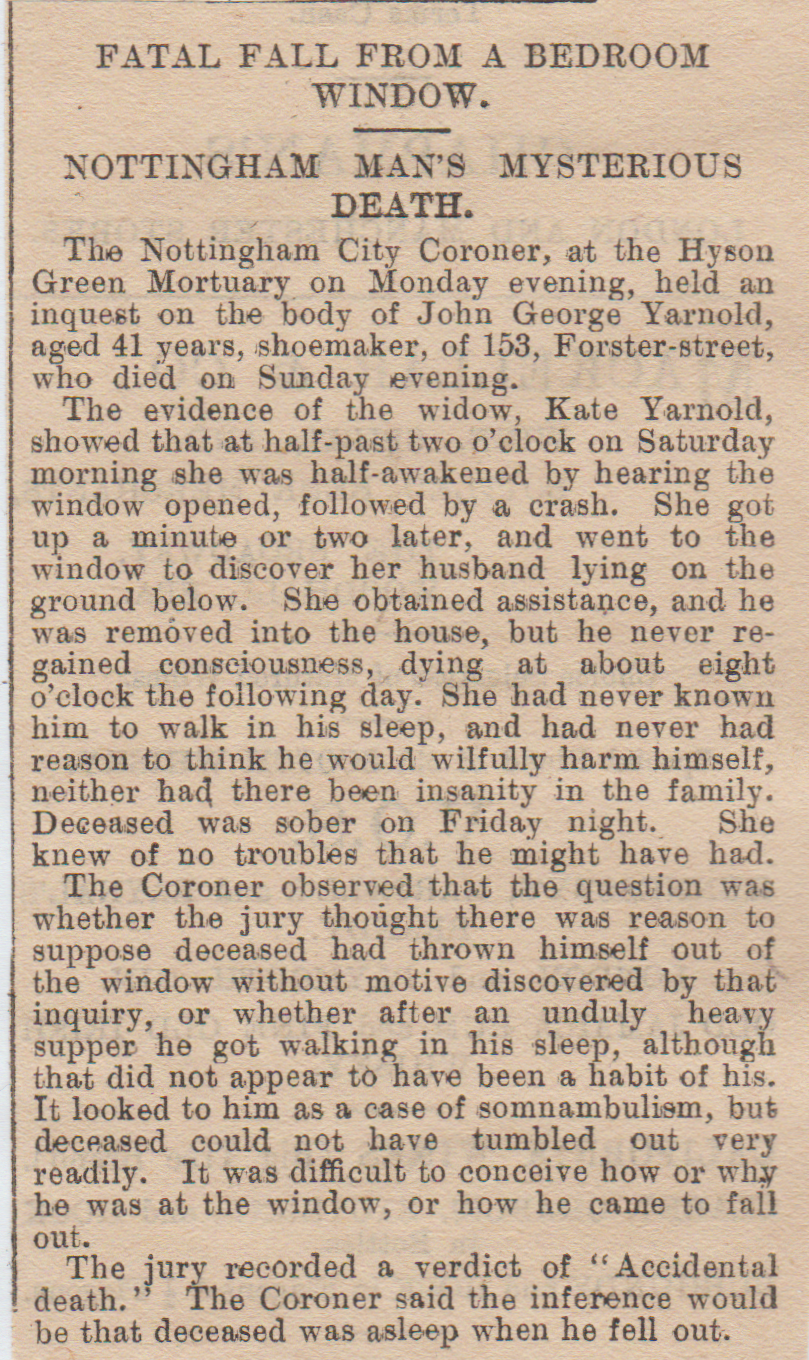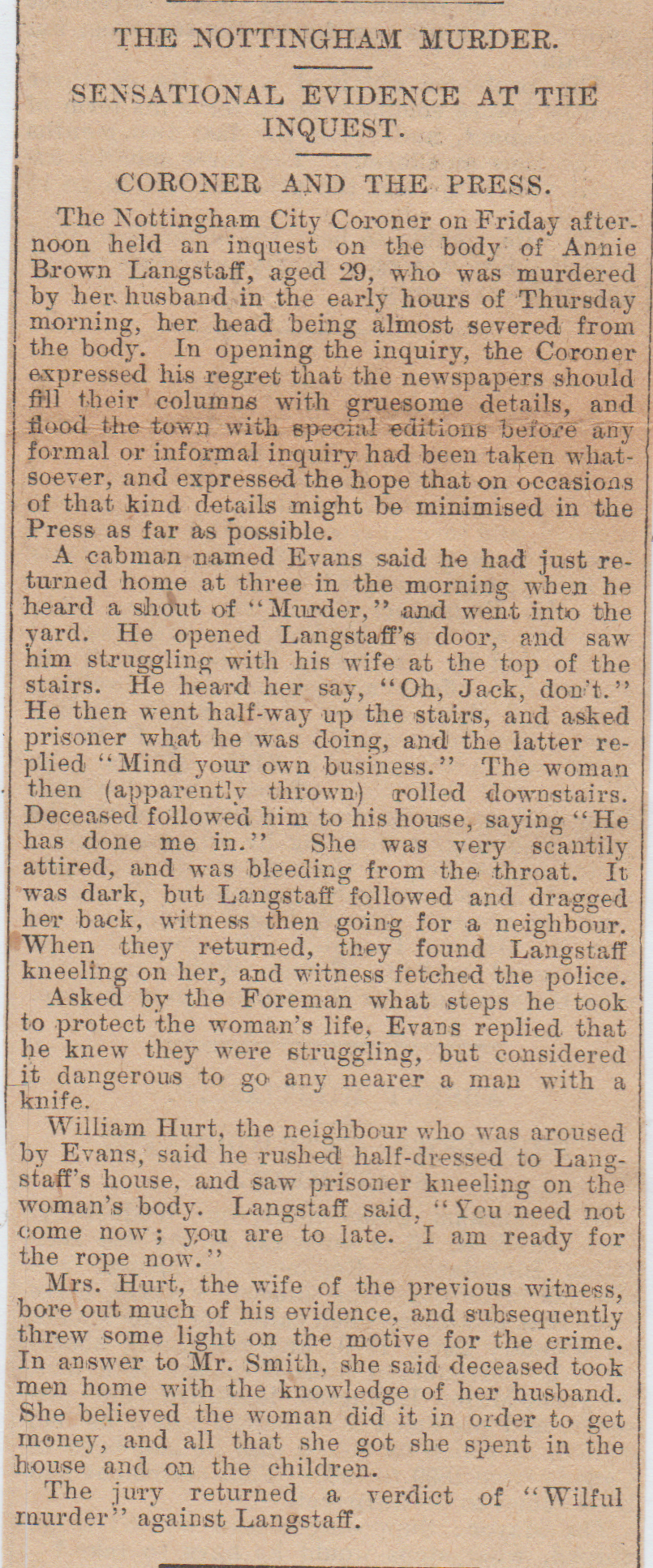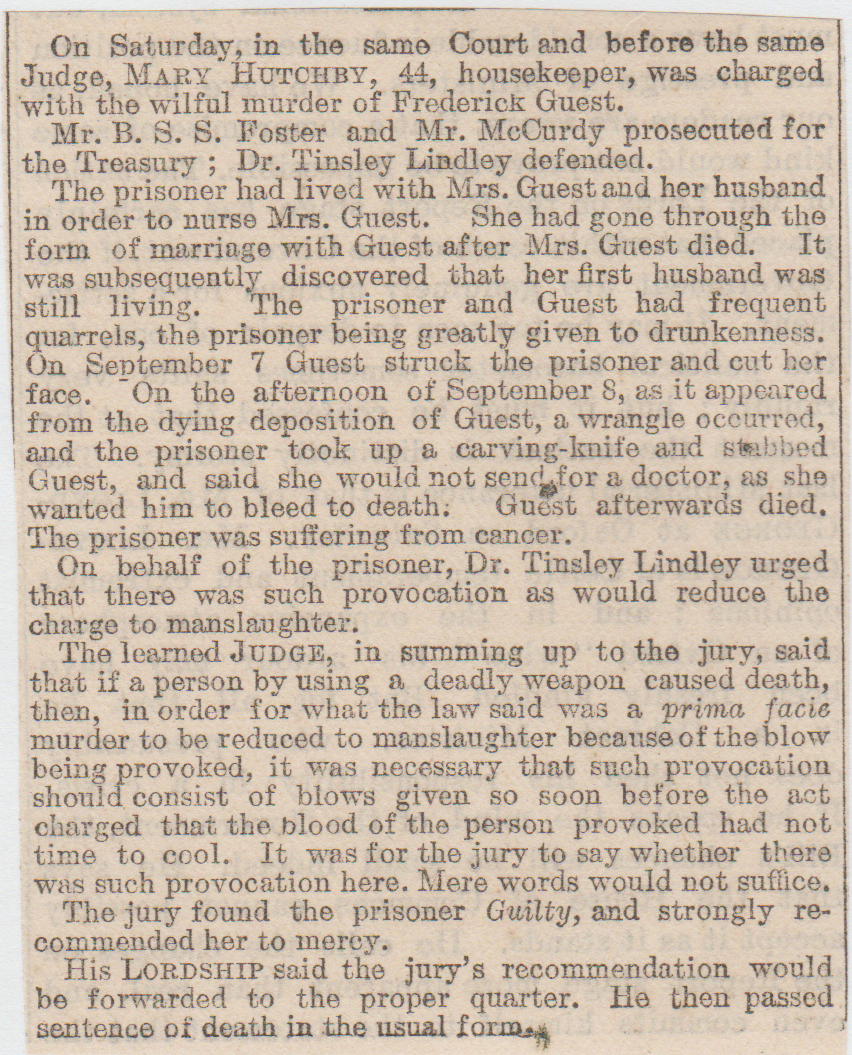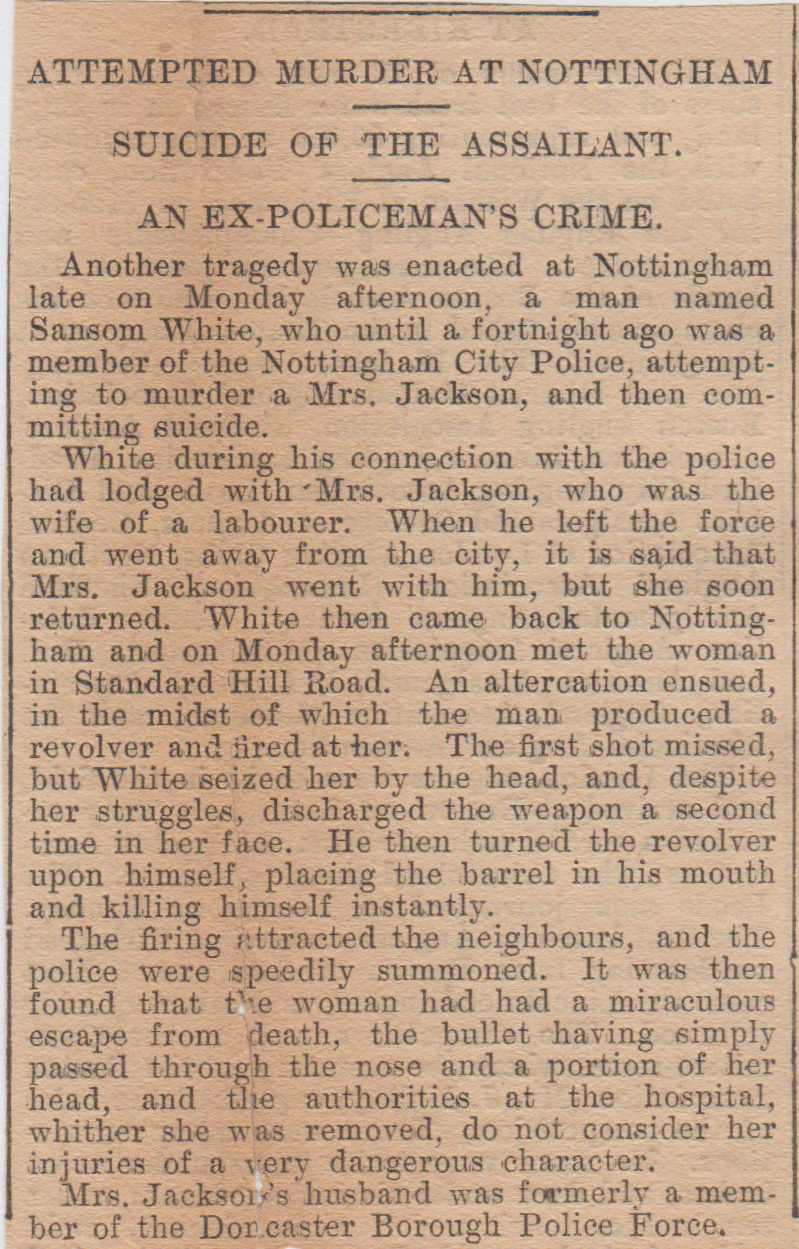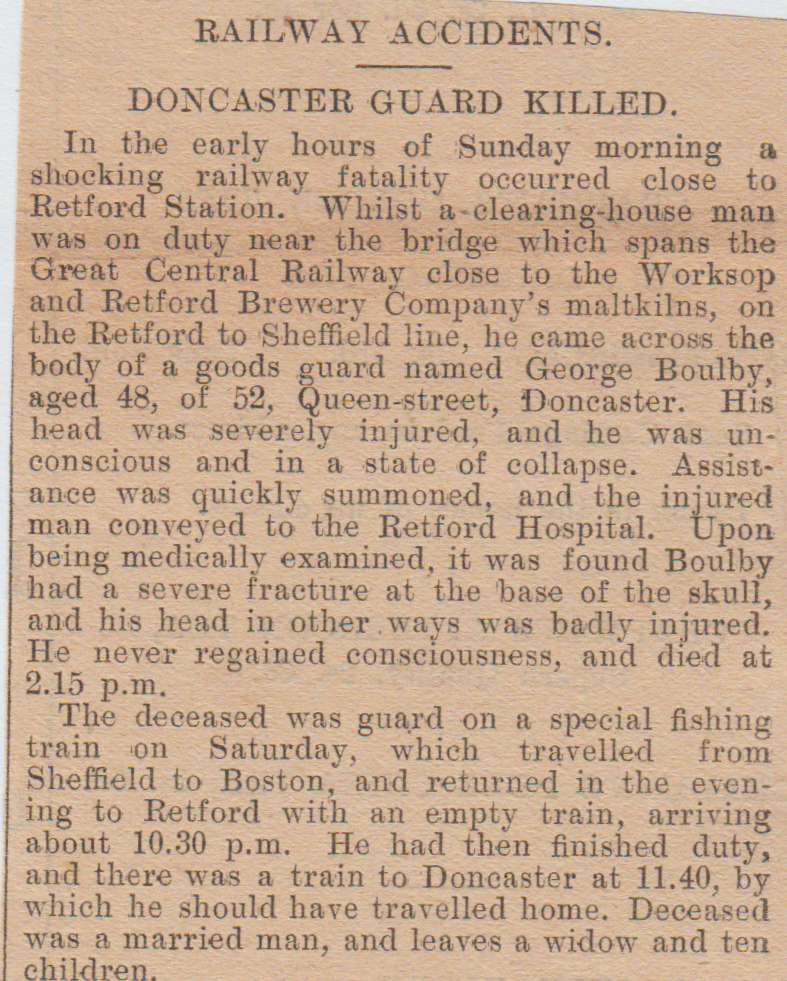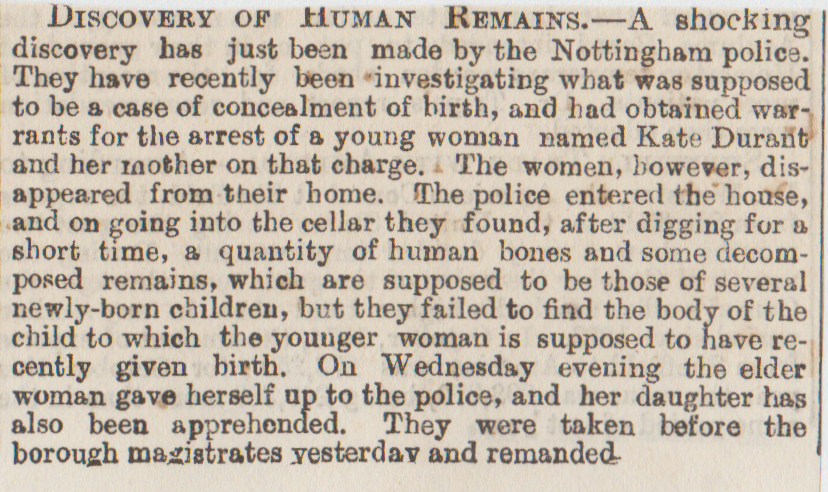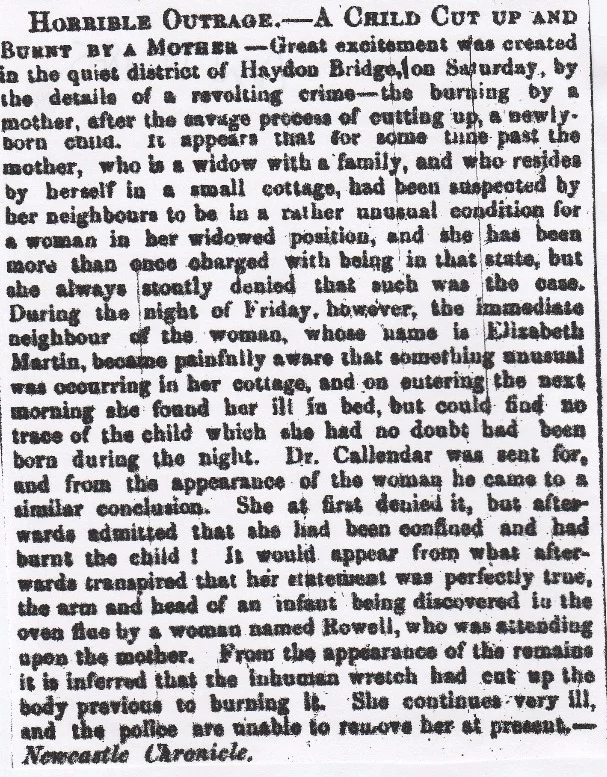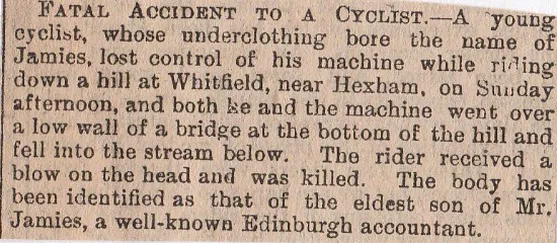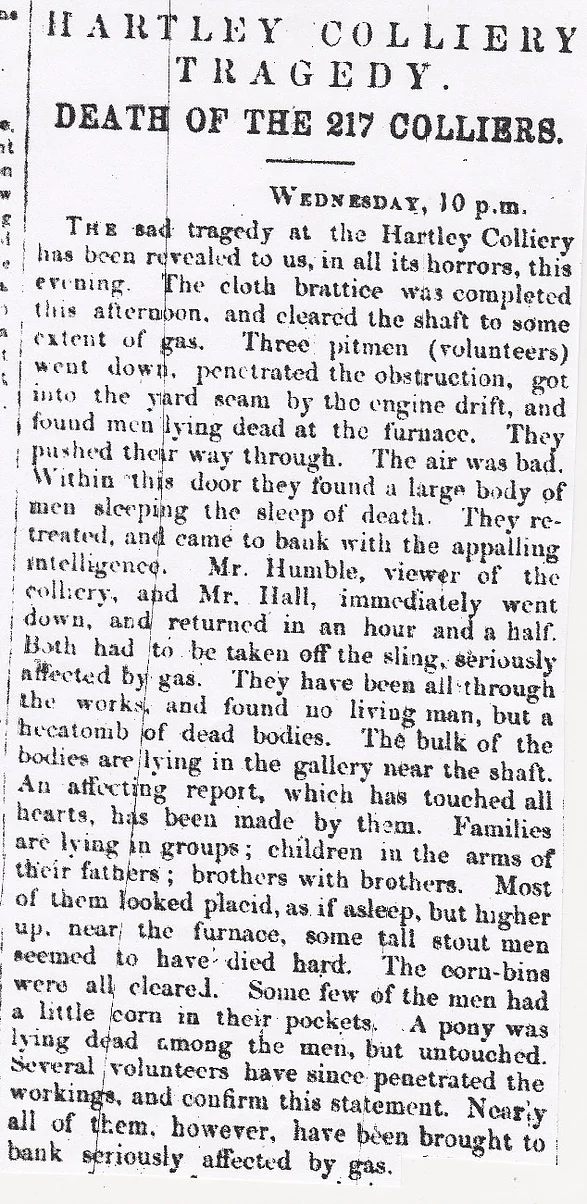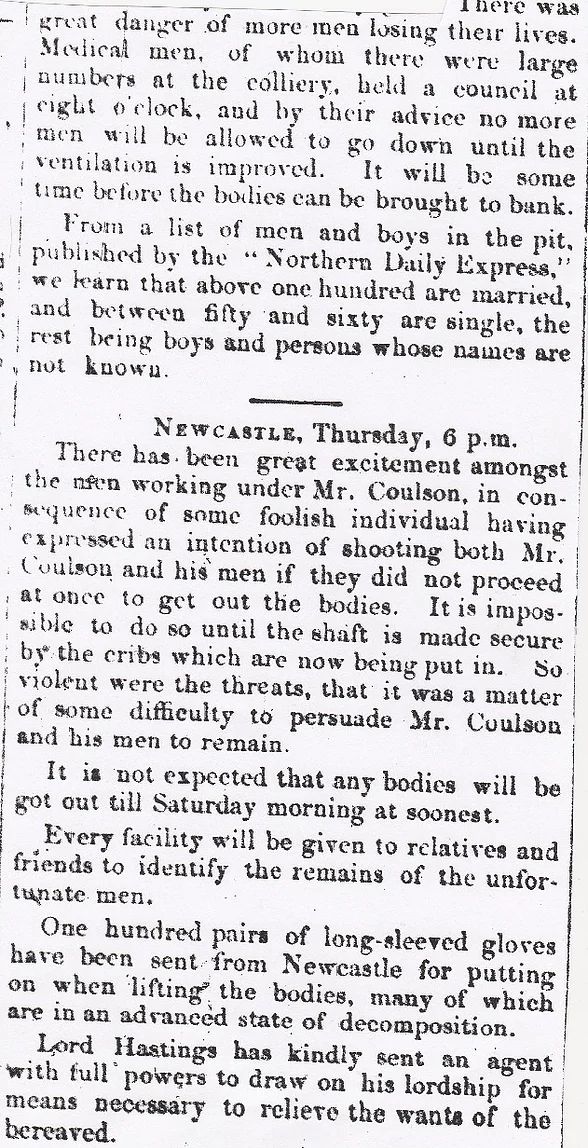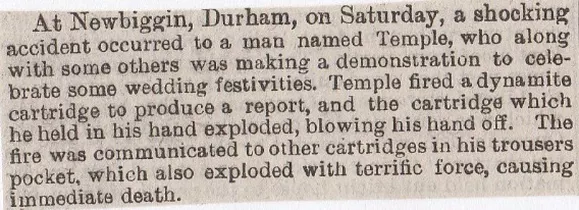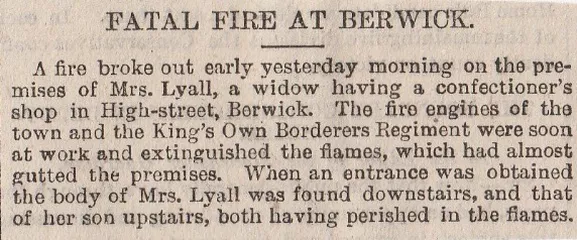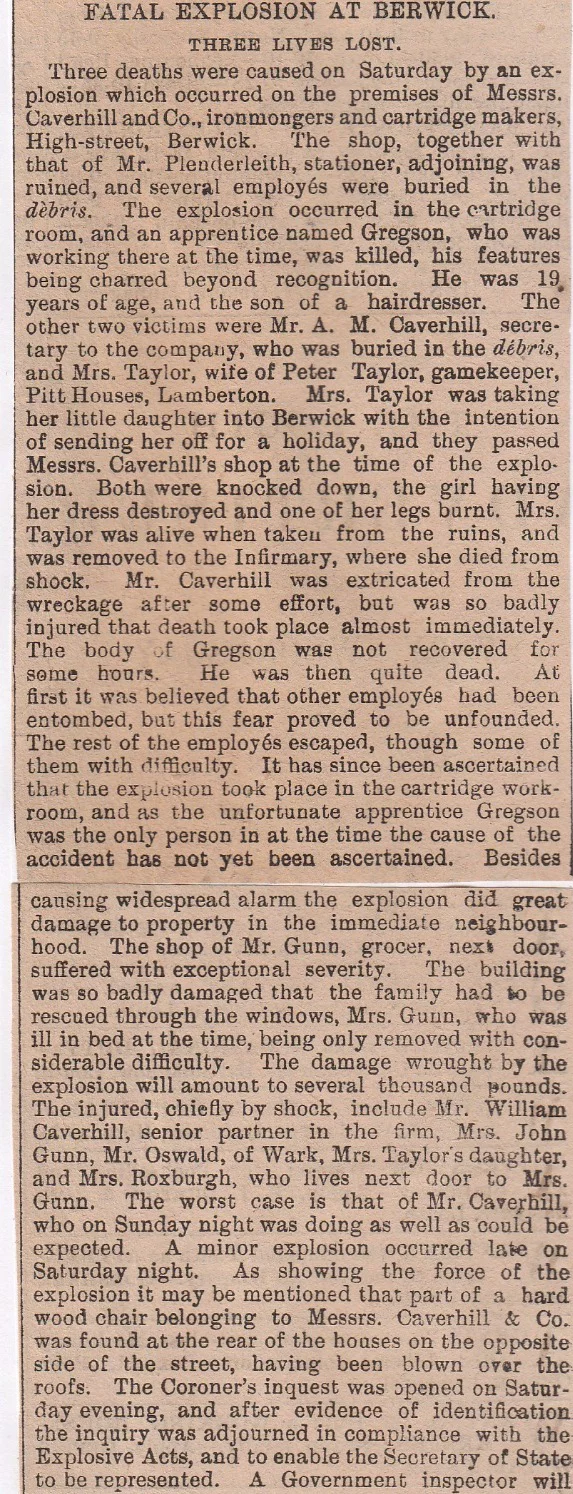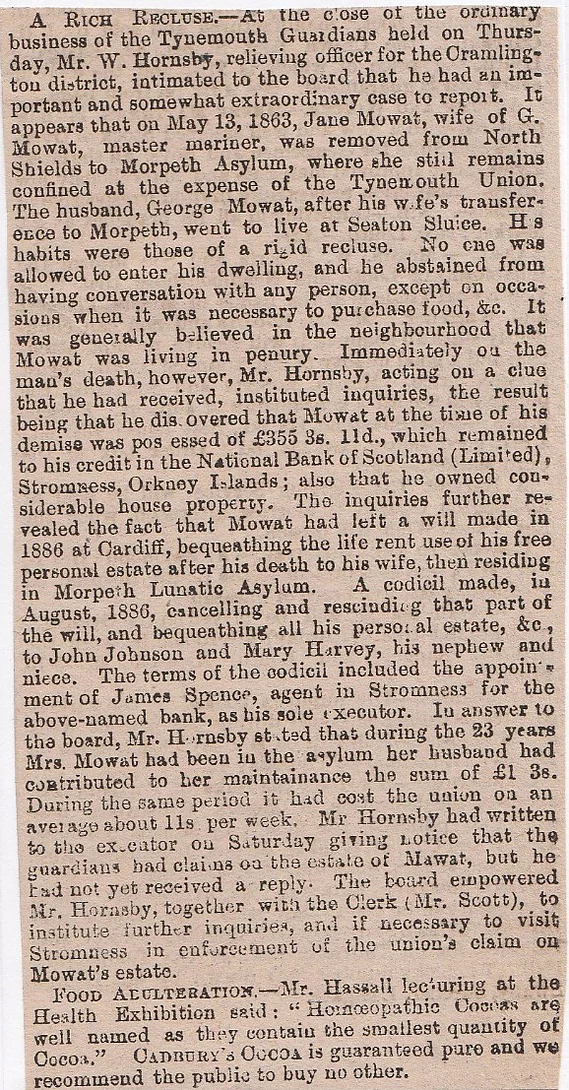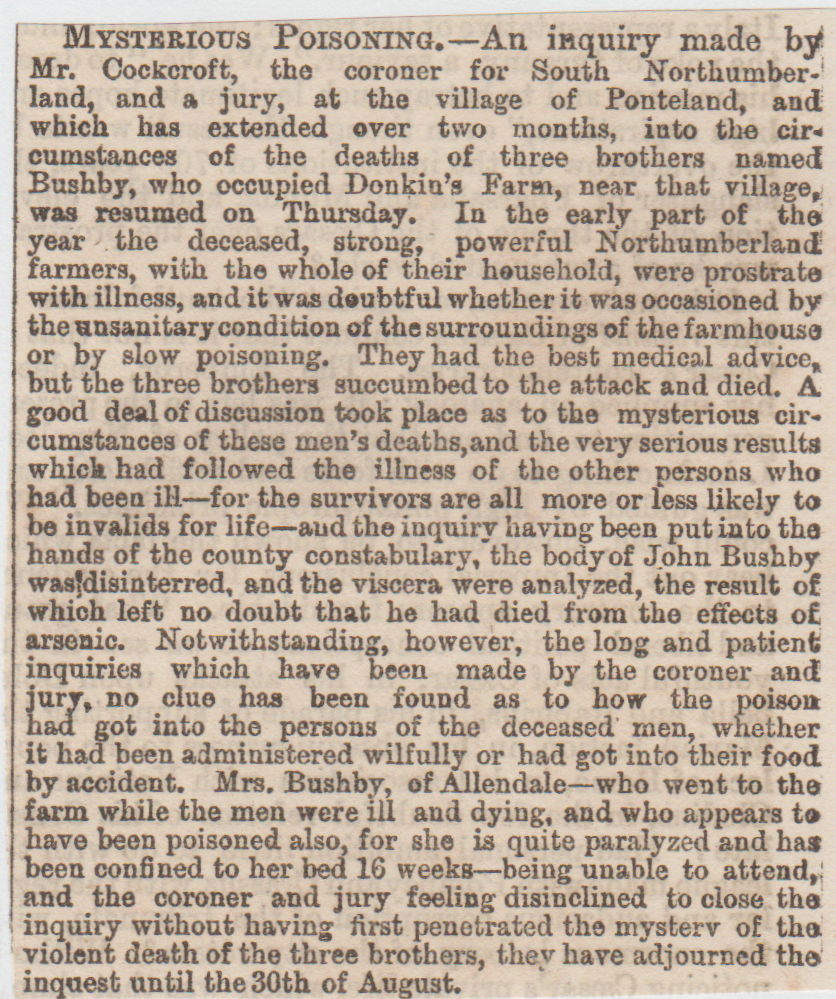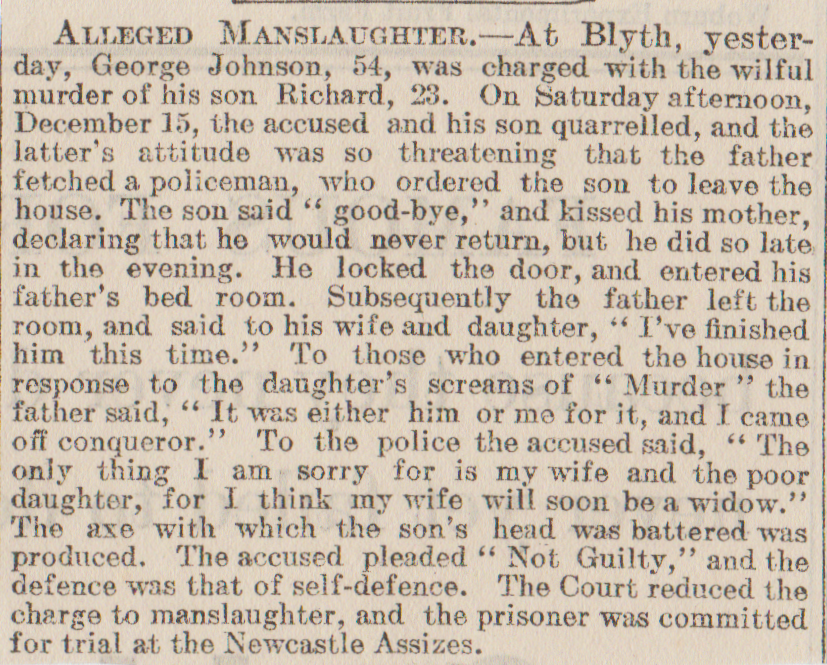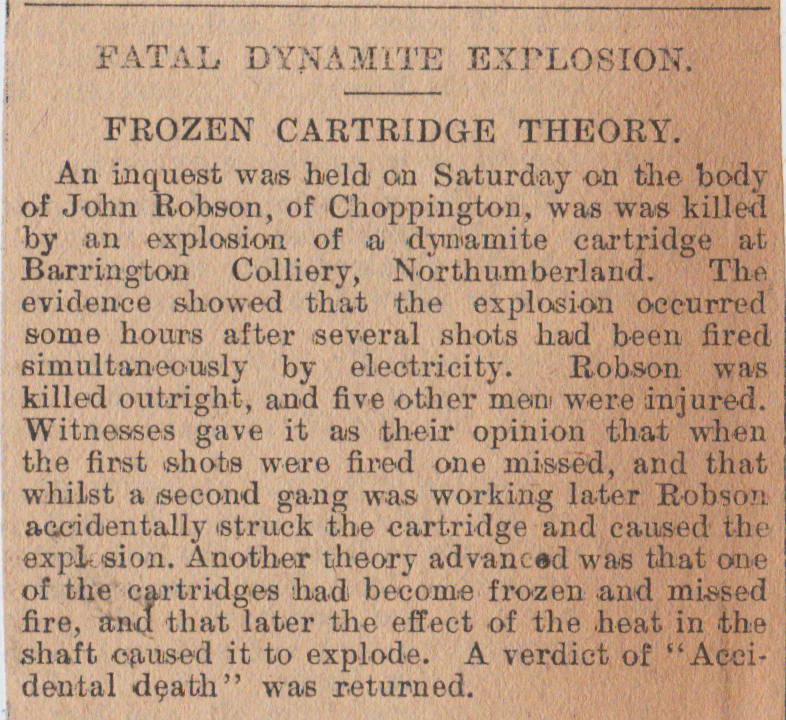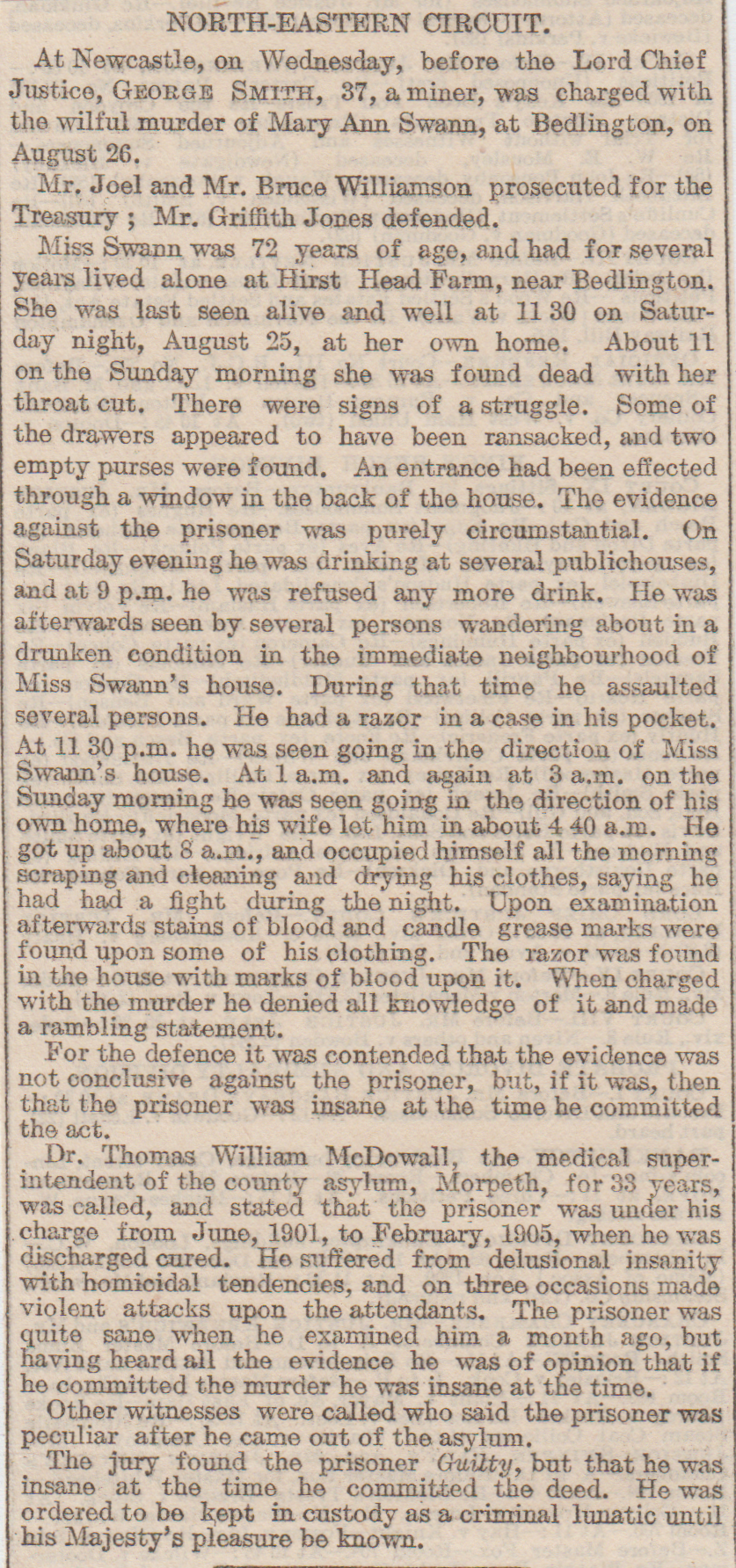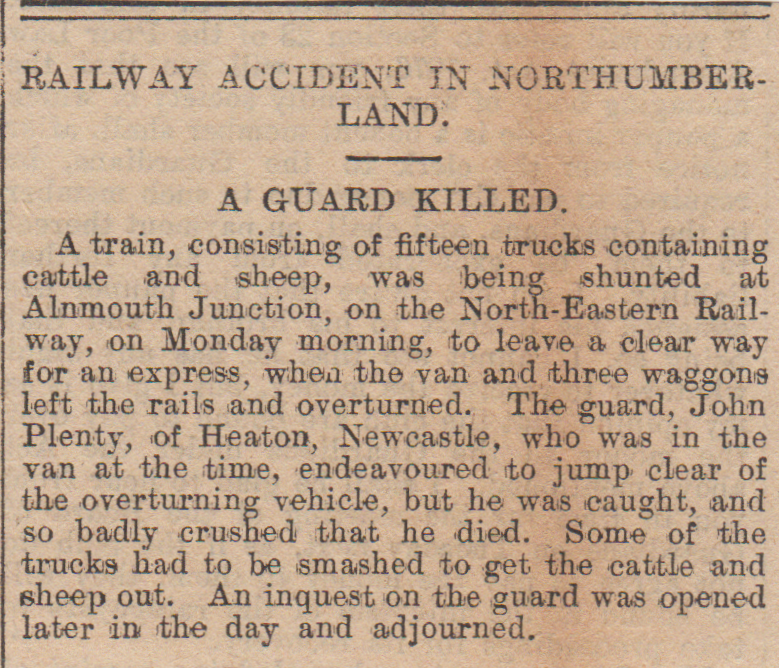1/ Loch Lomond Drowning, August 1880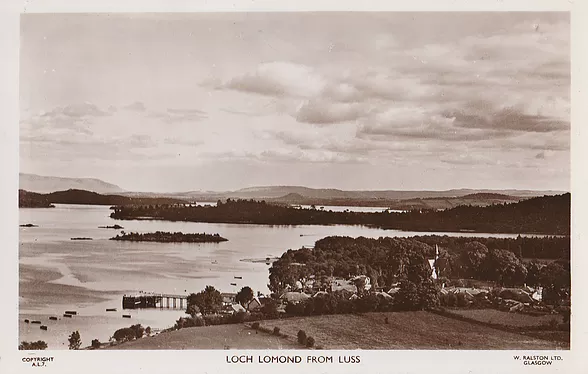
A London auctioneer named Samuel Hurren decided to take a trip on Loch Lomond. He slipped and fell overboard the “Prince of Wales” steamer and was drowned. A search party was sent to look for the body but they found nothing. (Was body ever found?)
2/ Port Appin, Argyll& Bute, (Drunken Quarrel Deaths) December 1879
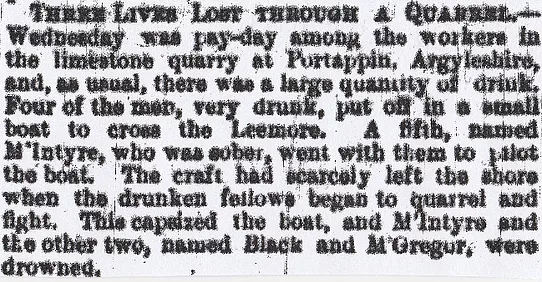
3/ Crieff, Perthshire, (Dynamite Suicide) March 1892
A quarry worker named Waddell didn’t go home after work at the quarry near Drummond Castle. A search party got together and eventually found his corpse in a wood close to the quarry he worked at in Muthill near Crieff. He had obtained a stick of dynamite, popped it in his mouth and lit it, causing him to never worry about buying a hat again.
4/ Greenock Drownings, June 1885
During a heavy gale on Saturday, a boat filled with water and sank off Greenock and two men named Onion and McDade were drowned. A heavy sea prevailed in the lower reach of the Clyde throughout the day and considerable damage was done along the coast. (Did they ever find them?)
5/ Edinburgh Castle Suicide, December 1864
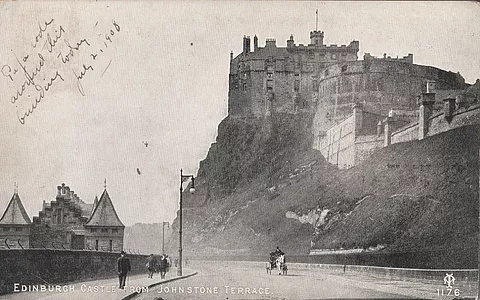
A private of the 74th Highlanders, Daniel Ross, was found with a bullet-wound in his head in one of the toilets at Edinburgh Castle. Ross took his rifle to the wash-house, placed the gun under his chin and fired. The bullet left the back of his head. No reason can be assigned for this rash act.
6/ Dean Bridge Suicide, Edinburgh, September 1884 (See No.8)
A clearly disturbed woman climbed on to the parapet of Dean Bridge, started flailing her arms about, then plummeted into the Water of Leith. In the last couple of months, this place has become a suicide hot-spot; this was the third in that time.
7/ Dalry Child Murder, Ayrshire, October 1888
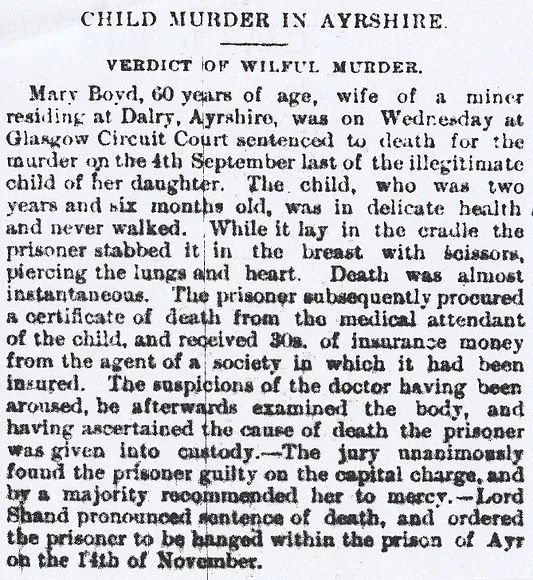
8/ Dean Bridge Suicides, Edinburgh, March 1888 (See No.6)
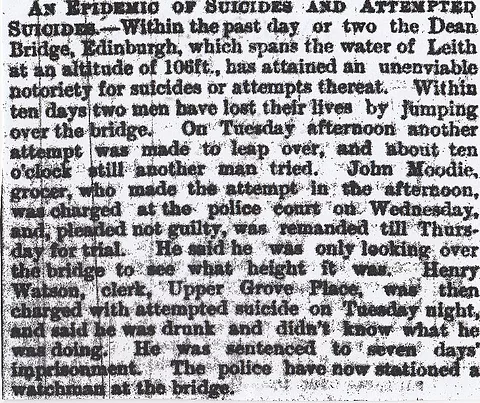
9/ Falkirk Triple Murder/Suicide, July 1887
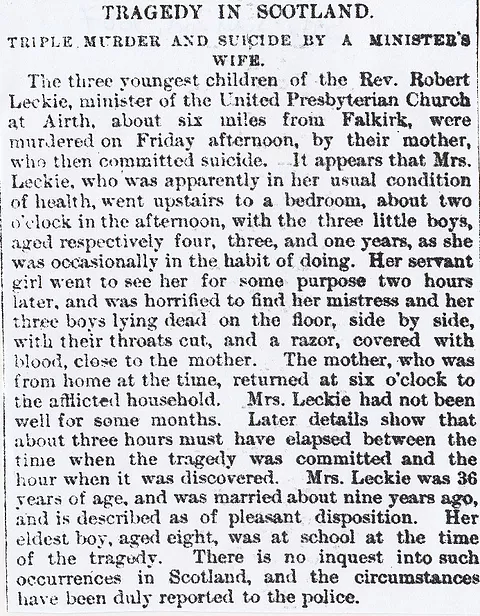

10/ Loch Lomond near Luss, (Bodies Found) April 1897
The bodies of a man and woman washed up on the shores of Loch Lomond in Scotland. They were aged between thirty and forty, smartly dressed and have been dead for approximately two weeks. They had some food and drink at the Luss Hotel around that time and that is near where they were washed up. There were no marks of violence on the man, but she had swelling on her face and head, but that could be due to hitting rocks or boats while she was dead. (Who were they?)
11/ Loch Lomond (Boat Sinks- Five Dead) December 1873
Sir James Colquhoun. Bart, of Luss and four men, were drowned on Loch Lomond. Sir James and his brother, William, had been hunting deer on an island. When they’d finished they set off in a small boat, pulled by his head-keeper, John Boyd and two other keepers named James Spottiswood and Angus McDonald (nice Scottish name!), along with the kennel boy Thomas Anderson. William Colquhoun was in a separate boat and kept looking back for his brother and the others, but getting near Rossdhu Mansion, he got anxious about their welfare. The weather was squally and windy and when they didn’t come back, a search was instigated and it wasn’t until the next day they found the boat, capsized two miles away. The death toll of four dead and two of the keepers leave widows and children.
12/ Loch Lomond (Four Drowned) May 1908
Four young men aged between twenty-one and twenty-three years and all hailing from Glasgow, London and Sheffield, had been camping on the island of Corrinch. They went on a sailing boat on Sunday morning to Balloch and then on the evening made the return journey, but got caught in bad weather, the boat capsized and all four were drowned. The boat was found near Botwich Castle and the names of the Clydebank engineers are; Thomas Clough (21) from Sheffield; Douglas Wylie (23), from Glasgow; Ronald Young (21), from London; and Robert Gilmour (21) of Partick. All but Gilmour were recovered.
13/ Pollokshields, Glasgow, (School Children Killed) March 1882

14/ Girdleness Lighthouse near Aberdeen (Eleven Dead) May 1897
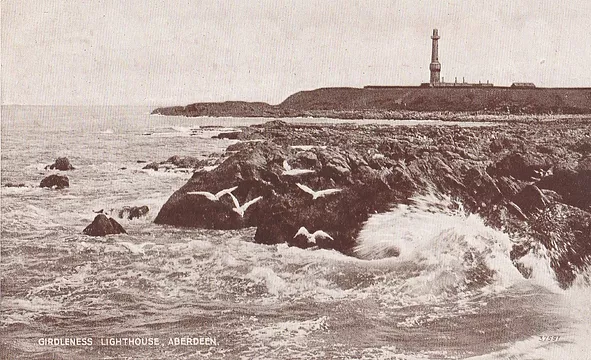
Eleven lives were lost off the coast near Girdleness Lighthouse near Aberdeen when two steamers collided and one sank. The steamer Collynie captained by Lawie collided with the Giringoe. The Collynie had eight crew plus the captain, his wife and two boys. About half a mile from the rocky coastline you see above, on a calm and clear day it has to be said, the Collynie was struck amidships and sank in a couple of minutes. Lawie called for the lifeboats to be lowered and began to tie the life-belts on his sons, then was fastening one around his wife when the ship keeled over and sank. The Giringoe managed to save Captain Lawie and hung around in the hope of saving some of the other crew, but to no avail. The Giringoe limped into Aberdeen Harbour at midnight with the wives and family of the crews waiting at the quayside.
The captain of a Norwegian steamer ” Faerder” said he saw two green lights appearing to be heading for a collision, then one green light vanished and shouting was heard coming from that area. It was only when he came into port that he was told about the two steamers crashing into each other.
15/ Findhorn/Elgin (Child Drowns Himself) July 1852
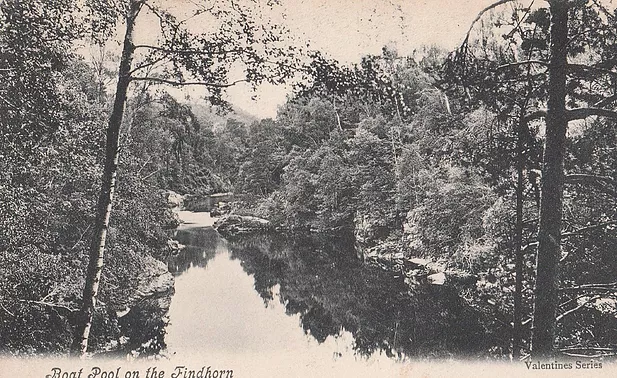
The nine-year-old son of Thomas McKenzie, lodge-keeper, was told off by his mother for not doing as he was told when he retorted that it would be the last time that she would smack him and that he was off to drown himself. He then dashed down to the Findhorn and threw himself into a pool similar to the one above. His mother was racing after him but couldn’t keep up with him and she got there just in time to see her little boy submerge.
16/ Dirleton Church Suicide, Haddington, June 1904
Forty-five-year-old John Milne, the beadle (church officer attending to the minister), was found hanging by a rope which was attached to a roof-beam at Dirleton Church at Haddington.
17/ Caledonian Station, Edinburgh, (Railway Fatality) February 1899
At the Caledonian station in Edinburgh, yesterday, one porter was killed and another seriously injured by the falling between a train and the platform.
18/ Kinning Street Fatal Fire, Glasgow, March 1899
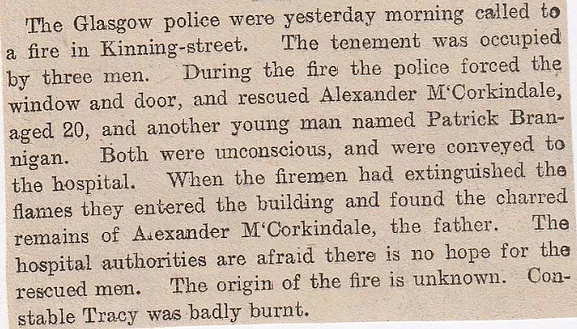
19/ Gourdon, Taylor family Wi November 1899
A fishing boat foundered on Scotland’s north-eastern coast about eight miles from Gourdon in Aberdeenshire. The crew of five all bore the name of Taylor. There was the father, who was saved and four sons, who all drowned.
20/ East Newport Railway Suicide, May 1894
The badly mangled body of Charles Clare aged fifty-three, was discovered on the train tracks at East Newport in Fife. Clare, who was a publican at Newport had lost his licence a short time ago and this is thought to be the reason for his suicide.
21/ Ibrox Stadium Stand Collapse, April 1902
On the 5th of April in 1902 at a football match between England and Scotland, the West Tribune Stand collapsed due to heavy rainfall that evening. Hundreds of spectators fell approximately forty feet to the ground below. This occurred less than an hour after the match and twenty-five were killed and over five hundred injured. The match, despite finishing, was replayed at Aston Villa’s ground in Birmingham on May the 3rd 1902.
22/ Rutherglen Bridge Mill, (Fatal Fire) January 30th, 1885

Rutherglen Bridge Mill, February 4th, 1885
The woman, Sarah Kennedy, who was injured at the fire in the Rutherglen Bridge Mills in Glasgow last week, died yesterday. This makes the fifth death. The bodies of the four persons who perished in the mill have not yet been recovered.
23/ Musselburgh Harbour Murder/Suicide, September 1896
The bodies of Mrs Gibson of No 3, Ramsay Lane in Portobello and her three-year-old granddaughter were found in the harbour at Musselburgh. The child had facial scarring as though she had been struck with something, probably the harbour wall while on her way over the edge. Mrs Gibson tossed the youngster into the water first, then jumped in after her.
24/ River Clyde (Human Body Parts) March 1889
The lower portion of a woman’s body which included the legs was found the Clyde between Renfrew and Glasgow. The poor condition of the corpse and it being badly decomposed lends it to the theory that it had been in the river for quite a period of time. Coincidentally, in virtually the same spot another woman’s body was discovered a few months ago.
25/ Edinburgh, (Wife Dies So He Kills Himself) February 1899
A strange discovery was made in Edinburgh when Mr Liddell, a beadle of a mission hall, was found hanging to a bracket in the lobby of his house, while upstairs his wife lay dead in bed. A minister who was due to preach in the hall made the grisly discovery and it is believed that Mrs Liddell died of natural causes on Saturday. Overcome with grief he hung himself on Sunday.
26/ Abernathy Murder, February 6th, 1899

Abernathy Murder, February 15th, 1899
The trial took place at Inverness yesterday of Allan MacCallum, a notorious poacher who was charged with shooting at and murdering Constable King. The prisoner had been fined a relatively small sum for poaching and endeavoured to avoid arrest. He took refuge in a barn and when the police came to apprehend him he fired, killing King. He was found guilty of culpable homicide and sentenced to fifteen years penal servitude.
27/ Shetland Islands (Noss Island) (Child’s Cliff Fall) June 1898
A terrible accident on the island of Noss in the Shetlands has left one little girl dead and another two mentally scarred for life. It seems that the three girls left Bressay to look for birds eggs (popular in Victorian times) at Noss when one of them overbalanced and fell over two hundred feet down the cliff face. The other two ran back home to get help. A search party was organised and they found the mangled corpse at the base of the cliff. The deceased was ten-year-old Maggie Anderson.
28/ Ardtoune Suicide, Island of Mull, March 1860
Archibald Campbell was due to be married to a young lady from the island of Tiree and they were making arrangements for the marriage when the banns at Bunessan church were stopped by two young lasses who claimed that he had promised to marry them some time ago. This was more than Archibald could manage, so he went to his barn on his property and hung himself.
29/ Greenock Football Riot, April 11th, 1899
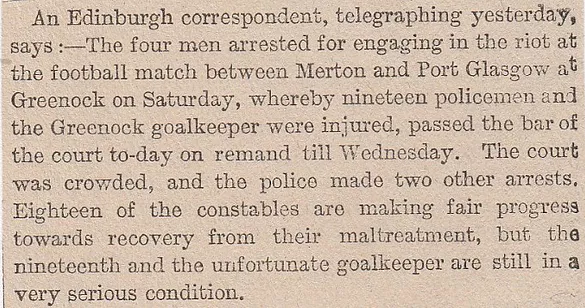
Greenock Football Riot, April 13th, 1899
The thirty prisoners in connection with the rioting at a football match at Greenock on Saturday were examined before the Sheriff yesterday. Bail was refused. Several other apprehensions were made last night and local feeling runs so high that it is suggested the trial should be transferred to Edinburgh.
30/ Flannan Islands Mystery, December 1900
The Flannan Islands are a group of seven islands about fifteen miles west of the Isle of Lewis in the Outer Hebrides. This is my favourite Scottish piece on this website. The fact it remains unsolved, along with its eerie location make it more of a Scooby-Doo mystery more than anything else, but also there is a sort of “Marie Celeste” quality about it; we sort of have a good idea of what happened but we can’t be sure for certain. The lighthouse was only a year old and had four men staffing it, three on duty and one on standby. The steamer went to the islands to drop off a relief keeper and for him to take the helm, but when they arrived they looked around for the others and found no one. James Ducat was the head-keeper and Thomas Marshall and Donald McArthur were his assistants. It is thought that they went out to help a boat in distress and got swept away by a huge wave. The living quarters were all neat and tidy, the was filled and ready to go and there was food on the table, just no men.
31/ West Port, Edinburgh, (Fatal Fire) January 1885

32/ Ben Wyvis, Ross-shire, (Decomposed Englishman) June 1886
On the mountain of Ben Wyvis, an Englishman thought it would be a great place to breathe his last, so he shot himself. When found he was badly decomposed and been there for an estimated three months. On his person were a silver watch, a flask, with “C.Lord, Manager C.R.R. Rooms” and a train ticket dated 18th of February. He had fair hair, was about five feet nine inches tall and slender. (Was he ever identified?)
33/ Colliston Murder/Suicide, near Arbroath November 1901
A tragic murder/suicide was committed in the village of Colliston near Arbroath, by forty-year-old crofter Joseph Watt, first on his wife when he shot her with a revolver, then shot himself. His slightly older wife was laid on the bed in her nightie drenched in blood when discovered and he was also dressed ready for bed but was still breathing, but unconscious. He lingered until the following morning and then expired. They had nine children together and it is believed to be a case of jealousy that sparked his act.
34/ Waterloo Place, Edinburgh, (Fatal Fall) November 1902
At the North British Railway Company’s offices in Waterloo Place in Edinburgh, the office keeper, James Dowie, was working on the top flat of the building when he opened the hoist gate. He obviously thought the hoist was there, but he fell down the shaft which was six storeys high and was instantly killed by breaking his neck.
35/ Ayr Murder-Suicide, May 25th, 1885

Ayr Murder-Suicide, May 28th, 1885
David Doig, who after murdering his sweetheart on Thursday evening last, dangerously wounded himself, died yesterday in the hospital at Ayr. From the first but faint hopes had been entertained of the wretched man’s recovery.
36/ Bonnyrigg, Midlothian, (Double Railway Fatalities) May 1901
This little village in Midlothian was the scene of an atrocious accident. The Bonnyrigg locals used to take a shortcut over the railway tracks, in particular, where there is a bend. It was one Saturday when John Dunnett had crossed the train tracks whilst carrying his child, when he heard a scream. As the Edinburgh express was tootling along the line, Mrs Murphy had tripped over and Dunnett being the gentleman, he tried to rescue her but the train clattered into them both. They were killed instantly and Dunnett’s child had her hand on the line at the time it ran her father over and she lost her fingers.
37/ Islay/Glasgow Murder Trial, January 1890
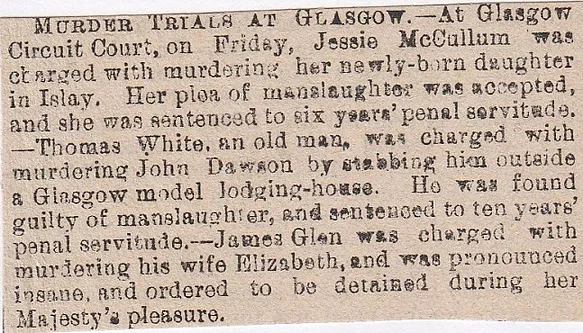
38/ Pollokshaws, Glasgow, (Quarry Death) September 1885
A fatal accident occurred at a quarry at Pollokshaws, Glasgow on Tuesday. A large mass of rock fell, burying Timothy Croman and Thomas Owen. Croman was killed and Owen is not expected to live.
39/ Aberdeen, (Road Accident) June 1899
George Polson, a well-known teacher in Aberdeen was killed while cycling some miles from that city on Saturday. He collided with another rider in front of him and fell off his machine, under the wheels of a four-in-hand coach. Death was instantaneous.
40/ Renfrew Gaol Suicide, November 1841
The person who was in charge of Renfrew Gaol killed himself last Saturday morning, by hanging himself from the rope with which the bell is rung in that building. He had been on a drinking binge for some days and this is thought to be the motive for his suicide.
41/ Broxburn/Brumshoreland (Mysterious Death) March 1890
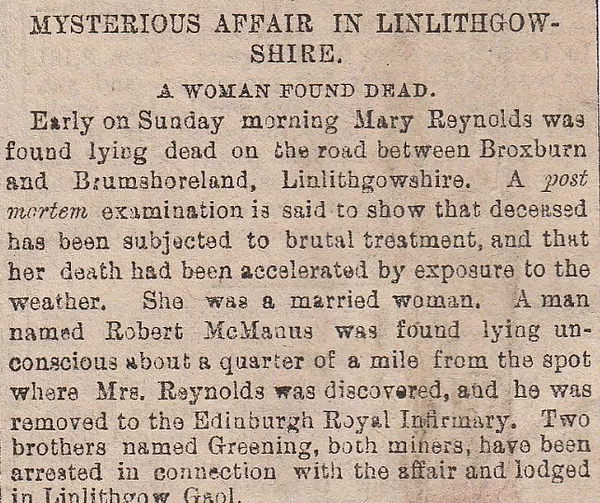
42/ Glasgow/Liverpool Mail Coach, August 1835
Three passengers on the outside of the Glasgow to Liverpool Mail Coach were struck by lightning and killed instantly. The coach was totally destroyed, although it doesn’t state where exactly this Act of God happened.
43/ Elgin, July 1885
Mr D.McLeod Smith, the sheriff-substitute of Nairn and Moray Shires, committed suicide on Saturday morning at Elgin.
44/ Greenock Drownings June 1885
During a gale on Saturday, a boat filled and sank off Greenock and two men named Onion and McDade were drowned.
45/ Dalmuir, (Football Death) October 1885
Thomas Anderson, a lad who was injured in a football match at Dalmuir near Glasgow on Saturday, died yesterday from the effects of the accident.
46/ Ayr Bay (Father/Son Drown) June 1888

47/ Galashiels (Cliff Death) July 1885
A man named Thomas Vallance belonging to Edinburgh, fell over the cliff at Galashiels yesterday in endeavouring to gather some heather and was found dead at the foot of the rocks with his skull fractured.
48/ Girvan, February 1888
A week has elapsed since Mr George Smith, a seedsman of Ayr, disappeared from Girvan. The harbour has been dragged at Ayr and inquiries have been made but no clue has been obtained regarding him. It is generally supposed that he was drowned, but there is no conclusive evidence.
49/ West End Park, Coatbridge, (Explosion Deaths)February 1899
At a late hour on Tuesday night a bonfire was kindled in West end Park in Coatbridge in honour of the return of Dr Douglas as a member for North-West Lanark, when two barrels of combustible material exploded, killing a boy named Clark and severely injuring two other lads who were stood nearby.
50/ Lawmarket, Edinburgh, (Scaffolding Deaths) February 1899
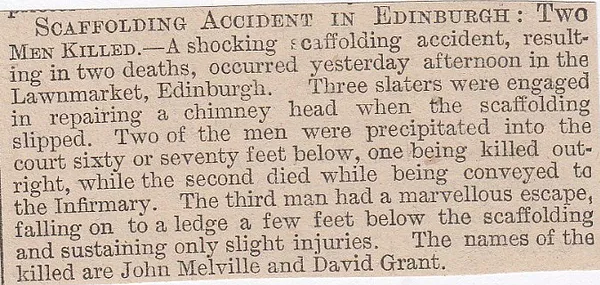
51/ Townsend Chimney Death, Glasgow, August 1907
A well-known Scottish steeplejack, John Goldie, was killed in a dreadful accident while he was working on the Townsend chimney in Glasgow. He was at the pinnacle of the structure when several people spotted him falling from the edge. The shaft is nearly five hundred feet high and not surprisingly, he was smashed to atoms at the bottom and died immediately. The Townsend chimney is believed to be the tallest in the world.
52/ Donmouth Suicide, Aberdeen, April 1886
A dead body of a teenage girl was discovered on the beach at Donmouth, Aberdeen. She has been identified as Julia Thomson aged sixteen, who lived with her parents at Chapel Court off Justice Street. Thomson was employed as a knitter in a local mill and when she left work early one morning after doing a late shift, instead of going home she sauntered down the beach and deliberately drowned herself.
53/ River Clyde near Dumbarton (Fatal Collision) August 1889

54/ Dornoch, Sutherland, (Accidental Shooting) August 1885
On Wednesday night, James Fraser, a herd boy aged fifteen, was playing on a farm near Dornoch, Sutherlandshire, with another boy who had a loaded gun in his possession. Whilst the boys were holding each other the gun went off and the contents lodged in the abdomen of Fraser, who died about six hours after the accident.
55/ Glasgow (Football with Skull) February 1904
Some children found a blackened skull in Glasgow and then continued to have a game of footy with it. What had happened was, that while some workmen had been digging a new sewer they had come across some coffins which were nearly rotted through. While waiting for them to be taken away, the kids in the area picked a few up and began to play about with them. The vicinity where they were excavating was formerly a graveyard.
56/ Woodside near Aberdeen (Kids Drown) June 1889
Two children, a boy of eight and a girl of eleven, were drowned in a quarry pit at Woodside near Aberdeen on Monday afternoon.
57/ Scotscraig, (Scottish Hero) March 1890
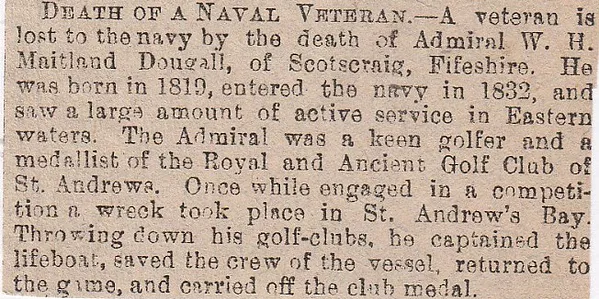
58/ Glasgow Murder? January 1885
Neill McAllister, a labourer, was killed at Glasgow yesterday morning during a quarrel with his nephew, who has disappeared.
59/ Newport near Dundee (Axe Murder) March 1902
A shocking tragedy occurred at Newport near Dundee, when a farm labourer named John Ritchie, an elderly seventy-six-years of age and who was residing with his wife in a roadside cottage about three miles from Newport, attacked his wife who also was in her seventies, with an axe. A pedestrian walking past saw him ferociously going about his wife with the axe and got help from the blacksmith nearby. On entering the cottage, he was sat down with an axe in hand, as she lay on the floor with multiple head injuries.
60/ Macduff Trapeze Death, July 1885
On Saturday night a trapeze in Shore Street in Macduff, broke while two boys were swinging on it. One lad named Russell aged sixteen was thrown into violent contact with a bar, whereby he sustained such severe injuries that he died last evening.
61/ Motherwell Police Station, (Attacked by Circus Performers) June 1888
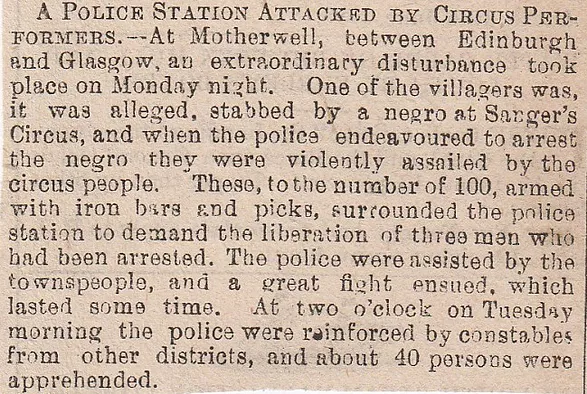
62/ St Rollox, Glasgow, (Crushed to Death) November 1896
James Crawford Shingler of Glasgow was killed in Messrs Braby’s galvanizing works, St Rollox, Glasgow. He was engaged with other workmen at a crane raising a heavy beam, when some part of the machinery gave way and the beam fell upon him inflicting terrible injuries. Death ensued almost immediately.
63/ River Orr near Thornton, Fife, July 1889
Mr James Cant, chemical manufacturer of Thornton, Fife, lost his life whilst bathing on Tuesday afternoon in the River Orr, close by his residence. He had been bathing with his son and suddenly sank before assistance could be procured.
64/ Glasgow Double Filicide/Suicide, July 1909
A tragic discovery was made in Glasgow, when Mary Ann Adams, a widow, having killed her two daughters, Jane aged nine and Janet aged four, then committed suicide. She lived in a small flat in a run-down area and since her husband died a few months ago, she has been really hard up and destitute. The door was broken down and the mother lay on the floor, while the girls were upstairs in bed with their throats slit from ear to ear.
65/ Renfrew Fratricide, October 1889
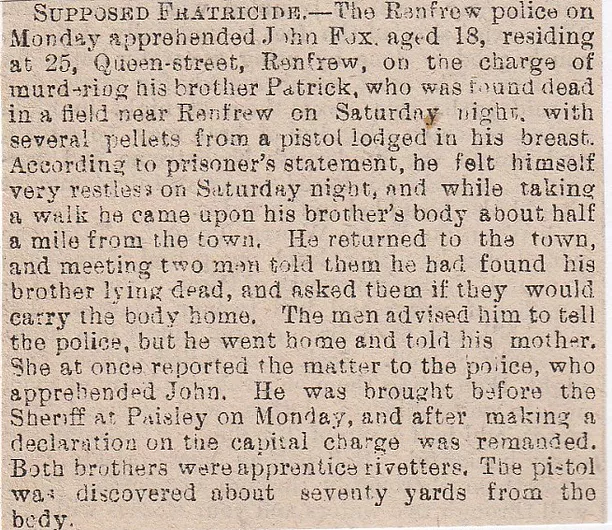
66/ Overton Road Murder, Kirkcaldy, November 1906
At Overton Road, Kirkcaldy on Saturday night, a labourer and his wife were heard quarrelling in their house. On the police entering, they found the dead body of the woman lying in the passage with wounds to the head and body. Her husband was arrested.
67/ Glasgow Harbour Fatality, August 1885
A small boat in which three men were rowing to the steamship “Argentine” in Glasgow Harbour on Friday night, was run down by the steamer “Penguin”. One of the men was drowned.
68/ Glasgow Murder, July 1889
A shocking affair occurred at 567, Garscube Road in Glasgow on Friday morning. Mrs Agnew was found lying dead in a pool of blood in the house of John Nicol. Previous to discovery shouts had been heard in the house, “I’ll kill you”. Nicol and his wife have been apprehended. Mrs Agnew’s skull was fractured. Deceased had no fixed residence but formerly lived in Nicol’s house.
69/ Ayr, (Poisoned Cake by Post) November 1906
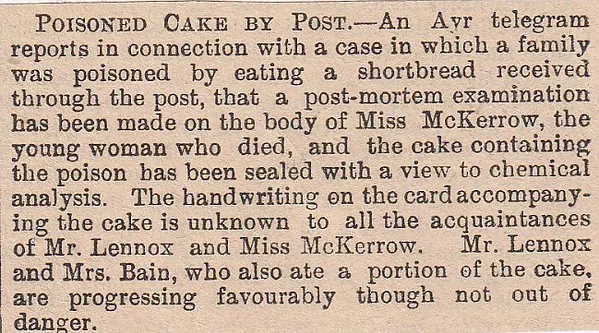
70/ Troon Harbour (Anchor Kills One) April 1885
Two pilots were rowing around the breakwater at Troon yesterday morning, when a large German steamer, the Armin, which was bearing down on the wall, having allowed itself too little room in entering the harbour, dropped her anchor with the view of preventing a collision. The anchor fell on the pilot-boat smashing it to pieces and killing one of the occupants.
71/ Stornoway (Outer Hebrides) (Invalid Burns in Tar) April 1885
On Saturday afternoon, Mr Sutherland a cooper from Stornoway, was melting tar in an iron vessel in his house when the tar overflowed and set fire to his home. Hastily grasping the vessel Mr Sutherland ran with it to the outside of the house, dreadfully burning his hands in the process. On his return, he found that his little son who was an invalid, had been burned to death.
72/ Glasgow, March 1905 (Throwing Vitriol)
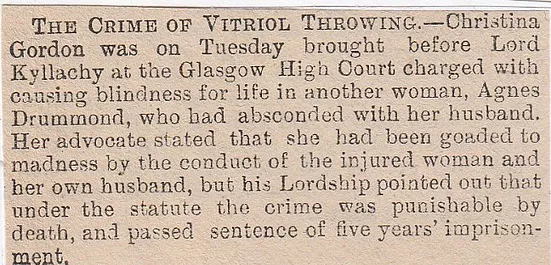
73/ Dunning (Glasgow/Perth Line) (Deadly Coincidence) May 1899
An appalling railway accident happened at Dunning on the Glasgow to Perth Line. The express was going at full speed, when a woman attempted to cross the line when she was knocked over by the train and was dreadfully mangled. A grisly coincidence about the whole matter was that an engine-driver had run over a man the previous night, in this same engine.
74/ Daviot Lunatic Asylum Murder, near Aberdeen, October 1907
While the inmates were coming back into the establishment from cutting thistles in a field, one of them assaulted the attendant, Alexander Duncan with the scythe he’d been using and nearly decapitated the poor chap. He died immediately. While everybody was running about panicking, the inmate escaped and has not yet been located.
75/ Ballater Precipice Fall, June 1885
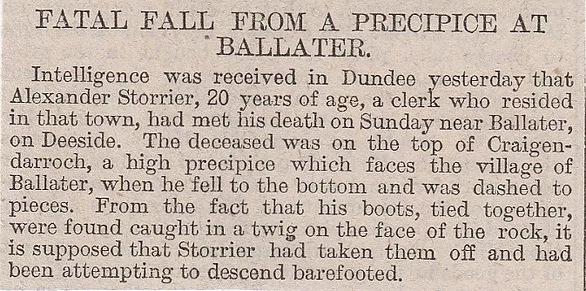
76/ Aberdeen Harbour Drownings, March 1885
Yesterday morning a fishing boat while about a mile off Aberdeen Harbour, was capsized in a squall and two of the five occupants were drowned. The names of the men lost were William Robertson and John Wood, both of whom were young men and married. The other three saved themselves by clinging to the boat until help reached them.
77/ Crichton Royal Institution, Dumfries, (Killed with a Cricket Bat) May 1897
The Crichton Royal Institution which a massive insane asylum near Dumfries, saw an awful tragedy. One of the inmates was lying down on a balcony when another one came up to him and smacked on the head with a cricket bat. The blow smashed the skull and he died straight away. The chap who killed the man had never shown any signs of violence before.
78/ Glasgow Husband Murder, January 1885
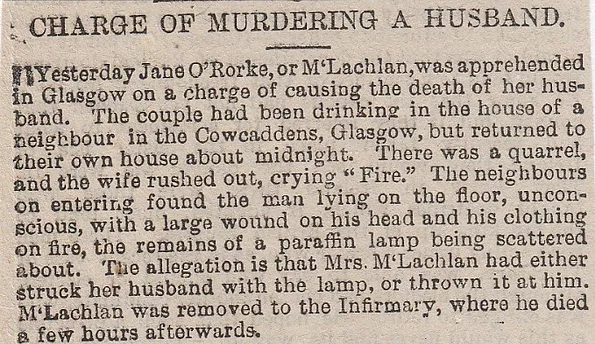
79/ Logie House Dark History, near Dundee, November 1904
This large mansion just outside Dundee has a dark history all of its own. It lay empty for over fifteen years and previously was owned by the notorious “Laird of Logie”, who incarcerated his Indian bride there, who was known as the Black Lady of Logie and this became his downfall which caused him to be tortured in India. They were not the only crimes in this house, as a flagstone was lifted up and underground was the powdery residue which are supposed to be remains of cremated bodies.
80/ St Rollox/St Vincent Pond, Glasgow, (Wall Collapse/Drownings) February 1885
Two men named McGowan and Kerr, while working in St Rollox district in Glasgow last night, were crushed to death by the fall of a wall. Last night, also two boys Joseph Mulloch and Francis Michael Connisky aged about four years, fell into St Vincent Pond in Glasgow and were drowned.
81/ Death at Colliery near Hamilton, May 1885
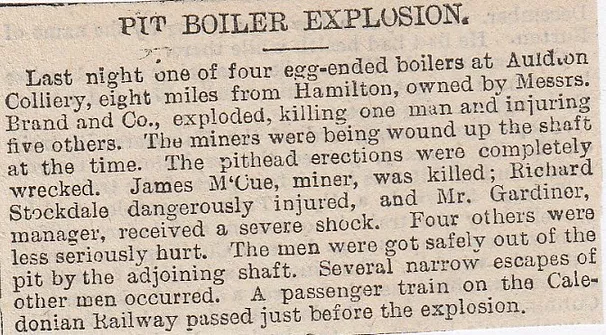
82/ Edinburgh, August 1885 (Sleepwalker Killed)
Yesterday morning the dead body of a young lady, residing in the aristocratic area of Edinburgh, was found in the area of the house where she lived. For some time back she had been in the habit, it is stated of walking in her sleep and on this occasion she had walked out at a window a fallen into the area. Much sympathy is felt for her relative’s. She was only twenty-years-old.
83/ Dumfries Asylum, (Manslaughter/Suicide) May 1884
A lunatic inmate named Hale escaped from Dumfries Asylum, died shortly after being re-captured by staff and attendants. The post-mortem showed that he had several ribs broken, so the keepers who caught him were ordered to be arrested for using too much force in his capture. One of the keepers fearing arrest, killed himself and the other has legged it.
84/ Edinburgh Culpable Homicide, May 1891

85/ Maxwelltown Child Murder/Suicide, April 1885
A woman named Maule, the wife of a gardener residing at Maxwelltown near Dumfries, administered poison to her two children yesterday afternoon and then took poison herself. The woman and one of her children died almost immediately. The other child is not expected to recover.
86/ East Lothian Sleepwalking Fatality, November 1906
Mr George Bain, a man in his nineties who was well known for fifty years as an East Lothian agriculturist, strayed onto the railway tracks while he was sleep-walking and was cut to shreds by the passing train.
87/ River Clyde (Two Drowned) June 1888

88/ Hope Street, Glasgow, (Fire Deaths) March 1885
A fire occurred on Sunday night in a tailors workroom at 263, Hope Street in Glasgow and yesterday it was discovered that two women who had been in the attic had been suffocated in the smoke. Both were persons of about fifty years of age. One was caretaker of the premises and the other was a friend who was visiting her.
89/ Whitehaugh (Suicide in Front of Wife) October 1841
Colonel Forbes Leith killed himself by shooting himself in the drawing room of his property, while his wife was watching. He returned from India and settled on his paternal estate about twenty years ago, then soon after got married. He leaves a widow and several children.
90/ Murchalls Suicide, June 1885
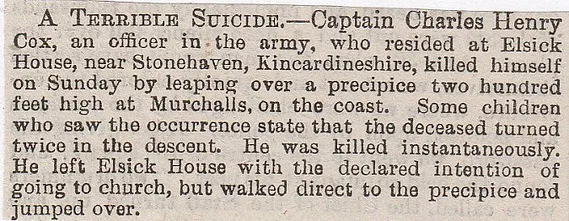
91/ Cobbinshaw Loch Corpse, August 1901
Two gentlemen fishing on Cobbinshaw Loch got their hooks caught on something which they couldn’t free themselves from. Finally, with brute force, they dragged up the heavy object and reeled in horror when they found it was the corpse of a decomposing male. A local mystery nine months ago, was the disappearance of a blacksmith and police consider that this is him.
92/ Glasgow Scaffolding Death, May 1899
On Tuesday evening, Henry Gilbert, a middle-aged plumber of Glasgow, lost his life while engaged in the rescue of a fellow workman, a slater named Harrison. Harrison cried that his scaffolding was giving way and Gilbert got on to the coping with a view to rescue, but the latter collapsed and he was killed on the spot. Harrison was subsequently rescued.
93/ Dalseairth near Dumfries, (Officer Shot Dead) September 1885
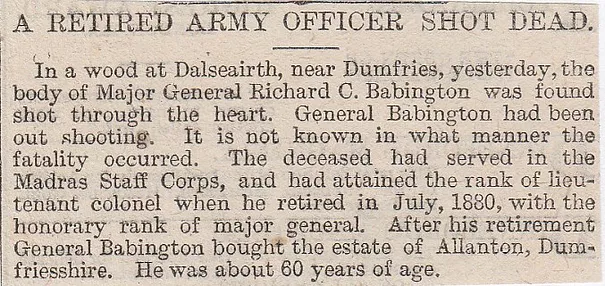
94/ Orkneys (Crew Lost) April 1887
The fishing boat Harvest Home, belonging to Hopeman, Morayshire, arrived at Buckie and reported the loss of four of the crew who were washed overboard during a storm which was encountered on Thursday afternoon off the coast of Orkney.
95/ Pollockshaws Road, Glasgow, (Ice Fatalities) January 1885
Two brothers-Charles Henry Smith aged seven and Thomas Robinson Smith aged eleven-were drowned last night while sliding on a pond in an old brickfield at Pollockshaws Road near Glasgow. The youngest boy went through the ice first and his brother lost his life in attempting to rescue him.
96/ Govan Goalkeeper Killed, May 1899

97/ Edinburgh Fatal Stabbing, November 1896
Andrew Douglas, a fifty-year-old baker, has been arrested on a charge of murdering John Mulvey, a labourer. Mulvey’s nephew was entertaining some lodgers at a party when Douglas complained of the noise and Mulvey objecting to his interference, words ensued and a fight resulted. Mulvey was subsequently found to have two wounds near his heart and he bled to death. Douglas, who after being ejected from the room just went to bed, was arrested. No witnesses saw a knife being used.
98/ Summerlee Iron Works, Coatbridge, (Burned to a Crisp) September 1902
An atrocious accident occurred at Summerlee Iron Works, when a young employee was literally roasted to death. He went to the top of Number Four furnace, with a barrow load of blue billy or purple ore and was emptying into the furnace when a volume of flame burst out, which set him ablaze. The suffering carried on for ten minutes or so and he died on the spot, but he was completely charred to a crisp.
99/ Glasgow Child Murder/River Clyde, September 1885
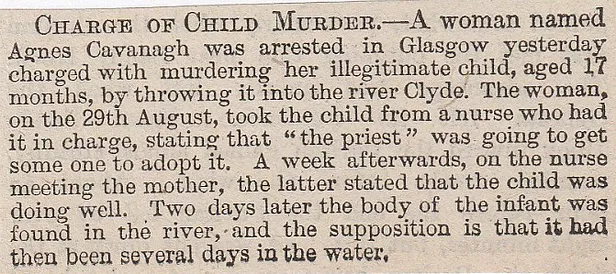
100/ Broxburn, (Blind Men Drown) April 1885
On Wednesday two blind men named Myles and Macheath, each aged forty years, fell into the canal near Broxburn and were drowned. They were walking to Glasgow.
101/ Coatbridge, (Tramp Buried in Molten Slag) August 1909
Gartesberrie Slaghill saw an awful accident occurred there when a group of tramps, who sleep there at night, had one of them buried alive. Robert Wotherwood and Patrick Burns were there one morning when a fresh load of hot slag was offloaded onto the pile. Burns woke up when he heard the noise and avoided a two-ton boulder rolling towards them. Wotherwood was caught amongst the molten mass and the boulder and was found dead later on.
102/ Eyemouth Harbour, April 1885
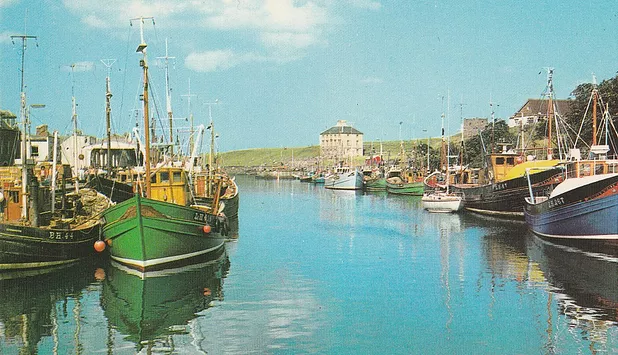
The welfare fishing lugger of Eyemouth has been totally lost south of Eyemouth harbour. Four of the crew were saved by the Eyemouth life-saving apparatus, but three were drowned.
The above view is a 1960’s postcard of a picturesque fishing village, but this little place has seen its fair share of disaster. Back in October 1881 most of the male population was drowned in a freak storm which hit the area. Houses were destroyed and all in all, 129 fishermen from Eyemouth vanished into the North Sea.
103/ Aboyne, Aberdeenshire, (Suffocated in a Chest) August 1900
A lad named Charles Thomson, son of a crofter went missing while at the farm of Balnacraig. Everyone thought he’d gone there with his father, who was visiting the place, but nobody saw him. Then after searching for days, his little corpse was found in a corn chest. He had crawled into it and then the lid had slammed shut and locked him in there to suffocate to death.
104/ Leith, (Skeleton in Pub) December 1875
A skeleton was discovered under the floor-boards of a public-house and they are thought to be the remains of a student by the name of Mackenzie, who suddenly vanished from the area some years ago. Police are trying to piece together the evidence in a hope that the mystery from a quarter of a century ago will have some bearing on the matter.
105/ Sanquhar, (Frozen to Death) April 1892
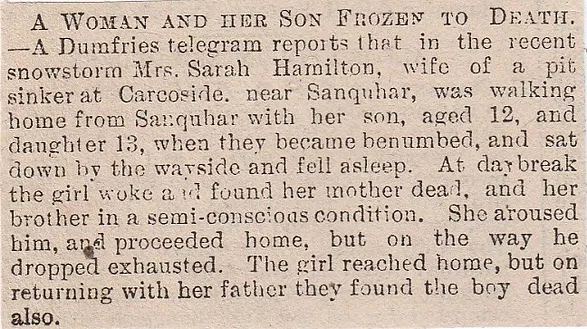
106/ Montgomery Street, Glasgow, (Fatal Fight) June 1899
A quarrel arose on Saturday night in a court off Montgomery Street in Glasgow between two men named Peter Foster and Thomas Jackson, both labourers. It is alleged that Jackson struck Foster a blow on the chest. The latter died a few minutes afterwards and Jackson was subsequently arrested.
107/ River Clyde, Glasgow, (Drownings) April 1899
Yesterday afternoon two boys named Garth and Miller, residing in Fielding Street in Glasgow, were accidentally drowned in the Clyde. One of the lads slipped from the bank and in endeavouring to save him, his companion was dragged in and also drowned. The bodies are being searched for last night.
108/ Bridge of Don, September 1898 (Golf Caddy Death)
A golf caddy at Balgaunie Links, Aberdeen, was found dead in a ditch at the Bridge of Don, with his body in a dreadfully mutilated condition and half of his face having been eating by rats and vermin. We can only guess as to how he died, but the top of the theory list is that he slipped and fell into the water, was knocked unconscious and remained that way until he was discovered.
109/ Muthill near Crieff, March 1892 (Weird Suicide)
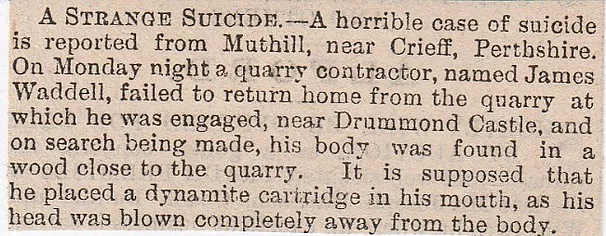
110/ Aberdeen Station Suicide, January 1905
A shocking discovery was made on the Caledonian Railway near to Aberdeen Station when a man’s headless body was found on the train tracks. He is estimated to have been in his mid-thirties and is being treated as a suicide.
111/ Dumbarton, (Suicide in Public) May 1834
A skipper of a vessel used for the coal trade betwixt Glasgow and Dumbarton had been drinking heavily one night and got involved in an argument. The next morning he felt some remorse, so he got a blunderbuss and rowed to his vessel which was on the Leven. In front of a crowd, he fired the gun into the air, as though testing it. Then he reloaded it and despite the cries of the people stood on the bank watching, telling him not to do it, he turned the gun on himself and killed himself.
112/ Dornoch (Body Washed Ashore)June 1895
At Dornoch, the body of Prose, one of two seamen belonging to Her Majesty’s ship Jackal who were drowned off the Dornoch rocks on May 21st last by the upsetting of a boat. He was found on the beach a few hundred yards from where the accident happened. Prose was thirty-one and was from Plymouth, where he leaves a widow and family.
113/ Gorebridge (Body in a Trunk) August 1896
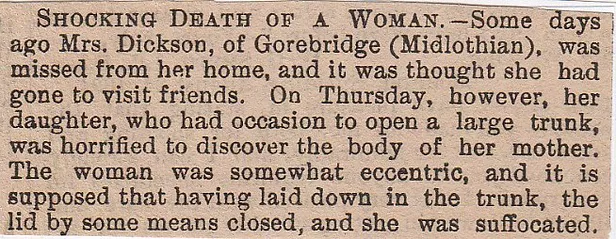
114/ River Nith, Dumfries, June 1899
Whilst bathing on Saturday in the River Nith at Dumfries, a young man named Robert Stewart, a joiner, was seized with cramp and drowned before any assistance could reach him.
115/ Musselburgh, (Body Washed Ashore) July 1885
At Musselburgh on the Firth of Forth, a young gentleman on a visit to the place, went with several companions to bathe on the beach. He got out of his depth and after struggling for several minutes, sank in the presence of an excited crowd of spectators, none of whom could render him assistance. His body was afterwards washed up on the beach.
116/ Calton, Glasgow, (Mangled in Cogs) September 1835
An accident occurred at Broomward Mill at Calton, when a young lass who worked there, leaned her back on the door of one of the rooms, which flew open and she then fell into the bare mechanics of the mill. While the cogs and wheels churned around she was slowly mangled to death, also being decapitated in the process. Her remains were put in a coffin and she was buried soon after.
117/ Forres, (Postmaster Suicide) June 1889
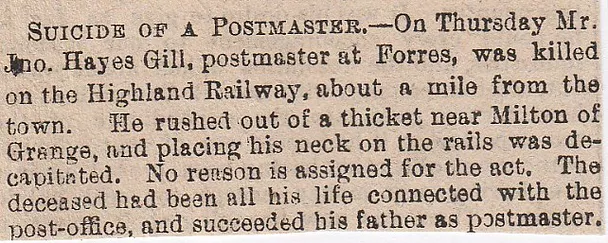
118/ Drumpellier Colliery, Coatbridge, (Cage Fall) April 1889
Three men were being lowered into the No.4 pit, Drumpellier Colliery at Coatbridge, when the engine-man in mistake wound the cage up instead of lowering it. The men sprang out, and one named McGinty, fell down the shaft about 140 fathoms and was killed. (Fathom- is approximately six feet or one metre eighty centimetres.)
119/ Dundee, (Crushed in Machinery) March 1885
A lad named Gordon Linton, fourteen-years-old, employed as a band boy at the Manhattan Spinning Mills in Dundee, met with a horrible death on Saturday. He was lying underneath a machine sewing a broken belt when his clothes became entangled by the moving machinery and he was crushed to death.
120/ Kingussie- Central Scotland, December 1852 (Devoured by Pigs)
John MacIntyre, a boatman at Kingussie Ferry, was taking some oats to the miller so he could grind them for him, when he was crossing a rather makeshift mini-bridge consisting of three planks of wood which led from the mill-bank to the mill itself, when he fell over and went straight into a pig-sty where two massive porkers were kept. While laid out cold on the ground the pigs devoured MacIntyre. He was taken out in a mutilated condition and was pronounced dead at the scene. The pigs were shot and buried.
121/ Glasgow, (Fatal Prize Fight) August 1889
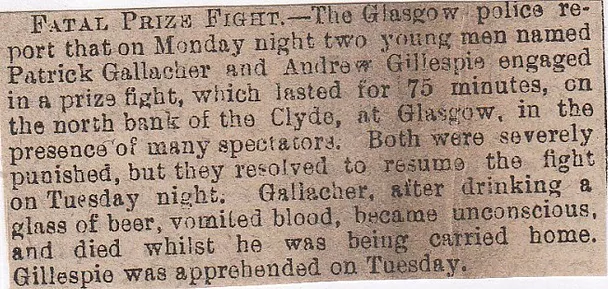
122/ Johnstone near Glasgow August 1889
Archibald McGough and John Mullen, iron-founders, quarrelled at their work at Johnstone near Glasgow a few days ago and it is alleged that Mullen struck McGough. The latter died on Tuesday and Mullen has been arrested. McGough’s father, a pensioner, fell dead on Tuesday night on hearing of the occurrence.
123/ Hayburn Street, Glasgow, (Slit Hubby’s Throat) March 1899
Mrs Pitcairn, wife of Thomas Pitcairn an engineer of Hayburn Street in Glasgow, yesterday attacked her husband with a razor and cut his throat so seriously that he was removed to the hospital. She immediately disappeared. Mrs Pitcairn’s mind was apparently unhinged by the death on Wednesday of a child.
124/ Renfrew Ferry/River Clyde, (Suicide?) August 1889
At Renfrew Ferry on the river Clyde, a cab-man named John Ross, for some unaccountable reason, drove straight into the water and he and the horse drowned. A boy who was on the box of the cab jumped off and thereby saved himself. It appears that Ross intended getting on board the ferry, but the boat was at the time on the opposite side of the river.
125/ New Row, Perth, (Murder) June 1895
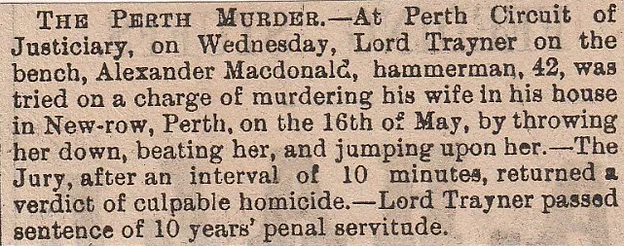
126/ Motherwell Music Hall, (Public Suicide) April 1884
This story is really creepy and no doubt the building is long gone. At a music hall in Motherwell, while a performance of “Babes in the Wood” was on stage, with 700 children in the audience, a 50-year-old man named Middleton who had brought his family to see the play, had taken his seat at the front of the gallery, with two of his children. When the play was well under way, he jumped up with a razor in his hand and shouted “That is a mockery, this is a reality”, then slit his throat in full view of the audience. Children and adults alike were screaming and heading for the exits, but the manager who had a cool head on his shoulders and remembering what had happened at Sunderland (in 1883 at Sunderland, 189 were killed in a mass panic), he managed to help and usher them calmly out of the doors. He helped up some children that had fallen and ordered the emergency doors opened.
Middleton’s wife said that before leaving he had said to her that he would be dead in two and a half hours. She kept looking in on him, maybe two or three times during the night and he was spotted sitting upright and alert. No sooner had she left the last time than the screaming began and she found out her husband had done what he said he would do. A question remains, that if your other half had said this to you before going out, would you leave your kids with him?
127/ Princes Street, Edinburgh, (Hotel Murder/Suicide) February 1899
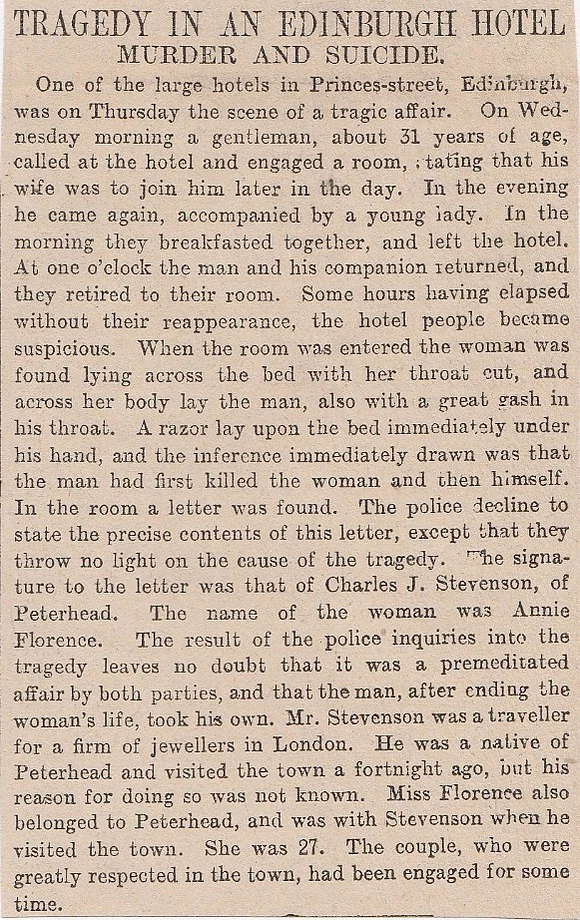
128/ Haywood Child Murder, near Lanark, August 1897
Jane Feeley aged twenty-eight was arrested for a probable child murder in the village of Haywood near Lanark. Neighbours were suspicious that something wasn’t quite right and when they showed up, she showed them a flashy substance in a bucket. They could hear something “hissing” on the fire and when they checked the coals, they found a baby’s body. It was thought to be an illegitimate baby boy she gave birth to, found with its head and chest badly charred. Feeley was taken in. This is her second child, but she is very poorly at the time of writing.
129/ Newton Stewart, (Murder by Lunatic) April 1899
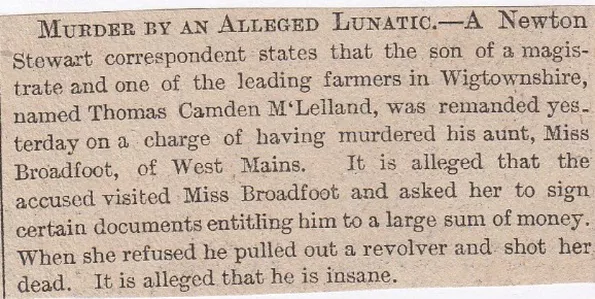
130/ Dunfermline, (U.S. Consul Suicide) March 1883
Mr William Yosts, a forty-two-year-old New York merchant, killed himself in the house of Colonel Myers, the United States Consul in Dunfermline. Yosts arrived at the property with General Spencer and was going to stay for a couple of days while touring around Scotland. They had breakfast together and then Yosts went upstairs to get dressed and after a little while, they heard the report of a gun. Colonel Myers went into his room and found him on the floor with a bullet wound to his temple. He had recently set the ball rolling for a divorce from his wife, but this was not successful and it had worried him since that time.
131/ River Clyde Collision, January 1890 (Six Dead)
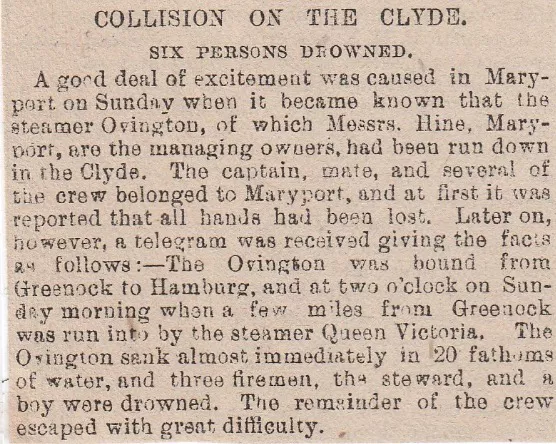
132/ Baillieston near Glasgow (Pit Deaths) November 1885
Two men were accidentally killed last night in one of the Provanhall Coal Company’s pit’s at Baillieston near Glasgow. The shaft of the pit is being made larger and while two men, Morris and O’Keefe were working on a scaffold, a large mass of loose stuff fell from the side of the pit, breaking the scaffold rope and precipitating them both to the bottom, many fathoms beneath.
133/ Earlseat (East Wemyss) (Suicide or Accident?) November 1865
Thirteen-year-old David Wishart committed suicide by hanging himself in an outbuilding on the farm of Earlseat, where he worked for a Mr Elder, a farmer. In an amazing coincidence, or possibly a copycat suicide, exactly eighteen months ago, a domestic servant killed herself in the exact same spot as Wishart. He had often asked about the girl and how she could do such a thing, so it is thought that he was re-enacting her death and it went horribly wrong.
134/ Rosemount Station Fatality, October 1885
On Thursday night, as a train was approaching Rosemount Station on the Caledonian Railway, Mrs Gibson aged fifty and from Dundee, opened a carriage door before the train had stopped. She fell between the footboard and the platform and was instantly crushed to death. She was returning from holiday.
135/ Dundee Gas Explosion, December 1900
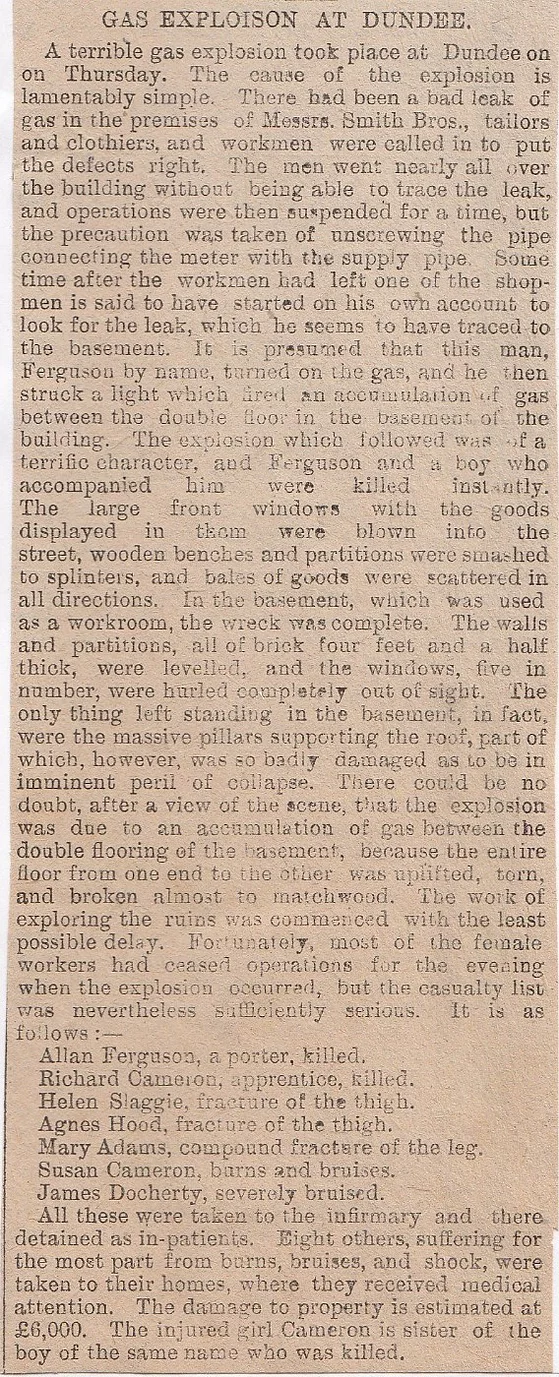
136/ Edinburgh Suicide, August 1872
A young man and woman walked into a house of ill-repute in Clyde Street in Edinburgh where they stayed until the morning. He had no cash, so he sent his lady friend to go and pawn his watch, then she came back with some money and then he asked a couple of fellow inmates to go out for a ride with him. All three got into the cab when he suddenly said that he’d forgotten something inside and was just going to pop back in and get it. they waited for a minute, then heard a gunshot. On running in to see if he was OK, they saw him prostrate on the floor with a gaping wound in his chest. During that minute or so, he had gone and destroyed all his letters and means of identification, but he left a lady’s portrait in a locket.
137/ Brunswick Street, Glasgow, (Gas Poisoning) April 1899
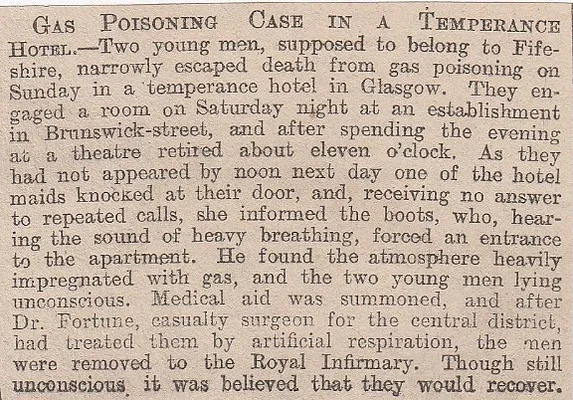
138/ Lochmaddy, North Uist (Outer Hebrides) (Body Dug Up) June 1879
A strange discovery was made at Lochmaddy on North Uist when some workmen were cutting peat not far from the village, when one of them unearthed the body of a smartly dressed gentleman. It hadn’t been there long as there no sign of decaying in the body, the shirt was still whiter than white and the polish on his boots was still visible. He was a stranger to the area and he was buried quite near to the beach. (Was he ever identified?)
139/ Ballochbine Forest near Balmoral, (Death of Gamekeeper) September 1885
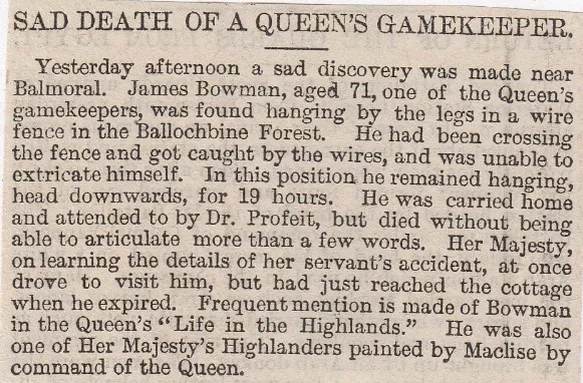
140/ Rattray, (Gamekeeper Shot by Master) October 1886
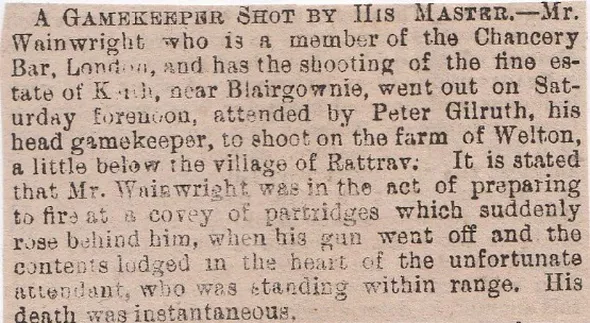
141/ Waverley Station Deaths, Edinburgh, February 1898
A skeleton scaffold erected in connection with the North British Railway Hotel being built at the Waverley Station in Edinburgh collapsed on Friday morning during a gale. The scaffold had been erected to the height of about a hundred feet and portions of a steam crane were being raised to the top by a hand crane, when a strong gust carried away the crane. Seven men on the structure and a number of men below were buried in the fragments. A bricklayer named Taylor and a labourer named Chandley were killed and three or four more were severely injured about the head and limbs.
142/ Salisbury Crags Death, Edinburgh, September 1885
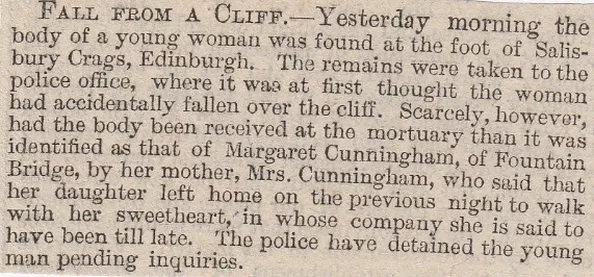
143/ Portobello Boating Accident, May 1899
A fatal boating accident occurred at Portobello near Edinburgh, in sight of a number of people who were spending the afternoon on the sands. Two of three young men who were thrown into the water by the capsizing of their rowing boat, were rescued by boats from the shore, but the body of the third, John Edgar aged twenty-one, a grocer from Prospect Street in Edinburgh, was carried out by the tide and was not recovered for two hours.
144/ Ruchill, Glasgow, (Potassium Cyanide Burns) May 1899
James Adams aged thirty-three, a benchman and George Smith aged twenty, a labourer, lost their lives at the gold-extracting works at Ruchill, Glasgow. The unfortunate men had been working near a retort in the shed, when, from some cause at present unknown, a quantity of potassium cyanide exploded, striking them in the face and burning them so severely that they both died shortly afterwards.
145/ Kilwinning, (Octogenarian Suicide) March 1898
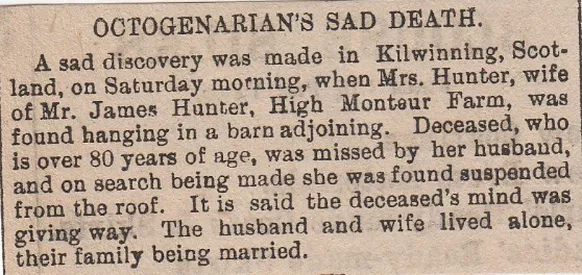
146/ Brackenridge Moss near Strathaven (Coffin Discovered) June 1887
During draining operations on the Brackenridge Moss, a roughly-made coffin was found and inside was a young man dressed in the fashion of a century ago. A large black Kilmarnock bonnet, blue jacket, blue knee britches and shoes with buckles. This is presumed to be the body of a herd lad who committed suicide while locked up in Strathaven gaol. The usual custom for the burial of suicides was that the laird had them interred in the moss and kept the spot a secret.
147/ Oban Yachting Fatality, September 1885
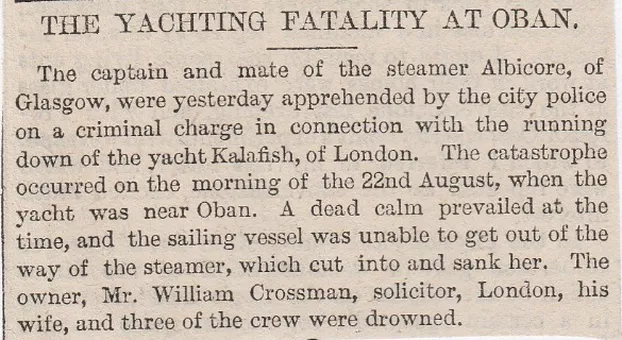
148/ Wemyss Estate (Body in Moss-Swamp) May 1898
A group of gamekeepers were in Moss Woods on the Wemyss Estate, when they were confronted by a man’s head sticking out of a moss-swamp, with the flesh having been worn away on the face and the lower half of the body was embedded in the moss. The decomposition of the upper portions of the body suggests that the unfortunate man has been there quite a while. It is believed he was a stranger to the district and got caught in the moss-swamp while venturing his way around taking a short-cut to Thornton Junction to catch a train and ended up there.
149/ Bo’ness (Borrowstounness) (Wife Murder/Suicide) May 1899

150/ Lochiel Deaths, January 1899 (Found a Loch Shiel, is that it?)
There was a terrible fatality on board the Glasgow steamer Wharfinger. It arrived at Lochiel (?) with some coal for the new extension of the West Highland Railway to Mallaig. It was freezing cold that weekend and the men battened down the hatches to try and keep the warmth in. The smoke from the stove was blown back in by the wind and two of the men were suffocated. They were Duncan Crawford and Patrick Keenar and there are another three, so badly suffocated, that they are not expected to live.
151/ Helensburgh Storm Fatality, November 1903
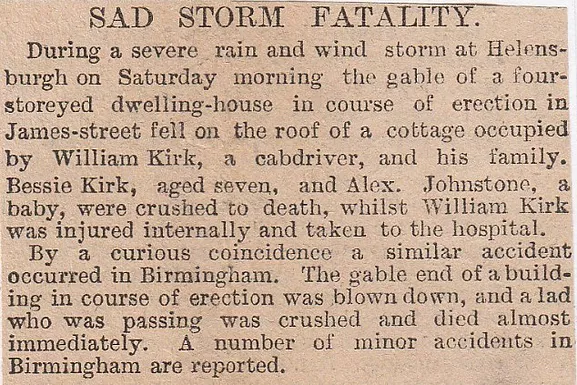
152/ Tay Bridge Deaths, Dundee, September 1902
A tragic accident occurred on the Tay Bridge at Dundee. While handfuls of painters were busy painting the high girders, whilst stood on a car which was on rails. The wind got up and the foreman gave the order to pack it in for the day. All of a sudden while they were packing up, a gust of wind struck the car, thrusting it at terrific speed along the line. They tried to stop the car when gravity took hold and it was thrown off, taking the men with it. Alexander Falconer and William Howie fell into the river, a distance of eighty feet and the current took them off. The others managed to grab hold of girders and hang on until help arrived.
153/ Barry/Buddon, (Death on Railway) August 1896
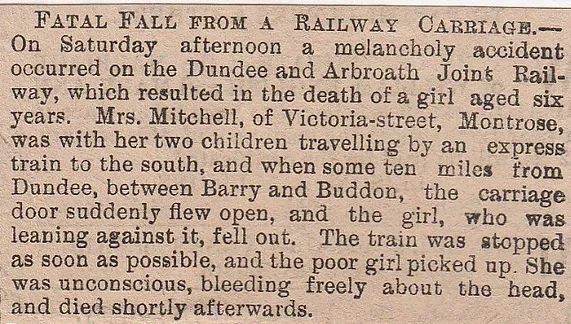
154/ Drybridge Station Suicide, (Kilmarnock) September 1847
A man by the name of Teale, who was station-keeper at the Gatehead Station near Kilmarnock, committed suicide at Drybridge Station on the Troon railway line after being fired from his job. Understandably, he was despondent at losing his employment, so he waited for the up train to arrive. Being told that he had missed it, he went along the tracks and waited for the down train, then threw himself in front of that. The driver slammed on the brakes and peeped his whistle but the two collided and the whole train passed over him. He lingered until the next morning, then passed away.
155/ Loch Fyne, (Regatta Drownings) September 1885
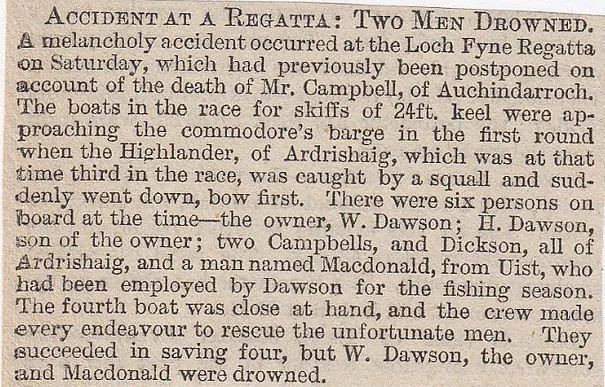
156/ Yetholm (Borders) (Brothers Suicides) August 1863
A story about two brothers who commit suicide on separate days in a small Scottish village on the Borders. The first was George Thomson, who along with his brother, Thomas, occupied Yetholm Mill. George killed himself by hanging in his own granary, the rope being attached to the rafters. Then came his brother Thomas, who although hanging himself by a rope around the neck, he went to the garrets of the dwelling house to do his rash deed. Thomas was being watched, as they thought he might do something similar to himself, but the attendant left him alone for a couple of minutes. Thomas swiftly locked the door, got the rope out and committed suicide. They both seemed happy in their lives with Thomas leaving a widow and family behind.
157/ Craigend Farm near Dumfries, (Fatal Accident) September 1885
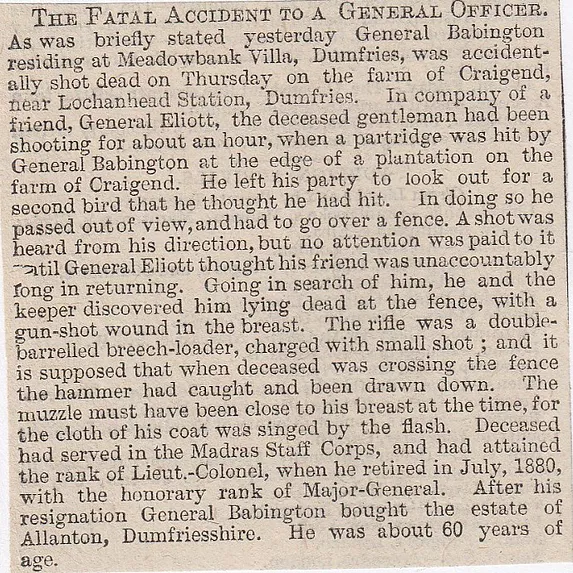
158/ Pollockshaws, Glasgow (Triple Murder/Suicide) March 1896
Mrs Ellen Hannah murdered her three youngest children- William, Daniel and James- all under the age of three years, by slitting their throats, then attempting suicide in the same way. Mrs Hannah had been married for nine years and had seven kids and had been in a state of depression for some time. The weird scene in this triple murder, was when she had just killed her kids, then slit her own throat and walked round to a neighbour’s house, drenched in blood and asked her to sharpen the knife for her. Not needing to be Sherlock Holmes to see that something was amiss, they went round and found the three dead children.
159/ Cromarty Firth (Three Drowned) September 1885
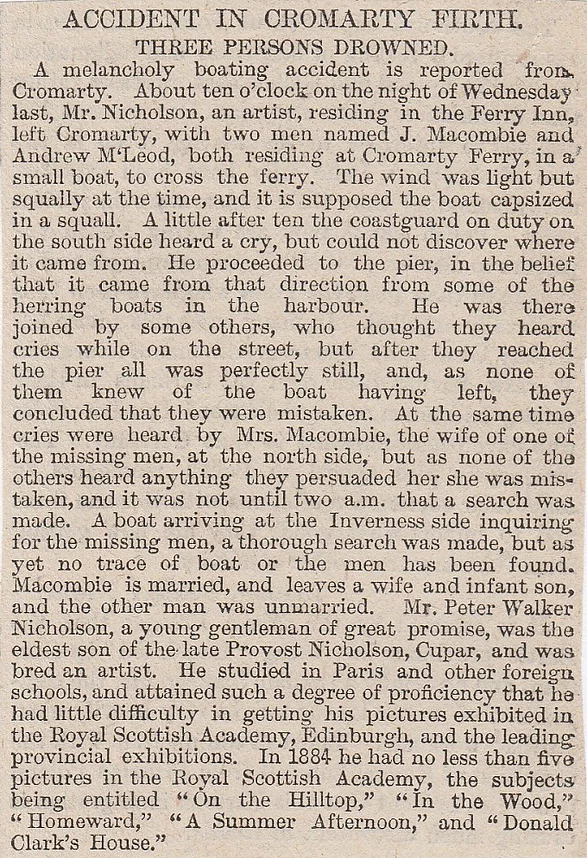
160/ Blair Castle Skeletons, Blair Atholl, March 1869
There was great excitement in the Blair Atholl district when it was apparent that three human skeletons had been unearthed at Blair Castle, the Duke of Atholl’s residence. It was the same old story of workmen digging up human remains while excavating in the vaults of the castle, in readiness for a new cellar to be built. They were about a foot and a half under the surface and were all fully grown men. There were no marks of violence and teeth were pearly white on the first one, but the second one which was the biggest had what looked like sword cuts behind the ears. The third was also unmarked in any way. The Duke sent for Dr Irvine to examine the bones and results are expected soon. (Who were they?)
161/ Dornoch/Golspie Railway Accident, (Mound Station) November 1885
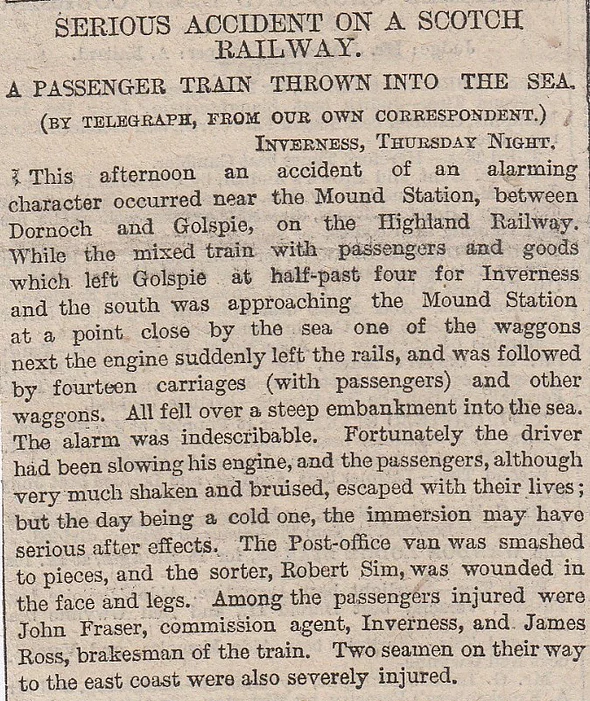
162/ Dalrymple/Ayr Asylum, (Viaduct Suicide) June 1875
This one is a straightforward story of a female lunatic in an asylum, who escapes and kills herself. Janet Goudie or McKenzie, lost her husband about eighteen months ago and since then she has been slightly doolally and kept on threatening to kill herself, so she was put into Ayr Asylum. After a couple of months there, she improved enough to be sent home again. Unfortunately, she had a relapse and was taken back to Ayr Asylum. Through sheer luck and a bit of cunning, she managed to escape and made her way to the railway viaduct which crosses a road near Dalrymple, where she climbed the parapet and dived off onto the road below. Death was instantaneous and she narrowly avoided squashing a passing pedestrian on the path underneath the viaduct. The victim was only in her thirties. (Is the viaduct still there?)
163/ West Calder Pit Shaft Deaths, March 1885
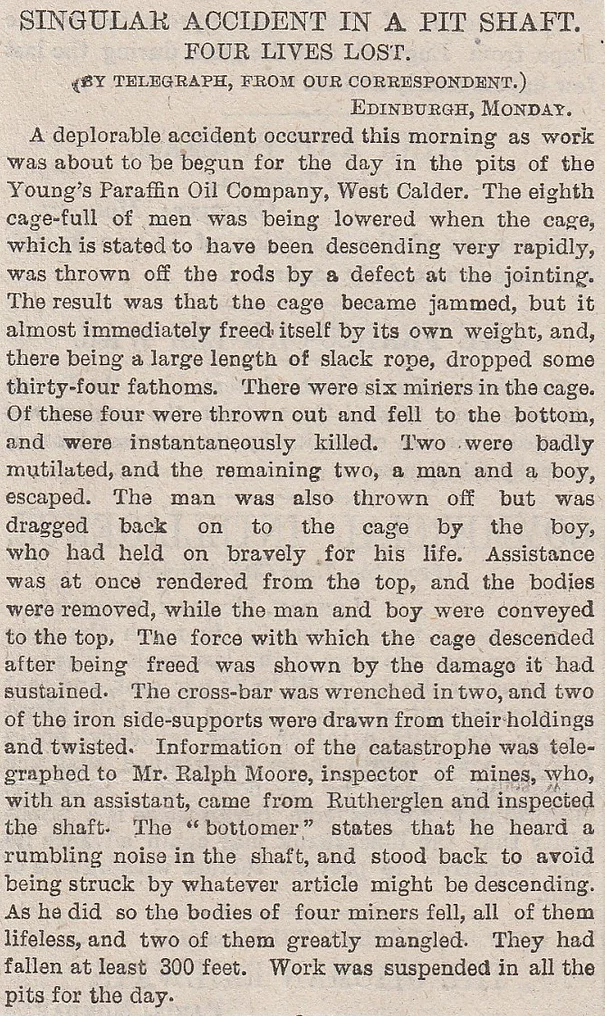
164/ Gilmerton Double Murder/Suicide, August 1899
The little mining village of Gilmerton was witness to a tragedy when one of its members poisoned two others and then themselves. The person involved was a forty-five-year-old widow, Mrs Milligan, who had two lodgers staying with her; one was an imbecilic German lad in his late twenties and the other was an octogenarian named Mrs Shaw. The neighbours called at the house but got no reply from any of the occupants, so fearing the worst they burst open the door and saw Mrs Milligan and the German already dead, with Mrs Shaw nearly at death’s door. A nearby doctor was sent for and he immediately put it down to opium poisoning, but the question was, which one of them had done it. That became clear when a note was found and it read:
” I can’t stand this any longer. Please leave the blame on Mrs Bruce, and don’t let her get the things in the house. Mrs Milligan”.
165/ Sound of Mull (Five Dead) August 1885
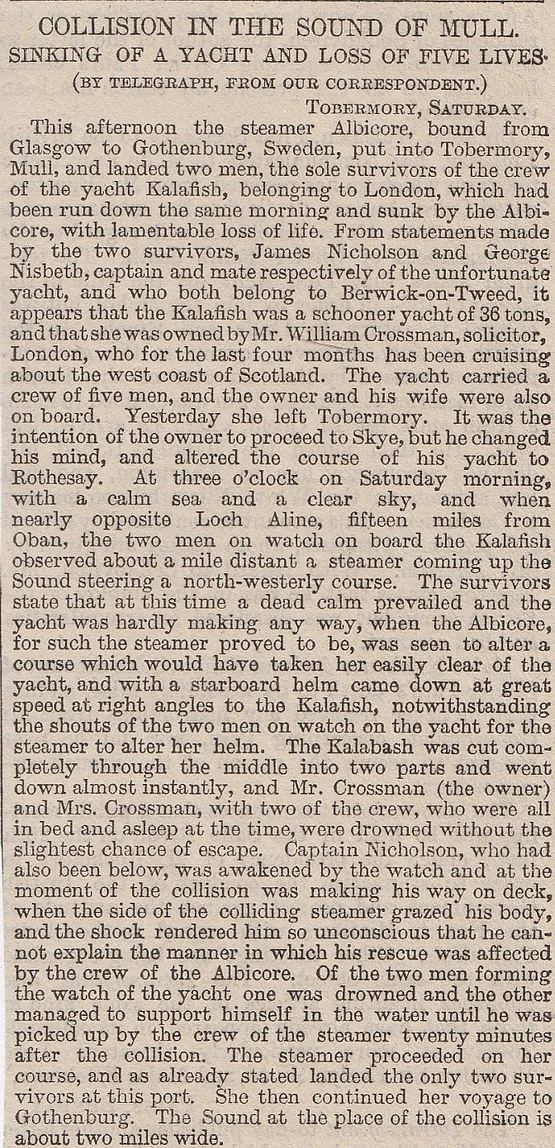
166/ Goodlet and Co Steam-Mills, Edinburgh, (Caught in Cogs) June 1830
Walter Munro, a mill carter, was returning to the lofts at about seven p.m. and instead of going through the normal passage, he went through another door which leads past the machinery, which by then was at full tilt. Nobody saw him, but his scream was heard shortly after entering and he vanished among the whirling cogs and wheels. They shut off the machine and they witnessed that he had literally been torn limb from limb. He left a wife and four children.
167/ Alexander and Co, Neilston near Glasgow, September 1885
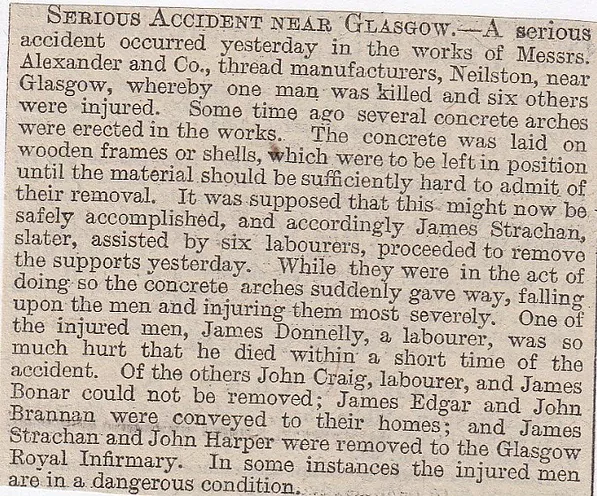
168/ Gartsherrie Ironworks near Glasgow, (Molten Iron Suicide) July 1851
How can I put this? This is freaky with a capital “F”. It happened at the Gartsherrie Ironworks near Glasgow, when a bloke walked in and just starts to saunter around the building, looking around the cauldrons and molten iron being poured out, when he told an employee that he had just tried to drown himself in the local canal but he said it wasn’t deep enough. This should have set the alarm bells ringing, but he continued to meander about the ironworks. He then climbed a ladder to the tunnelhead of one of the furnaces but before he could be stopped, he jumped off into the molten metal. He was burned to a crisp in an instant and even his remains, when found, were down to a fine powdery substance. While walking about the premises he had mentioned that he used to work there a long time ago, but as yet, he remains unknown.
169/ Rona Island, (Two Dead Shepherds) April 1885
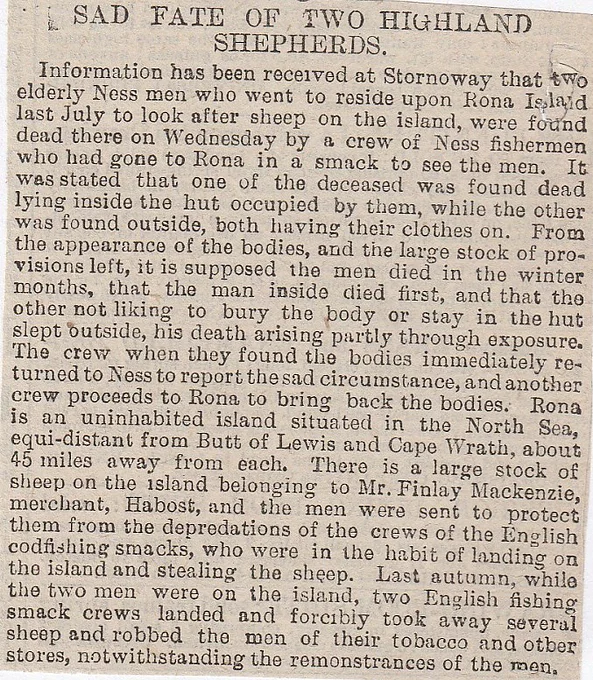
170/ Main Street, Coatbridge, (Children Burn to Death) November 1885

